
Germany > Munich > Free Munich Walking Tour Map
Top 10 Munich Tips | Suggested Itineraries For Munich
- Top 10 Things To Do
- Old Town Walking Tour
- English Garden Walking Tour
- Oktoberfest
- Dachau Memorial
- More Sights
- Overview & Dates
- Top 25 Oktoberfest Tips
- Best Beer Tents
- How To Dress
- Most Popular Songs
- Table Reservations
- Beer and Wine Tips
- History Of Oktoberfest
- Best Day Trips
- Helpful Tourist Tips
- Suggested Itineraries for Munich
- Transportation Tips
- Historical Overview
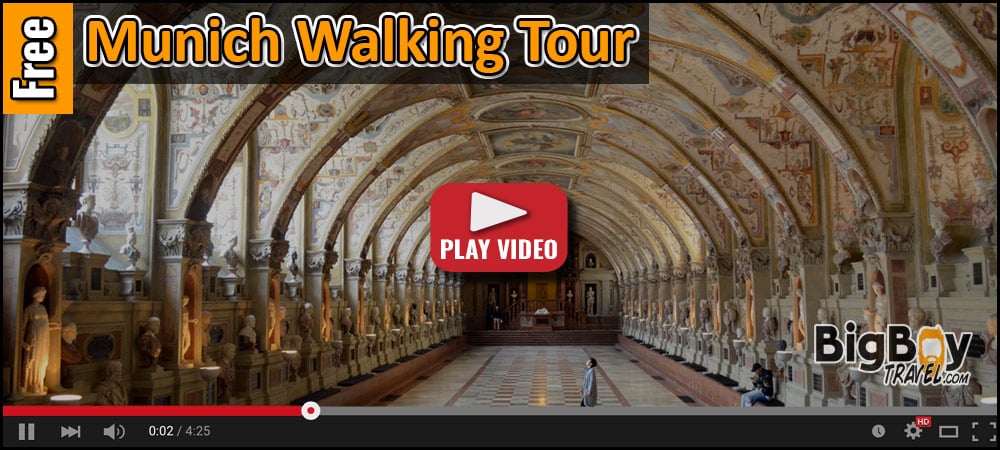

Free Munich Walking Tour:
Walking Tour Location : Old Town Munich ( Altstadt ) Cost : Free, Self-Guided ( Museum and sight costs below ) Style : Do-It-Yourself Walking Tour ( Self Guided ) Start : Karlsplatz Stachus Square & Metro Stop End : Hofbräuhaus Beer Hall & Restaurant Walking Distance : 2.5 miles Time : 90 Minutes for Walk ( Full tour 6+ hours with all stops ) Fun Scale : 9.5 out of 10
Munich’s compact Old Town is one of our favorite places to walk in Europe. Primarily geared toward pedestrians, the neighborhood truly is where old meets new and is a perfect setting for a free walking tour. Originally surrounded by a series of Medieval walls, you still enter Old Town Munich through the mighty city gates. Once inside you’ll experience great shopping mixed in with historic beers halls, amazing museums, and even a royal palace. The Bavarian atmosphere is very predominate everywhere you turn which adds to the fun of our free Munich walking tour.
To help you maximize your time in this wonderful city we have put together the perfect self-guided walking tour of Old Town for you. We go to Munich often, and this walking tour will make sure you hit up all the must-see attractions along with a couple of hidden gems. Enjoy our free Munich walking tour map!
Historical Overview of Old Town:
Settled by Benedictine Monks in the 700s, Old Town Munich is full of rich history. While Munich ( München ) means “by the monks”, you’ll see a lot of Lion Statues on this Old Town Munich walking tour because it was officially founded in 1158 by Henry the Lion. Early-day Munich was less than 1 square mile centered on Market Square and was surrounded by a gated Medieval wall.
As a growing trading power, Old Town Munich tripled in size by the 1300s and was surrounded by a larger wall with a wide moat to protect the booming city. The expansion of Old Town was largely fueled by Munich’s Wittelsbach family who took over ruling Bavaria in 1180 and quickly moved the capital from Regensburg to Munich. The powerful family formed an imperial dynasty through the year 1918 and even produced multiple Holy Roman Emperors along the way. Old Town Munich quickly became known around Europe for its museums, its beauty, and of course its festive beer halls.
Dark days came upon Munich after Hitler helped form the Nazi Party here starting in 1919 which eventually led to Old Town being heavily bombed in World War 2. Luckily as the new modern Munich rose out of the ashes, many of the historic sights were persevered or rebuilt. Today, Old Town Munich has a ton of great attractions and an unbeatable atmosphere to keep you coming back again and again. The sights on this free Munich walking tour will help you experience true Bavarian charm as you fall in love with Munich.
1. Karl’s Square – Stachus ( Karlsplatz ):
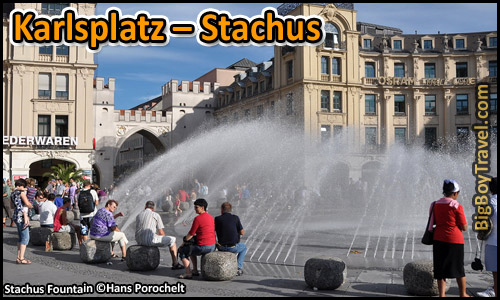
About Karlsplatz : We love to start our free Munich walking tour by entering one of Old Town’s city wall gates which date back to Medieval times. Our favorite gate is the castle-like New House Gate ( Neuhausertor ) on the Westside of Old Town near Karlsplatz Square. This lively square has been the primary Western entrance into Munich’s Old Town since the original Inner City Wall ( Innere Stadtmauer, built 1156-75 ) was expanded into the Outer City Wall ( Äußere Stadtmauer, built 1285-1347 ) to fit a rapidly growing city.
First built as a single tower gate called New House Tower ( Neuhauser turm ) in 1302, this was one of 4 main gates making up Munich’s new outer boundary. The entrance you see today was added right in front of the of the tall tower in 1337 as part of a new double-walled ditch which opened up to a wide protective moat that surrounded the entire city of Munich. The only way to access the New House Gate was over an impressive drawbridge that spanned the length of the current Karlsplatz Square until a stone bridge replaced it after the 30 Years War in the 1600s ( See Photo ). Following this post-war expansion, there were a total of 8 main gateways into the City Wall and almost 60 watchtowers scattered throughout Old Town Munich.
Most of the Western section of the city wall was later removed by Elector Karl Theodor in 1791 to make way for an expanding and modern city. With the wall section removed and the moat filled in, Karl gave the newly formed square and old New House Gate a facelift which both came to bear his name ( Karlstor & Karlsplatz ) after his death in 1799.
While Karl ( reign 1777-99 ) did leave a positive mark on Munich by turning the royal hunting grounds as the English Garden park and expanding salt mining in Bad Reichenhall, he was widely unliked as a Wittelsbach-cousin outsider imported from the Netherlands. One of his missteps was ending the beloved Scarlet Horse Race ( Scharlachrennen ) in 1786 which had been held outside the city walls near today’s Karlsplatz since 1448. Karl also ended other local celebrations like the annual Butcher’s Leap which didn’t help his popularity with the commoners.
Because locals thought of Karl as an unfair ruler, they started calling the square by its nickname Stachus Square instead, after the Beim Stachus Pub that once stood near the New House Gate. Notice how we prefer to call the gate by its original name of New House instead of Karlstor. The tall central watch tower just inside the New House Gate was turned into gunpowder storage in the 1800s and remained standing until an explosion blew it up in 1857.
After devastating WW2 bombings, Karlsplatz Square required a ton of renovations, but has since turned into one of Old Town Munich’s focal points. Part of the re-build incorporated three boy musician statues under the gate’s arch which came from the Market Fountain ( now the Fish Fountain ) in Munich’s main square which was also damaged in the war. Huge retail centers now flank the New House Gate and overlook a sprawling fountain . The fountain shoots dozens of water jets high into the air and is a popular attraction for people of all ages, especially kids. In the Winter months, the fountain even becomes an ice skating rink.
Our favorite fountain in Munich called the Fountain Boy ( Brunnen Buberl ) , sits just inside the New House City Gate. This playful fountain was originally built in the middle of Karlsplatz Square in 1895 before being moved to the pedestrian zone right before the 1972 Olympics. The fountain depicts a naked boy shielding his face as Satyr ( a drunk Greek woodland God ) spits water at him. Citizens were initially mad that a leaf didn’t cover the boy’s privates, but it has become the most popular fountain on this free Munich walking tour. Photos : ( Gate in the 1600s | Inside of Gate in 1700s ). 360 Degree Panoramas : ( During the Day | At Night ).
2. Citizen’s Hall Church ( Bürgersaalkirche ):
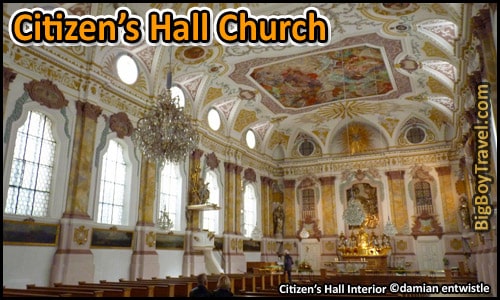
About Citizen’s Hall : Built in 1709, the Citizen’s Hall ( Bürgersaalkirche ) building has been a famous meeting and gathering point through the centuries. The bright pink facade of Citizen’s Hall really stands out among the neighboring buildings, but it is the interior’s gold-accented alter that truly shines. The alter and painted frescoes were added in 1778 when the Citizen’s Hall was converted into a church . Although it was heavily damaged in WW2 and largely rebuilt, the church now looks almost exactly like it did in the 1700s thanks to renovations.
On October 17th, 1810 mass was held at the Citizen’s Hall ( Bürgersaalkirche ) followed by a procession out of the city gates where a horse race was held for the 5th and final day of Prince Ludwig I’s wedding celebration. The race was attended by 40,000 spectators and was the start of the modern Oktoberfest festival. The tradition of the procession to the grounds from old town Munich still takes on Oktoberfest’s opening weekend.
The religious artwork inside Citizen’s Hall Church underwhelms many visitors, but it does have some wonderful pieces. The best works are the reliefs on the altar, an interesting series of paintings on the nave walls, and an angel statue near the entrance you’ll for sure love. History buffs will want to visit the lower level of the church for the tomb of Rupert Mayer , a famous Jesuit priest who stood up to the Nazis occupation. Photo : ( Interior ). Church Website : ( HERE ).
3. Richard Strauss Fountain :
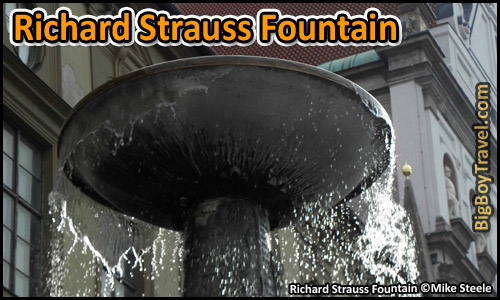
About The Richard Strauss Fountain : Often missed by tourists, the 18 foot tall Richard Strauss Fountain was designed to pay tribute to the composure’s most famous opera, Salome . Strauss was born in Munich in 1864 and is one of the city’s few iconic musicians from his era which was dominated by cities like Salzburg, Berlin, and Vienna. His composing talents made him the Kapellmeister of Munich by age 22, long before Strauss’ opera Salome was released in 1905.
The six different carved reliefs around the fountain’s column each depict a different scene from Salome. The water pouring down the column from the large bowl above is supposed to symbolize the final dance in the opera called the Dance of the Seven Veils. While most people walk right by the wonderful fountain without inspecting it, examining the details close up will help you appreciate its beauty.
One really interesting note about Richard Strauss is that his ancestors started the Hacker Brewery in Munich back in 1417. In the late 1700s, Strauss’s paternal grandfather Joseph Pschorr bought out other relatives and even opened a second brewery called Pschorr next to the home Strauss was born in. These two breweries later merged as Hacker-Pschorr and are now sold worldwide in addition to their beer halls and Oktoberfest tent in Munich. Note that we will be ending this free Munich walking tour at the most famous brewery in town, the Hofbrauhaus. Photo : ( Fountain With Tourists ).
4. Saint Michael’s Church ( Michaelskirche ):
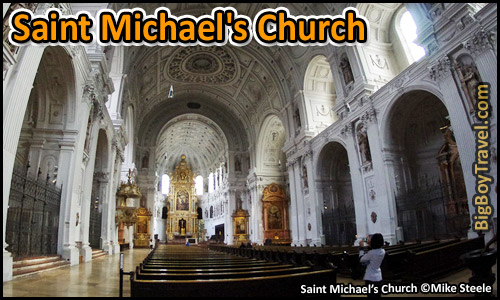
About Michaelskirche : As you approach the doors of the massive Saint Michael’s Church, a gleaming bronze sculpture of the Archangel Michael fighting a demon-like Protestant peers down at as you. Completed in 1588, the beautiful sculpture signals to the religious conflicts of Munich’s past. This work is the only part of the Church’s original facade that survived the heavy Allied bombings during WW2. The other rows of re-created statues on the front of the Church portray the Counter-Reformation , an anti-Protestant movement in the late 1500s which Saint Michael’s Church was the center of.
As you explore Saint Michael’s, the huge interior under a barrel-vaulted roof reaffirms the claim that it is the largest Renaissance church North of the Alps . Saint Michael’s Church is so grand in size that it actually served as the head of the Catholic Church’s Counter-Reformation efforts in the 1500s. Because of damage from the war, Saint Michael’s Church doesn’t have the same over-the-top stucco interior as many other churches in Munich have, but its size and historic value make it worth a quick stop.
Today the Church’s main attraction is the Royal Crypt which holds 40 decorative tombs mainly of the Wittelsbach family who ruled Bavaria from 1180 through 1918 AD. Of the royal tombs, the most visited is that of “ Mad” King Ludwig II . Ludwig was disliked in his day for being disconnected from the people and for being an over-spender, but is loved today for the numerous castles and palaces he built. One of this castles, Neuschwanstein Castle, is so beautiful that it inspired Walt Disney to make his version of Snow White’s Castle.
Church Hours : Daily 9am-7pm; Thursday open until 845pm; Sunday open until 10pm. Crypt Hours : Monday-Friday 930am-530pm; Saturday 930am-230pm. Cost : Church Free, Crypt 2 euros. Church Website : ( HERE ).
5. Saint Anna’s Church ( Damenstiftskirche ):
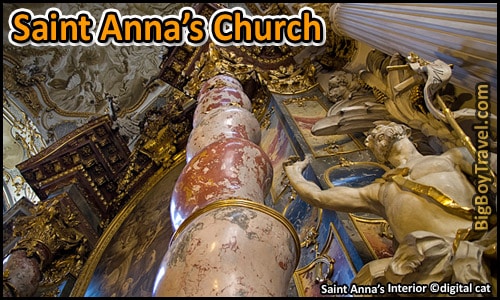
About Saint Anna’s Church : The exterior is so plain that you could easily miss the grand interior of Saint Anna’s Church ( Sankt Anna ). There has been a chapel here continuously since 1440 which later became a Gothic church with a small convent. In 1735, the old Gothic church made way for today’s Ladies’ Pin Church ( Damenstiftskirche ) . Since Medieval times, a Ladies’ Pin was a convent-like foundation for unmarried noblewomen and widows to devote themselves to without giving full vows as nuns.
If you are confused by the church having two names it is because Ladies’ Pin is often referred to by its nickname Saint Anna’s Church after Princess Maria Anna of Saxony ( 1728-1797 ) who served as the abbess after her husband died in 1777. The beloved Anna was the Princess of Saxony and Poland before her marriage to Maximilian III also made her Electress of Bavaria.
The highlight of the Saint Anna’s Church was the amazing interior done by Munich’s famous Asam Brothers during the 1735 rebuild. The brothers became world renown church builders for their over-the-top stucco interiors. We will see the Asam Brothers’ home and elaborate show house church later on this free Munich walking tour.
During WW2 the interior of Saint Anna’s was badly damaged including the frescoes and stucco work. While the interior has been masterfully restored you can tell the newer work based on its color. Because they only had black and white photos to work off of in during the post-war restoration, many of the murals were given a sepia tone instead of guessing on the original colors. The result is not quite the over-the-top antique grotto feel the church originally had in the 1700s, but the interior is still very beautiful. Today grounds of Saint Anna’s former convent serve as an all-girls junior high school.
Church Hours : Doors are usually unlocked Dawn-Dusk and even if the nave is closed you can still see the interior through a large grate inside. Cost : Free. Photos : ( Entrance Doors ). Address : Damenstiftstraße #1.
6. Asamhof Passage :
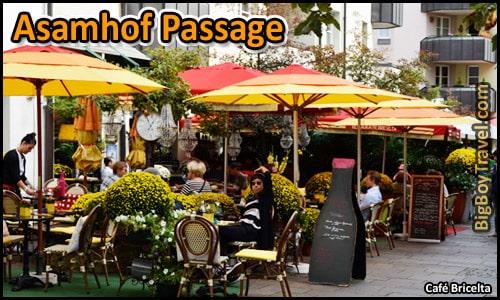
About Asamhof Passage : Walking South of Saint Anna’s Church you’ll pass an amazing tree sculpture and then come to pedestrian corridor known as the Asamhof Passage. This restaurant-lined alley is a hidden gem on Munich as it is filled with umbrella tables and tons of flowers. Most of the restaurants stay open year round and have indoor seating in the Winter. Our favorite place to eat in the passage is Café Bricelta ( website ). As you walk the alley there are a number of cool statues which were added during rennovations to Asamho in the 1980s. The most playful statue is that of a homeless man slumped over on the curb from 1982 called The Cold Night ( Die kalte Nacht ) .
7. Saint Johann Nepomuk Church ( Asamkirche ):
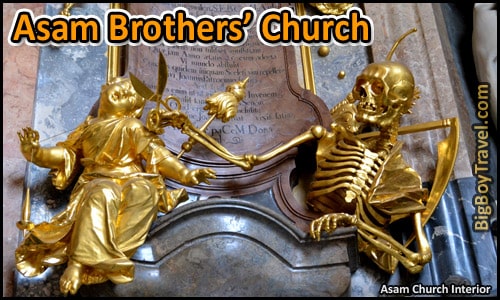
About Asamkirche : WOW! At just 30 feet wide, this is truly one of the most amazing church interiors in the World. In 1740, the famous Asam brothers moved into the house next door and started building their main showroom church. The brothers were known for over-the-top Rococo interiors and spared no lavish details with what is considered their masterpiece. Officially named after St John of Nepomuk, the church is commonly known today as Asamkirche ( pronounced Ah-Sham Kear-Sha ).
Your experience starts with a breath-taking artistic facade complete with the figure of St. John of Nepomuk looking down from above 20-foot-tall large wooden doors. Saint John of Nepomuk was a Christian priest who was tossed off the St Charles Bridge in Prague to die when he refused to tell the King secrets he had promised to keep private. He has since become a symbol of integrity and keeping your word and was the favorite Saint of Asam brothers.
The dark Baroque interior is ornately decorated with stucco, gilding, and paintings to the point where it almost looks like it is right off of an opera set. As you enter the church, a golden skeleton figure representing death cuts a man’s string of life reminding us all that no one escapes death. The entire focus of the storybook interior funnels to a bright golden window meant to feel like the eye of God staring down at you.
It is amazing that the brothers fit so much detail into a church that only holds 12 pews. Living in the neighboring house, they even made sure the high altar was visible from their bedroom rooms. The finished work left quite on the impression on congregation representatives from around Europe who would come on private tours and place orders for the Asam brother’s to build new churches for them.
Hours : Daily 9am-5pm, often until 6pm in the Summer. Saturday-Thursday 915am-6pm. Cost : Free. Photos : ( Exterior | Interior Ceiling | Interior Wall | Asam House ). Address : Sendlingerstraße #62.
8. “ New ” Sendlinger Gate ( Sendlinger Tor ):
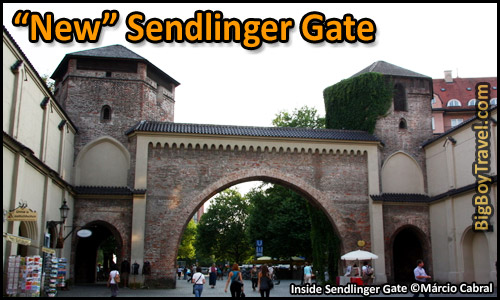
About Sendlinger Tor : Munich’s first city wall expanded here in the late-1200s marked with a tall multistory central gate tower. Although the original city gate 4 blocks to the Northeast was already called Sendlinger Tor, this new tower retained the same name because it was on the important Sendlinger Road . This road was a main trade route in Medieval times and led from Munich to Italy.
Sendlinger Tor’s two brick towers you see today were built in 1318 and remain the oldest part of the 3 city gates still standing in Munich. The towers were added in front of the central tower as part of a double wall surrounded by a moat complete with a large drawbridge. The gateway was further fortified in the 1600s including the drawbridge being replaced by a hefty stone bridge.
Today the mighty brick gate is beautifully covered in vines and leads visitors into a series trendy shops. Just outside the gate is the famous Sendlinger Tor Film Theater. Opened in 1913, this vintage theater shows new release movies, however, the movie posters are still painted on just like the early days of film. Photos : ( Gate in the 1600s | Gate in the 1600s close up | Back of Tower in 1805 ).
9. Munich City & Jewish Museums :
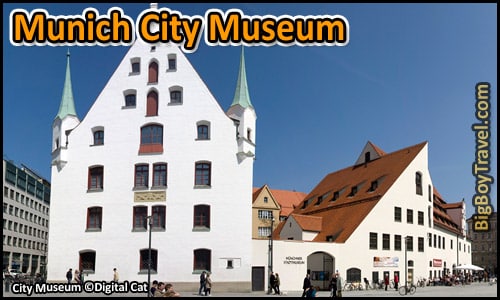
About The Museums : Sitting inside a former 15th Century city arsenal, the Munich City Museum ( Münchner Stadtmuseum ) is one of only a few museums worth a stop in Munich. The museum highlights all periods of Munich’s history, from its monk origins, the numerous fires, its time as the seat of Bavaria, the growth of the Nazi Party, and the effects of WW2. One of the coolest exhibits at the City Museum is one that traces the past 200 years of Oktoberfest. While a lot of exhibits are seasonal only, the Museum still makes for a great look into Munich’s culture, especially on a rainy day.
Sitting right next door to the City Museum is one of Munich’s hidden gems, the Jewish Museum . The first Jewish museum in Munich opened back int 1928 and it was housed in a very cramped house. This was around the same time that Hitler started forming his Nazi party and through the horrors of the Holocaust it is amazing that items still remain to display today.
The current Jewish Museum and was opened in 2007, 69 years after the Nazis tore down Munich’s synagogues. It is modern looking building is filled with great exhibitions centered on Jewish history in Munich. Instead of feeling like a Holocaust museum, the Jewish Museum is more like a cultural learning experience. This is a great stop especially if you plan on visiting the Dachau Concentration Camp Memorial while in Munich.
Visiting Hours : Both run Tuesday-Sunday 10am-6pm. Admission Cost : They are each 4 euros, but if you go to the City Museum you get the Jewish Museum half off. City Museum Website : ( HERE ). Jewish Museum Website : ( HERE ).
10. Old Cattle Market Square ( Rindermarkt ):
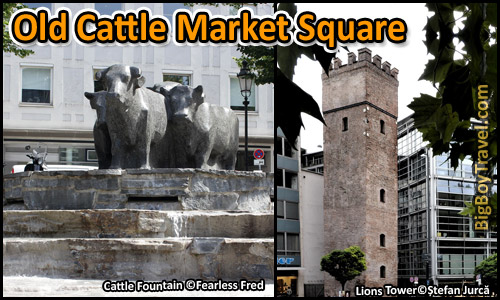
About Rindermarkt : Serving as City’s main cattle market in Medieval times, Rindermarket was built at the Southern entrance of Munich’s original city wall. Dominating the square was the initial Sendlinger Tower Gate ( Sendlinger Tor ) which was built in 1175 and served as an important trading crossroads because Sendlinger Straße was the main road out of Munich toward Italy.
By the early-1200s this section of the city wall already had to be slightly expanded and bubbled out along Rosenthal Street. This expansion included another small gate called Rose Tower ( Rosenturm ) and a seven-story-tall brick water tower called the Lion Tower ( Löwenturm ) . The impressive Lion Tower still survives today because in the 1500s it was incorporated into a large stately home to provide water for its garden. It had almost been completely forgotten about until bombing in WW2 ruined the home and revealed the tower once again.
A citywide expansion of Munich’s original wall from 1285 to 1347 pushed this section outward 4 blocks and included the building of the New Sendlinger Tower Gate. Parts of the Old City Wall were removed to make way for a larger cattle market surrounded by new homes for some of the wealthiest tradesmen in Munich, but the Interior Sendlinger Tower was left standing.
One of the wealthiest traders to live near the Cattle Market Square was the salt merchant Johann Baptista Ruffini who Interior Sendlinger Tower from the City in 1708 and built his house right night to it. The tower later became known as Ruffini Gate ( Ruffiniturm ) in his honor until it was torn down 1808.
In the late-1800s the city bought back the property and had a design competition to rebuild Ruffini’s home. The winning design was completed in 1906 and was comprised of 3 different styles of family homes joined together around a triangle courtyard. The result was almost perfect and the facade of the Ruffinihaus is one of our favorite buildings in Munich. The tombstone of Johann Baptista Ruffini can be seen on the outside walls of Saint Peter’s Church which we will visit on our next stop of this free Munich walking tour.
Make sure to check out the large cascading Cattle Market Fountain ( Rindermarkt Brunnen ) before leaving the square. It built in 1964 in honor of the old cattle market and is completed by numerous cattle figures. Photos : ( Ruffini Tower in the 1600s | Rose & Lion Towers in the 1600s ).
11. Saint Peter’s Church ( Alter Peterskirche ):
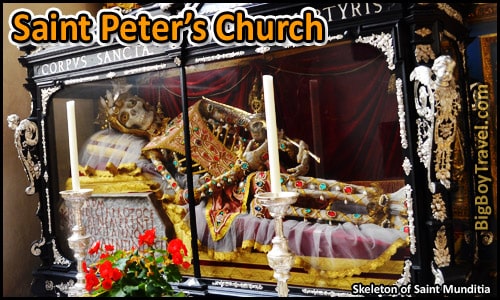
About Saint Peter’s Church : Saint Peter’s Church is the oldest parish in town and pre-dates the city of Munich itself. In the 700s a group of Benedictine Monks were the first to settle here and built modest monastery and chapel on what they called Saint Peter’s Hill. Not only did this define the Munich’s location, but the name München is literally derived from Mönch, the German word for monk, basically meaning Monk Settlement. The city of Munich was officially founded in 1158 when the Monks are given permission by Henry the Lion to hold a market.
After the Wittelsbachs took over Bavaria in 1180, the first permanent Saint Peter’s Church was built in a Romanesque style. This new wooden church latest until 1327 when it burned down and was replaced with a larger Gothic style church complete with 2 large bell towers. Shortly after the Gothic reconstruction, the 1st public clock in Munich was installed on Church.
Saint Peter’s Church was greatly damaged once again in the 1400s and the twin bell towers could not be saved. Instead of rebuilding, they added a new Renaissance steeple between the former twin towers and slanted their tops to match the roof line which you can still see today. Even more clocks were added to this new steeple with 2 on each for a total of 8 to ensure you could see the time no matter where you were. The steeple bell tower even got a balcony in the 1600s which allowed it to become an important fire lookout until 1936.
Today you can climb up to get an amazing view of Munich from the fire balcony if you are willing to hike up 306 steps . You will even be able to see far away sights to the North such as Olympic Stadium on a clear day. The view will also help you get a lay of the land for the sights on this free Munich walking tour map.
Make sure to explore the richly decorated interior of St Peter’s Church, its gold-laced giant Alter, and even a skeleton? That’s right, not only is there a Reliquary with a ton of assorted bones/skulls, but also the almost comical, gem-covered skeleton of Saint Munditia . Housed in the 2nd enclave on the left side of the church, Mundita’s wide-eyed stare and rotten tooth smile will be something you will surely remember from your trip. Murdered in 310AD, she was decorated in 1675 before finally being put on display here. It’s only fitting to see this odd collection as Munich is said to have more relics than any other city outside of Rome.
These relics make it easy to miss the elements of St Peter, whom the church is named for, above the altar and on the ceiling. The painting on the ceiling represents Saint Peter being crucified upside-down on Vatican Hill in Rome which served as a springboard for the growth of Catholicism. Most of the paintings were damaged in WW2 and it took until the year 2000 to repair them all.
Hours : Mon-Fri 9am-6pm, Sat & Sun 10am-630pm. Cost : Free, spire climb is 1.50 Euros. Photos : ( Interior | Alter | St Mundita’s Remains | Reliquary | View from Bell Tower 1 | View From Bell Tower 2 ).
12. Victuals Market ( Viktualienmarkt ):
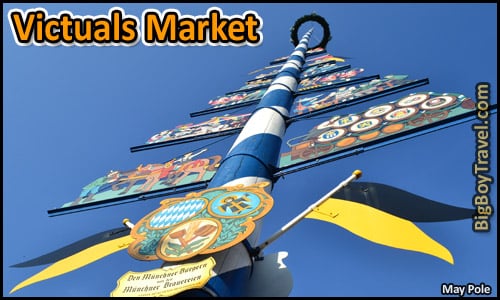
About Viktualienmarkt : Victuals is a Latin word for food, which is fitting for this daily market often called The Stomach of the City . The Viktualienmarkt (pronounced: vick-tool-lee-an market ) started as a simple farmers market in the 1700s known as Green Market ( Grünermarkt ), but quickly grew to overtake Marienplatz as Munich’s main market. Most of the markets from Munich’s main square were ordered to move here in 1807 and in just 16 years it was packed to the brim with stalls. When the neighboring Holy Ghost Hospital was demolished in 1885 it gave the proper room for the Viktualienmarkt to expand with proper space.
The sprawling market now has over 100 produce stands organized into 6 sections and even has a welcoming shaded beer garden which opened in 1970. Sitting at a table with a tablecloth means you will have a server come to you and no tablecloth means it is a self-service area where you buy from the stands or bring your own food with you. Every 6 weeks the market features a different one of Munich main breweries on tap making it the most diverse of the City’s 180 beer gardens. This is also out favorite place to relax and people watch on this free Munich walking tour.
If you are hungry, make sure to stop by the legendary Münchner Suppenküche soup kitchen to eat like a local. The most popular items are goulash soup, Krustis sandwiches, and sausage with sauerkraut. There is even a wonderful umbrella lined terrace we love called Rischart Cafe ( website ) which sits above a row of former late-Medieval butcher shops.
The blue and white, candy-striped Maypole overlooking Viktualienmarkt is an extremely iconic imagine in Munich and definitely worth a photo or two. This one, decorated in an Oktoberfest theme, is one of 30 Maypoles scattered around town. Maypoles date back to per-Christian times and are symbols of fertility and luck. Each year on May Day ( May 1st ) spring celebrations are held around the Maypoles including the tapping of the new year’s batch of beer. In Medieval times during May Day, the top of the Maypole would have market items hanging from the halo wreath on the top. If you could climb up to the top barefoot you got to keep the prizes waiting there for you. During the holiday season Viktualienmarkt also hosts a Christmas Market which features the Maypole covered in lights.
If it is bad weather consider stopping at the nearby Schrannenhalle ( website ) covered shopping hall. The hall was originally built by King Maximilian I to store grain modeled after French storehouses. It burned down in 1932 but was rebuilt in 2005 to hold an indoor market, shops, and restaurants. On the North side of the hall is the Der Pschorr Beer Hall ( website ) which has very tasty beer. Like most produce stands in Munich, it is normal for the workers to grab the fruits and vegetables you like for you instead of pulling them from the shelves yourselves. We were a little confused by this on our first visit, but even if you don’t speak German it is easy to just point to what you want.
Market Hours : Monday-Saturday Early morning until dusk; Schrannenhalle is open the same days 10am-10pm. Photos : ( Overview From Air ). 360 Degree Panorama : Click Here . Market Website : ( HERE ).
13. Old Town Hall ( Altes Rathaus ):
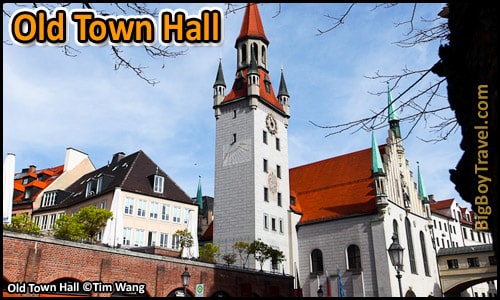
About Old Town Hall : The Old Town Hall (Altes Rathaus , pronounced Alt-as Rat-house ) adds some much welcomed Medieval flair into the center of old town and is a favorite spot for photographers. The spired watchtower, which is called the Valley Fort Tower ( Talburgtor ) , was built in 1175 as one of the five original city gates on the very 1st protective wall surrounding Old Town Munich. Outside of the gate, the wall was protected by the Baker’s Stream ( Pfisterbach ) which served as a flowing moat. From the late-1100s this was the Munich’s main Eastern gate until the city walls were expanded out toward Isar Gate ( built in 1337 ).
The original city council offices were inside the Small Town Hall ( Kleines Rathaus ) built onto the South side of the watchtower in 1310. The grand hall you see today on the Northside of the watchtower is called the Dance House ( Tanzhaus ) . It was built before 1395, housed the prison in the basement, a bakery and meeting rooms on the main floor, and had a large dancehall ballroom on the upper floor. Notice the small square fountain in front of the Old Town Hall? This was the central fountain the small Herb Market ( Kräutlmarkt ) which in Medieval times sold eggs, herbs, and grain as visitors entered the city.
The Old Town Hall watchtower, offices, and Dance House were given a mutual castle-like makeover after a fire in 1460 to show Munich’s power as a major trading hub. While the buildings were almost completely leveled by WW2 bombings , they have been faithfully restored. The only real changes were the Small Town Hall was eliminated to make room for the road and the first floor of the Dance House was turned into open arcades for pedestrian passage.
Two original Medieval statues were preserved on the watchtower including Henry the Lion who officially founded Munich in 1158 before the Wittelsbachs took over in 1180. On the Westside of the tower is a statue of Ludwig IV , called the Bavarian, who ruled during the early 1300s in the height of the salt trade. Ludwig ( Louis the 4th ) became the Holy Roman Emperor and declared Munich’s main square to officially be public for the people.
Since 1983, the tower has served as a 4-story Toy Museum filled with dolls, doll houses, trains, teddy bears, and vintage Barbies. While the museum is more for toy lovers it offers great views of the square below. Near the base of the tower is the popular bare-chested Juliet Statue given to Munich by its sister city of Verona, Italy in 1974. The right breast of the bronze statue from Shakespeare’s Romeo & Juliet has been polished to a golden shine by visitors rubbing it for good luck.
Tower Toy Museum Hours : Daily 10am-5:30pm. Museum Cost : Adults 4€, Kids 1€.
14. Fish Fountain ( Fischbrunnen ):
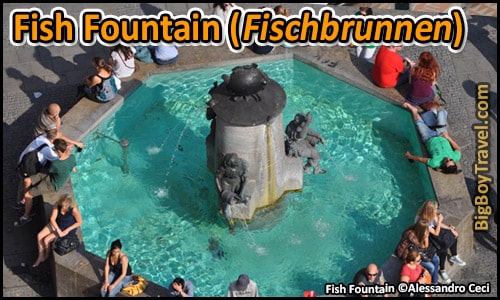
About Fischbrunnen : While we will visit the rest of Munich’s main square ( Marienplatz ) and the gigantic New Town Hall next on this free walking tour, it’s important to see the town’s medieval roots at the Fish Fountain ( Fischbrunnen ). There was at one point three separate fountains and well in the vast square, but this was the most important one.
Initially called the Market Fountain and Citizen Fountain, there has been a fountain on this spot continuously since 1318 when the square was declared the property of the people by Lugwig IV. Through the Middle Ages, the Market Fountain was used for drinking water, as a meeting point, and also by local fishmongers to store live fish to keep them fresh. The first version of the Fish Fountain had a simple column which was later topped with a citizen/tradesmen statue.
Since the 1400s, Purse Washing has been a significant tradition at the Fish Fountain. Every Ash Wednesday locals would wash out their money bags in the fountain in hopes they will be filled again in the coming year. To this day, the Mayor of Munich still washes out the City’s coffers in the fountain’s turquoise water with the town treasurer.
In the 1860s the Fish Fountain got a substantial 3-level makeover with bronze statues of four butcher apprentices tossing out buckets of water, under a row of four musical children, and capped with a tradesman ( journeymen butcher ) raising a cup. This new design paid homage to the Metzgersprung ( Butcher’s Leap ) which was held here every year on Rose Monday ( two days before Ash Wednesday ). The event was considered a rite of initiation as young butchers were issued journeyman letters for the official conclusion of their apprenticeship training. The butcher apprentices would then jump into the Fish Fountain as a baptism to wash themselves of youthful sins wearing costumes draped in sheep’s eyes hung with calf’s tails. The newly anointed journeymen then toss coins, apples, and nuts onto the square for the children and toss buckets of water at them as they attempted to grab the prizes.
At the start of the tradition, the joyous Butcher’s Leap also helped people to get back out on the streets and stop being afraid of the water following the Plague of 1634-35 . It took place every year from the mid-1600s until the controversial Elector Karl Theodor ended it in 1793, but was revived in 1849 by Maximilian II. After a post-war hiatus from 1954 until 1995, the Butcher’s Leap was brought back again and moved to early September where it now happens every 3 years.
Bombings in WW2 leveled the Fish Fountain, but luckily some of the original statues from the 1860s were recovered. Three of the musician boys were moved to the New House Gate in Karlsplatz ( which we saw earlier in this free Munich walking tour ), and three of the butcher boys were reused for today’s Fish Fountain built in 1954. The boys still pour their buckets into the fountain’s base, one holds a fish in the air, and the whole thing is topped with a chubby fish to pay homage to the fishy roots.
Photos : ( Fountain In 1760 | Butcher’s Leap In 1863 | Fountain in 1890 )
15. Mary’s Square ( Marienplatz ):
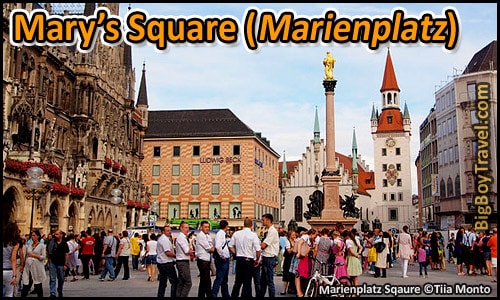
About Marienplatz : Mary’s Square ( Marienplatz ) has always been the center of Munich back to when the area was first settled by Benedictine Monks in the 700s. When the Monks got a royal charter from Henry the Lion to start an official marketplace here in 1158 , it formerly founded the city of Munich and started the general layout of today’s Old Town. Just two years earlier, Henry built a new toll bridge nearby over the Isar River to reroute the Salt Road from the mines in Bad Reichenhall and Hallein ( near Salzburg ) through Munich on its way to Augsburg which helped the marketplace surge.
While called both Market Square ( Marktplatz ) and Stall Square ( Schrannenplatz ) over the centuries, the lively space has been home a wide range of markets. Since Medieval times they’ve had every type of market from salt ( boomed in the 1300s ), to produce, fish, meat, and a Christmas market ( which is still active) . In addition to the markets, at one point there were three separate fountains, a well, the gallows, and the stocks all in the Market Square.
While in Mary’s Square ( Marienplatz ), it is hard to miss the backdrop of the huge New Town Hall ( Neues Rathaus ) which we will visit next on this free Munich walking tour. Before moving on, make sure to investigate the Virgin Mary Column ( Mariensäule ) in front of New Town Hall which tells an interesting story of Munich’s history.
The column was added by Maximilian the 1st in 1638 declaring Mary the new patron of the city for protecting Munich during times of trouble. Just 6 years earlier ( 1632 ) Munich had survived a 3-week Swedish occupation as part of The 30 Years War which was followed by an outbreak of the Bubonic Plague of 1634-35 that wiped out 1/3 of the population. While Mary was given the credit for protecting the city in both cases, it also helped that the Swedes were paid off with 600,000 barrels of beer to spare the Munich.
The beautiful column is capped with a golden statue of the Virgin Mary which was originally crafted in 1590 for the nearby Church of Our Lady ( Frauenkirche ) which we will visit later on this free Munich walking tour. Below the beautiful golden icon, four playful child-like warrior statues surround the sturdy base of the column on each of its corners. These four child statues are all depicted fighting different creatures to symbolize adversities that Munich has overcome: war represented by the lion, pestilence by the rooster-headed creature, famine by the dragon, and heresy by the serpent.
This Virgin May Column is considered the 1st Marian Column built North of the Alps which inspired a wave of them around Europe after traumatic events like war and plagues. While the fountain survived WW2, the Mary statue was knocked off the top and needed significant repair. Seeing how pretty the dramatic column is, it is no wonder that Market Square was re-named Mary’s Square ( Marienplatz ) in 1858 as the last of the markets moved to other squares.
16. New Town Hall & Glockenspiel :
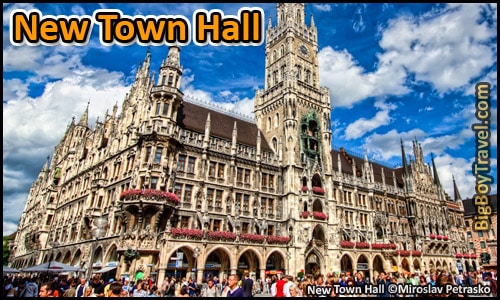
About New Town Hall : From 1801 to 1861 the population of Munich boomed from 40,000 to 120,000 and the City’s needs quickly outgrew the Old Town Hall. Built over 40 years starting in 1867, the sure size of Gothic-style New Town Hall ( Neues Rathaus, pronounced Noy-as Rat-house ) is stunning. It sits over a football field long, has 6 courtyards, and over 400 rooms . The first phase of the New Town Hall complex was the right side built over the old Landstände Mansion ( 1740 ) which represented outside rule by the former Holy Roman Empire ( dissolved in 1806 ). The second phase was the left side of the New Town Hall (1898-1905) complete with the iconic Glockenspiel Tower. While the 600-year-old Gevierten neighborhood behind New Town Hall ( now Marienhof Park ) was leveled in WW2, luckily the complex was largely spared of damage. Most of the roof burnt off, but only some decorative details and five statues on the facade were ruined.
Dominating New Town Hall’s Gothic facade is the 280-foot-tall central clock tower which is capped by the symbol of Munich, a statue of the Child Monk ( Münchner Kindl ) . The main attraction of the clock tower is the 2-story, 28-foot-tall Glockenspiel ( Carillon ) , complete with 43 bells, which is the largest in Germany. Everyday mechanical figures in the Glockenspiel perform a 15 minute long miniature Medieval tournament , re-enacting numerous events in Munich’s history. These full performances take place at 11am and Noon with an extra 5pm show in the Summer.
The Glockenspiel shows are manually operated and while the figures look small from the ground, they are actually almost life-sized . You can get a closer look at the Glockenspiel figures and some commanding city views by taking either the stairs or elevator to the top of the tower. For the best vantage point of the show itself, head to the third floor of the Hugendubel Bookstore (open 10am-8pm ) across the square from New Town Hall.
The upper level of the Glockenspiel show depicts the Crown Jousting Tournament ( Kröndlstechen ) held on Marienplatz in February 1568 as part of a festival for the marriage of Duke Wilhelm V to Renata of Lorraine. A carnival-like parade of royal court members lead the jousters to battle and on the second rotation, the red rider ( French ) is flung from his horse by a strike from the triumphant blue rider ( Bavarian ). The powerhouse wedding between cousins made Bavaria’s Wittelsbach rulers related to the Kings of France, Denmark, Scotland, and Spain. The wedding was attended by royal delegations from all across Europe and was a celebration on a scale not often seen in the Middle Ags. The day of the wedding at Church of Our Lady (Frauenkirche), the bride was led to Munich from nearby Dachau by a procession of over 3,500 horses and during the two-week-long party over 600 oxen were roasted. Duke Wilhelm V went on to become well-known for his religious witch hunts, but is most famous for founding the Royal Beer House ( Hofbrauhaus ) in 1589 which we will visit later on this free Munich walking tour.
The lower level of the Glockenspiel shows the Dance of the Coopers , called Schäfflertanz in German. The Coopers are dancing to celebrate the end of the Plague of 1517 which folklore says was spread to the people of Munich by the Wurmeck Dragon . With the people in chaos, a city guardsman hit the dragon with a direct cannon shot, killing it, and ending the plague. On the Southwestern corner of the New Town Hall, this same story of the Wurmeck Dragon is shown in dramatic sculpture.
Every night 9pm a mini-show called Bedtime for the Münchner Kindl is performed on the sides of the Glockenspiel. During the show the Münchner Kindl ( Child Monk ), who is the symbol of the city who is led to bed by the Friedensengel ( Angel of Peace ) as the Night Watchman sounds out the City’s Medieval curfew on his horn.
The New Town Hall’s interior is also really cool. As you enter City Hall’s large central courtyard, which serves as an open-air restaurant, stay to your left to see some great vertical sculptures . We’re always fascinated by these Gothic sculptures and how they show different stages of men turning into various creatures as you follow up each tier. Some of the men are turning into horses, another a large bird, and a couple of them even have quite creepy middle stages.
If you are looking for a taste of Medieval drinking, work your way down to the basement tavern called Ratskeller Restaurant ( website ) which is Munich’s oldest wine cellar. Prior to the New Town Hall being built, the Ratskeller had been housed in the neighboring mansion called the Landscape House ( now Ludwig Beck ) since Medieval Times and was limited to the upper-class and City Council. Even if you don’t go down into the Ratskeller ( Council Resturant ) take a minute to look at the decorated details on the entrances, especially the drinking monks on the entrance from the courtyard and the masquerade dancer door knobs on the Eastern doors outside New Town Hall.
Tower Elevator Hours : May-October Daily 10am-7pm; November-April Monday-Friday only 10am-5pm. Elevator Cost : 2 Euros. Glockenspiel Show Times : Full 15-minute show at 11am and Noon, plus 5pm in Summer ( March-October ); 5-minute long night show daily at 9pm. Photos : ( Exterior | At Night | View From St Peter’s | Glockenspiel | Pope at Mary’s Column | Mary’s Column Warrior ). 360 Degree Panoramas : ( Day Time | At Night ). Video : ( Glockenspiel In Action ).
17. Pedestrian Only Shopping :
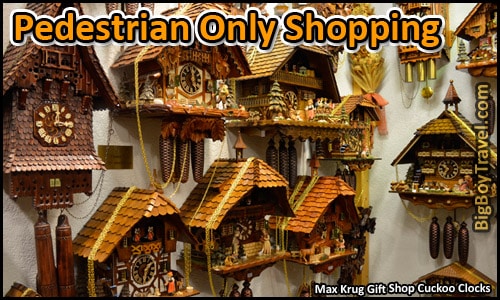
About The Shopping : Munich’s main shopping lane called New House Street ( Neuhauser Strasse ) was turned into a pedestrian-only zone leading up to the 1972 Olympics and is a highlight of any visit. Since Munich was established as a market town in 1158 the lane was important as the Salt Road trade route passed right through the city from Salzburg in the East to Germany in the West. The original shopping lane went from the Lower Gate ( Talburgtor ) near Old Town Hall, through Market Square and to the Upper Gate ( Hohentor ) which stood on the West side of Old Town.
As the city wall was expanded in the 1300-1400s, the merchant family Kaufinger moved into the Upper Gate ( Hohentor ) which then became known as Kaufinger Tower ( Kaufingertor ). Rebuilt in a Gothic style, the tower was later demolished in 1810, but the family’s name lives on along Munich’s shopping lane. Known as Kaufingertor Passage ( website ), one of the more modern elements is the covered alleyway that branches off of New house Street. In 1994 a glass roof was added to the shopping gallery with an illuminated design which is pretty cool. The lighting in the Kaufingertor Passage even copies the feel of a natural sunset as the colors change every evening gradually over a 90 minute period. Our favorite element of the Passage is the statue of a man balancing on a beam high above the entrance. The statue, called Man With Outspread Arms , was created by the artist Stephan Balkenhol and is meant to be inviting everyone into the world of shopping at Kaufingetor.
One block further up the main pedestrian lane from the Passage is the famous Hirmer Department Store ( website ) which is one of the most beautiful buildings in Munich. The mega-sized clothing store carries a huge collection of high-end Men’s clothing that is almost as impressive as the building itself. Even if you don’t go inside, your camera will love the flower-laden exterior, especially after dark when it is lit up . Right in the middle of the intersection in front of the large Hirmer Haus was once the location Munich’s original Western city wall gate called Kaufingertor mentioned above. A large dark square in the pavement marks the watch tower’s original location and a sculpture relief of what it looked like is on the corner of the Hirmer Haus.
Just past Hirmer is a wonderful collection of great souvenir shops housed in the former Augustiner Monastery from the 1200s. The building was rebuilt in the 1600s and the best shop is the Max Krug Gift Shop ( website ) which is famous for its beer steins, cuckoo clocks, nutcrackers and Christmas ornaments. If you are looking for a little more high-end shopping, check out the Funf Hofe Shopping Center which we will pass by shortly on this free Munich walking tour map.
18. Cathedral of Our Lady ( Frauenkirche ):
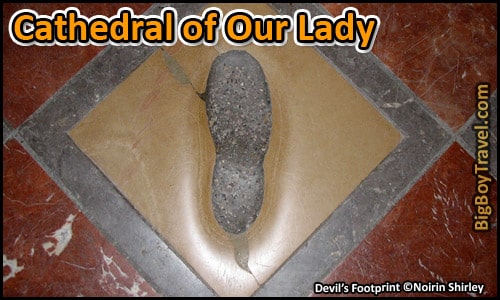
About Frauenkirche : You will be able to see the massive 325-foot tall twin towers of the Cathedral of Our Lady ( Frauenkirche ) hovering above Old Town Munich from almost anywhere in town. It is by far the tallest church in Munich. This mega-sized cathedral has become a symbol of Munich not only because its dominance in the skyline, but also because the brick towers survived heavy WW2 bombings even when the most of the church was leveled. The ambitious construction of Frauenkirche started in 1468 to replace the much older Mary’s Church that already stood here.
With most of Germany being Protestant and Bavaria being Catholic, Munich wanted to make a statement with the size of their new Gothic-style City Parish. The new church was so big that it even covered the graveyard of the previous church and today you can headstones that were incorporated right into the outside walls of Frauenkirche. Although the builders switched from stone to brick to save money, the new Church quickly ran out of money before the Pope stepped in and saved the project. With a Papal decree that official Catholic Church indulgences could be bought in Munich, over 120,000 pilgrims showed up over a 3 year period which provided enough money to complete the Frauenkirche.
When the church was completed in 1488, its facade was quite bare and the structure of the towers was exposed. One famous illustration from the Nuremberg Chronicle from 1493 shows the bare towers over the city from an Eastern vantage point, Click For Photo . The towers were meant to be finished with elaborate Gothic spires to look like the style seen at Saint Stephens Church in Vienna, Cologne Cathedral, and Saint Vitus in Prague, but it never happened because of money. In 1525, the twin towers were faced off with brick and the tops were covered in a large copper plated onion domes . An Old Town building height restriction ensured the towers would be seen which was extended throughout the entire city in 2004 as skyscrapers started to pop up.
The interior of Frauenkirche is also gigantic. The size seems even crazier when you learn that Munich, which was decent sized for Medieval times, only had 13,000 residents when the 20,000-person Cathedral opened. As you enter all of your attention is funneled to the high altar as tall columns make Frauenkirche appear almost windowless from the entrance. This is quite a feat as the detailed stained glass windows are actually huge and open up to you the further you walk into the church.
Legend has it that the architect made a deal with the Devil when the project ran out of money that he would help fund the project as long as it had no windows. After the Church was finished and paid for the Devil realized he was tricked and stomped his foot hard in the entrance making an imprint on the marble floor. The Devil’s footprint can still be seen today and is one of the biggest attractions at Frauenkirche. Other highlights include the royals buried here like the huge bronze tomb of Ludwig IV , who ruled during the early 1300s during the height of the salt trade, and was elected Holy Roman Emperor. During the Summer you can even ascent the massive 325-foot tall towers with a climb of about 90 steps plus an easy elevator ride to get some great views of the city.
Sitting in the courtyard in front of Frauenkirche is a peaceful square calls Frauenplatz. Every time we visit the church we end up spending a couple minutes sitting by the outdoor art pieces and small pond to relax. The pond is still feed from what was Munich’s original city moat from 1175 which flowed right around the church grounds.
Cathedral Hours : Daily 7am-7pm; Friday closes at 6pm. Bell Tower Hours : April-October Monday-Saturday 10am-5pm; Closed November-March. Cost : Church Free, Towers 3 euros. Guided Tours : May-September on Sundays, Tuesdays and Thursday at 2pm. Meeting place under the organ loft. 360 Degree Panoramas : ( As Seen From St Peter’s Tower ). Church Website : ( HERE ).
19. Field Marshall’s Hall ( Feldherrnhalle ):
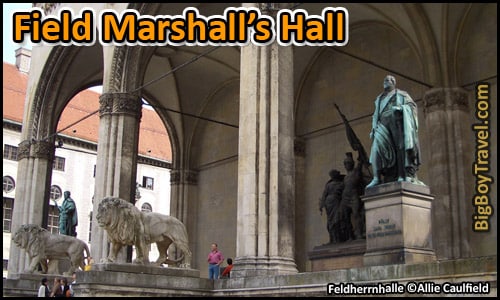
About Field Marshall’s Hall : Built by Ludwig I in 1841, the large 4 column, open-air gallery capping the square is called the Field Marshall’s Hall ( Feldherrnhalle ). Modeled after the Loggia dei Lanzi in Florence , this Italian gallery was meant to honor the commanders of the Bavarian Army.
While the gallery was supposed to get many more statues over time, it only has three main works. The two statues flanking both ends were in honor of revered Bavarian military heroes, Johann Tilly and Karl Von Wrede. The largest statue in the middle was added in 1870 in honor of the soldiers who died in the Franco Prussian War in 1870. The two large lions guarding the steps were not added until 1900. Notice how the lion facing the Palace is growling but the one facing the church is calm with a closed mouth.
On August 1st, 1914 the German declaration of war was announced from the Field Marshall’s Hall in front of a large crowd. Among the audience was a young Adolf Hitler who joined the military two days later where he was awarded the Iron Cross both First and Second Class. Hitler returned to the hall in 1923 when his failed revolution called the Beer Hall Putsch was foiled here .
The Beer Hall Putsch began when Hitler and troop of Brown Shirts stormed the Bürgerbräukeller Beer Hall at 8:30pmon November 8th, 1923. Hitler himself fired shots into the ceiling, took hostages and declared that a revolution was at hand to overthrow the government. His revolution stalled and by the next morning, he decided to march with 3,000 of his men in the direction of Berlin. As the march approached the Field Marshall’s Hall, they were met by the Bavarian Police and Army a clash broke out with an exchange of fire. During the exchange, 16 Nazis and 4 police were killed, and even Hitler wounded his shoulder before being arrested two days later and jailed for 9 months.
During the first year of Nazi rule in 1933, Hitler made the gallery a guarded memorial for the Nazis that died that day. All citizen who passed the memorial were forced to give the Nazi salute. Every year on the November 9th anniversary of the Putsch they would have a parade following the original route of the failed march through town. Everything Nazi-related was quickly removed from the Hall after WW2 and a plaque honoring the 4 policemen that died during the Beer Hall Putsch was added in 1994. Today the Hall and square in front of it often hold concerts and art installations.
20. Theatine Church ( Theatinerkirche ):
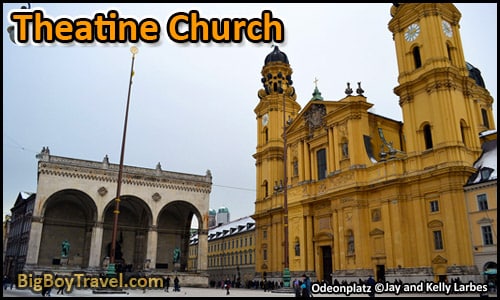
About Theatinerkirche : In 1650 Elector Ferdinand married an Italian princess in a powerhouse arranged marriage. Ferdinand didn’t even get to meet his bride until a year after they wed as a representative of the Royal Court was sent in his place for the wedding which took place in Italy. A decade later the couple still hadn’t produced an heir, putting the dynasty in danger. Things looked bleak as Ferdinand’s wife was sick on her deathbed multiple times. As a call for help, the couple prayed for a child and made a deal that when it finally happened they built a church in honor of Saint Cajetan of Theatine . In 1662, the couple finally got their long-awaited heir, Prince Max Emanuel, and work on the Church started the next year.
Only the shell of the Theatinerkirche and adjoining monastery were finished when it opened in 1674. It took another 16 years to complete the stunning Baroque interior and the current exterior wasn’t done until 1765. There wasn’t much of a rush on the exterior design as the huge Schwabinger City Gate from the 1300s dominated the Odenplatz Square and many of the outside vantage points at the time the Church was built. After the gate was torn down in 1817 it opened up the square and views of the golden-yellow Theatinerkirche. Our favorite elements of the exterior are the Rococo tops on the bell towers and the 2 statues to sides of the main window. The statue on the left is the church’s patron Saint Cajetan of Thiene ( 1480-1547 ) and on the right is royal heir Prince Max Emanuel who’s birth sparked the project.
The spacious, white-washed interior is one of our favorites in Europe and quite unique. Elaborate vine and shell decorations fill every inch of the Theatinerkirche along with 100s of child-like winged angle figures. Details on the columns and inside the 230-foot tall dome are especially beautiful. The Theatinerkirche feels light, airy, heavenly, and has exceptional beams of light pouring in throughout the day. As the 1st Italian inspired Baroque churches in Bavaria, you can easily see how this beautiful style became popular throughout Europe. After the Asam Brother’s Church, we saw earlier on this free Munich walking tour, the Theatine Church is our second favorite in all of Old Town. Photos : ( Schwabinger Gate in 1600s | Schwabinger Gate in 1765 | Inner side of Gate in 1805 ). 360 Degree Panoramas : ( From The Square | Interior Close Up ). Church Website : ( HERE ).
21. Royal Court Garden ( Hofgarten ):
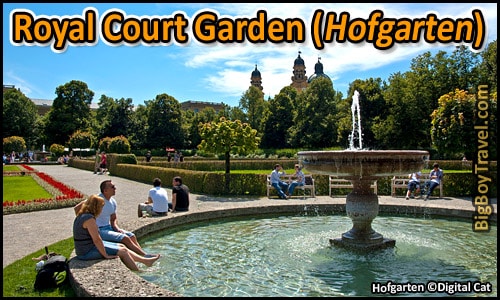
About Hofgarten : Originally laid out between 1613-17 on the North side of the Residenz Palace, the Hofgarten was a private garden for members of the Wittelsbach Royal Court. At the time the Royal Court Garden was outside of Munich’s moat and the outer wall, but was quickly protected by a double wall and moat built in 1618 to protect the city during the 30 Years War. It is said that the new fortifications around the city took a workforce of over 40,000 people 13 years to complete.
To get an idea of what we are talking about, these new fortifications with starred ramparts can be seen around the Hofgarten HERE in a drawing from 1740. The Hofgarten was opened to the general public in 1780 as the 1st public park in Munich. With Hofgarten open to the public, the Royal Family then used a private park on East side of the Residenz Palace near their horse stables called Lustgarten which had been laid out in 1550, but later ruined in WW2.
While the open spaces and beer garden are nice, the main draw of the flower-lined Hofgarten park is the 8 portal pavilion in the center. Built in 1615 to honor Diana, the Greek Goddess of Hunting , the green-domed pavilion is a little plain, but a great place to people watch. The large building on the East side of the Hofgarten that looks like a greenhouse is actually Bayerische Staatskanzlei which is home to the office of Bavaria’s Governor and is still the state’s government seat. Also located adjacent to the Hofgarten is the Munich War Memorial . The most striking inscription is the one covering the 22000 dead, 11000 missing Munich soldiers and 6600 citizens from WWII.
The Hofgarten has turned into an ideal place to get a quick break from the bustling city. This is also a perfect time to fit in our English Garden Walking Tour if you are looking to visit the best park in Munich. The huge English Garden has river surfing, sunbathing, the amazing outdoor Chinese Tower Beer Garden, and lots of open space. It was laid out of the Schönfeld Meadow and Royal deer hunting grounds shortly after the Hofgarten was made public. 360 Degree Panorama : Click Here . Photos : ( Garden in 1740 ).
22. Dodgers’ Alley ( Drueckebergergasse ):
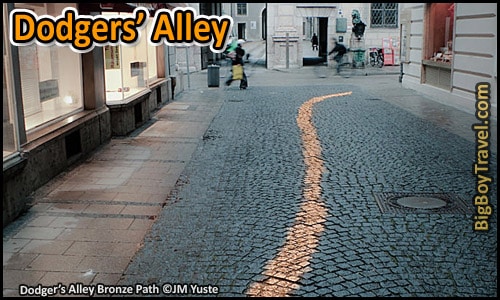
About Dodger’s Alley : Viscard Alley in Munich is known locally as Dodgers’ Alley ( Drueckebergergasse ) because of its role during Nazi occupation. Hitler had established a Nazi memorial on the East side of the Field Marshall’s Hall in honor of his 16 comrades who died here in the failed Beer Hall Putsch of 1923. The memorial was guarded 24 hours a day and anyone who passed was required to give the Nazi salute. Citizens who didn’t agree with the Nazi movement would dodge the guards as they walked North from Max Joseph Square by taking a quick left at Viscard Alley passing the Field Marshall’s Hall on the West. Today a path of bronze bricks in the pavement has been bronzed to mark the route the dodgers would take to avoid the Nazi memorial.
At the mouth of the alley are two large lion statues marking the Western entrance into the Royal Residence. The lions, who were the symbol of the ruling Wittlesbach family stand guard while holding shield like coat of arms. Notice how the muzzle of the face on the shields are brightly polished? It is said that if you touch the face while you walk by it will bring you good luck. While the ticket office for the Residenz is on the Southeast corner of the complex, remember the corridor by the lions as it leads to the Palace’s Cuvilliés Theater.
23. Munich Royal Residence ( Residenz ):
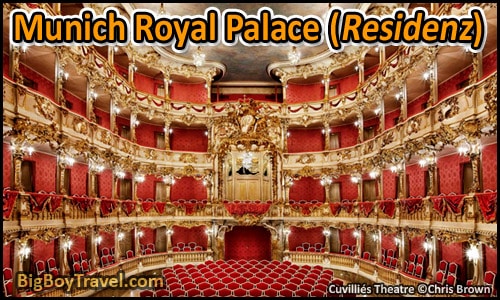
About The Munich Residenz : After a failed citizens uprising against the Wittelsbachs, the royal family started to build a small protected retreat along the city wall in 1385 called Neuveste . This was the perfect location for a retreat as it provided access to the countryside without going through town and was right next to the very strong Silver Tower ( Silberturm ) . A defensive moat and separate wall were built around the small 4 winged castle which supplied ample defense. Starting in 1474 the royal family began to split time between Alterhof Palace and Neueste Castle. The full-time move to the castle became official when William IV set up the first Royal Court at Neuveste in 1508 following the reunification of Upper & Lower Bavaria and the castle remained the main home of the Wittelsbachs until the end of their reign in 1918.
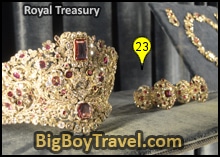
The oddest set of rooms in the Rezidenz are the lavish Stone Rooms which were built in 1612 and filled with tapestries solely to house the Holy Roman Emperor when he would visit. These unbelievable marble rooms were almost never used which is strange for how cool they are. They didn’t even put furniture or tapestries in the rooms unless the Emperor was there. At about the same time the rooms were built, parts of Neueveste Castle and Silver Tower started to be torn down to make way for the expanding Palace, which by 1701 surrounded 4 courtyards.
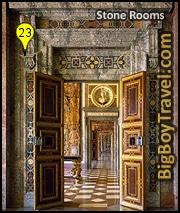
Like many of the rulers before him, Albrecht VII also had big ambitions for putting his own stamp on the Residenz in 1726. The first project was the building of new Ornate Rooms to keep up with the other Palaces in Europe. This new wing was filled with apartments stocked with over the top in rich furniture, artwork and designer wallpaper. It seems like almost every inch of these rooms is filled with paintings. Over the years a number the Ornate Rooms have housed many important guests such as Elizabeth II. Albrecht VII also got working on the Ancestral Gallery with portraits tracing back his famous bloodlines. Historians widely view the gallery as propaganda, but it worked as Albrecht VII persuaded the people he was related to Charlemagne and was elected Holy Roman Emperor. Hidden in many of the paintings today are huge square slash marks from where they were quickly cut from their frames to preserve them right before World War 2 bombings.
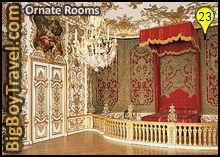
The most beautiful space in the entire Palace maybe the Residence Theater ( Cuvilliés-Theater ) , constructed by Elector Maximilian Joseph III (1745-77) in 1753. Originally this theater was located between the Residenz and the State Opera House, but it was leveled in World War 2. Luckily just before the bombings most of the Theater’s impressive interior was removed and stored for safekeeping until after the war. When the dust had settled from the war the Theater was rebuilt with the original woodwork where a ballroom from the 1500s once stood. Below the Theater are a series of Gothic cellars from the ballroom that once connected to Nueveste Castle until the last parts of the Castle burned down in 1750. While these cellars are all that remain from the castle, an outline of its original footprint shape has been created on the pavement in the Northern courtyard.
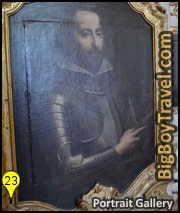
The last rounds of expansion happened in the after Bavaria officially became a Kingdom in 1806 under the rule of King Maximilian I Joseph. His son King Ludwig I ( 1825-1848 ) added a large Festival Hall Wing, the Kings Wing, and the unreal Court Church of All Saints . The Church was modeled after the Cappella Palatina in Palermo Sicily in a Byzantine-style and was filled with detailed golden mosaics. Unfortunately, the Church was heavily damaged in WW2 and none of the mosaics survived by the time it reopened as a concert venue in 2003. When King Ludwig II took over in 1864 he showed his flair for the dramatic by adding a huge greenhouse Winter Garden on the roof of the Northside of the Residenz. The Garden was meant to feel like a fairytale and had lighting for rainbow and moonlight effects. While it didn’t survive WW2, Ludwig’s masterpiece Neuschwanstein Castle two hours South of Munich is the most visited fairytale castle in Europe. After the revolution of 1918, the Wittlesbachs ended their 738-year rule and the Residenz immediately became a public museum.
Residence Hours : April-October 15th Daily 9am-6pm; October 16th-March Daily 10am-5pm ( the Theater opens late Monday-Saturday at 2pm ). Last entrance 1 hour before close. Entrance Cost : 7€ each for the Museum & Treasury or 11€ for both together, Theater is 3.5€, All 3 for 13€. All are covered by the Castle Pass. Orchestra Concerts : Every Thursday at 7pm and Saturday at both 6 and 7:30pm the Munich Philharmonic Orchestra has concerts in the same small wedding chapel Mozart played in for 21€. Hot Tips : If you plan on seeing other palaces and castles during your trip to Bavaria, we suggest getting the Bavarian Castles Pass which gets you into almost all Castles and Palaces for 14 days from your first use. This pass is 24€ for one person or 40€ for 2 adults plus your kids under 18 years old. Photos : ( Residenz Layout Map | Antiquarium After WW2 | Neuveste in 1540 | Neuveste Cellars Today ). 360 Degree Photos : ( Antiquarium | Lion Statues | Portrait Gallery | Stone Rooms ). Palace & Museum Website : ( HERE ).
24. Max Joseph Square :
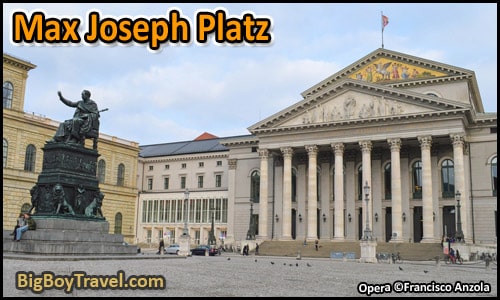
About Max Joseph Platz : Even if you don’t have time for a show, the exterior of the Opera House looking down at the statue of ruler Max Joseph is still very impressive. Also consider grabbing a drink on the West side of the square at the outdoor tables to the Spatenhaus Beer Hall which has our favorite beer in Munich, Spaten.
Opera and the theater performances have both been big in Munich for 100s of years with opera companies operating here since the early 1600s. Maximilian I built the current Greek columned Opera House during his last year as King in 1825 after the original opera house burned down. The project was inspired by Pantheon in Rome and it covered with two impressive reliefs. The lower gable has a carved relief of Greeks gods flanking Apollo in the center. The upper gable is a beautiful golden mosaic with goddesses surrounding a bucking Pegasus. By the time it opened, the 2100 guest State Opera House was the largest in Europe. When Mad King Ludwig II took over in the 1860s he greatly expanded the Opera House’s offerings as he was obsessed with the work of Richard Wagner.
The Opera House was unfortunately turned to rubble during WW2 bombings, but it has since fully restored and today the building is grand as it ever was. Make sure to check out their website if you want to catch an opera or ballet. Opera House Guided Tours : 1 hour guided tours almost every day of the week at 2pm for 7€. The meeting point is on the Northern entrance toward Marstallplatz, and not Max Joseph Platz. Opera Website : ( HERE ).
25. Old Court Palace ( Alter Hof ):
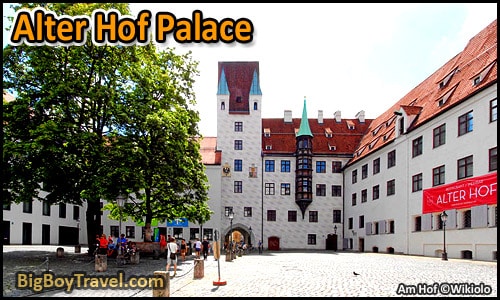
About Alter Hof : The Old Royal Court ( Alter Hof ), was first built in the 1180s as a small royal estate for the Wittelsbach family who had just taken over the rule of Bavaria from Henry the Lion after he refused to fight for the Holy Roman Emperor. The family’s royal dynasty ( 1180-1918 ) over Bavaria would go on to last more than 700 years.
Between 1253-55, as Bavaria split into Upper & Lower states, Duke Ludwig II re-built and expanded Alter Hof turning it into the family’s formal Royal Court . This is also considered the point when the capital of Bavaria officially moved from Regensburg, Germany to Munich. In 1328 Ludwig IV, who was the 1st prince born in the new Alter Hof, became the King of Germany, the Romans, Italy and the Holy Roman Emperor . Ludwig IV’s rise power was also at the height of the regional salt trade and cemented the Wittelsbach’s as a major player in Europe.
As the Alter Hof grew, it was laid out with 5 wings around a central courtyard which housed farm-like gardens and Royal craftsmen. The palace grounds were home to many animals including pigs, chickens, horses, lions, and monkeys. One of the exhibits on display today has an interesting story about when a young prince Ludwig IV ( mentioned above ) was taken out of his crib as a baby and dangled high above a window by a pet monkey who eventually put him back unharmed. Today you will see monkeys painted on the outside of the turret windows inside Alter Hof’s central square called the Monkey Tower.
After a failed citizen’s uprising , the royal family built a small moated retreat called Neuveste Castle ( now the Munich Residenz ) for protection just North of Alter Hof in 1385. By 1474, the Wittelsbachs started to formerly split time between the two residences before official moving the Royal Court to Neuveste Castle in 1506 following the reunification of Upper & Lower Bavaria . After the move, Alter Hof was used to house government departments, a horse stable, and the royal mint while Neuveste was slowly expanded into today’s Munich Residenz Palace. You may remember the Munich Residenz from earlier in this free Munich walking tour.
While Alter Hof was heavily damaged in WW2, parts have been reconstructed to house exhibits where you can learn about its history and how day-to-day life was in a Medieval royal court. We find the Gothic Hall to be the most interesting of the exhibits today. Exhibit Cost : Free. Exhibit Hours : Monday-Saturday 10am-6pm. Museum Website : ( HERE ).
26. Baker’s Mill Restaurant ( Pfistermühle ):
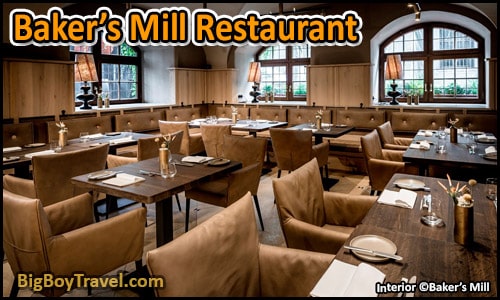
About Pfistermühle : What an amazing vine-covered building with an interesting history! Before becoming a restaurant in 1988, the Pfistermühle was part of the Royal baker’s mill ( Hofpfisterei ) for the Bavarian dukes going back to the Middle Ages . There was once a stream powering the mill running right down the middle Sparkassenstraße Street ( covered since the early 1990s ) which also served as the original moat for Munich. The current building was added as a baking and a storage house for the mill and built in 1573.
The Baker’s Mill Restaurant has great food and you are served in one of the mill’s four original storage vaults. These happen to be the only original Medieval storage vaults still maintained in Munich. It’s even more astonishing that this part of the building survives today as the mill was heavily bombed in WW2 and half of the complex had to be completely rebuilt which now is home to the neighboring Platz Hotel . The hotel is one of our favorite hotels in Munich as you can’t get closer to the Medieval city center. With the combination of beauty, history, and great food it is easy to have fond memories of Pfistermühle Restaurant.
Hours : Open Monday-Saturday Noon-Midnight; Closed Sundays. Reservations : Reservations are suggested and can be made on their website. Photos : ( Bakery In 1897 | Back of Bakery 1907 | Stream 1907 ) Restaurant Website : ( HERE ).
27. Royal Beer Hall ( Hofbräuhaus ):
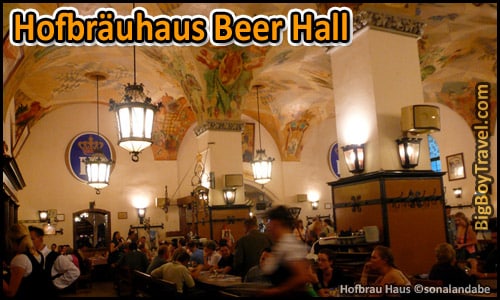
About The Hofbräuhaus : The Hofbrauhaus, or Royal Court Brew House, is by far the most popular beer hall in Munich and maybe the most magical in the World! While beer has been brewed in Munich since 1328, Duke Wilhelm V established this official Royal Court Brewery in 1589 as an alternative to expensively shipping in his favorite beers in from Hanover, Germany ( Saxony ). The current 3-story beer hall complex opened in 1607 as an expansion to brew Hofbrau’s wheat beer and visiting it was reserved for the Royal family and their guests only. Mozart and Austrian Empress Sisi were some of the esteemed royal guests who would often visit.
In 1828, King Ludwig I opened the Hofbrauhaus beer hall to the public allowing both rich and poor to experience the World-famous atmosphere. Ludwig’s involvement was fitting as the King’s 5-day wedding celebration in 1810 was the start of the modern Oktoberfest and also helped to unite commoners and the social elite. The brewery has sponsored a 10,000 person beer tent during Oktoberfest since 1955, but the Hofbrauhaus Beer Hall has an excellent party atmosphere no matter what time of year you come.
Today, the Hofbrauhaus still brings people together with community seating, traditional barmaids, delicious German food, 1-liter glasses of golden Bavarian beer, smooth wine, and even live brass band oompah music. The food is not to be overlooked and is a highlight as much as the beer. Yes there are a lot of tourists at the Hofbrauhaus, but it’s still our favorite stop on this free Munich walking tour!
You will need to find a seat to get served at the Hofbrauhaus, but the community seating and friendly atmosphere make it easy to join other groups and make new friends. The only place you cannot sit is anywhere with a sign saying “Stammtisch”, which means it is reserved. Most of the 3,500 seats in spread throughout the beer hall’s rooms are open seating so don’t be afraid to join a table of strangers if there are spots available. The main floor is the most festive area and even has a lovely open-air beer garden with seating for 400 under the shade of chestnut trees near the beer pouring station. While on the way to the gift shop, check out the stein storage lockers called Masskrugtresor . There are a total of 424 mug lockers where local patrons store their custom steins between visits. The lockers, which cost 200 euros a year, are very prestigious and can now only be acquired through inheritance.
The upper floor of the Hofbrauhaus complex is often overlooked by tourists and holds a giant Festival Hall with a barrel ceiling. We LOVE the traditional Bavarian dance show held most evenings in the Festival Hall. Guests are enchanted by a musical program comprised of traditional Bavarian Schuhplattler dancers, alphorn players, yodelers, whip performers and cowbell players. It is in the 900 seat Festival Room that Hitler had some of his private meetings during the Nazi rise and occupation of Munich which were held at numerous beer halls. The most famous meeting in the Festival Hall was in 1920 where a speech Hitler gave which got him kicked out of the Bavarian army after unveiling his “25 Thesis”.
If you are feeling extra festive, wear your traditional lederhosen or dirndls to make friends even faster, just don’t wear tacky costume outfits from American Halloween shops, go in authentic gear. Also please don’t try to steal the beer steins. If you want a glass or stein to bring home, they do have a great gift shop where you can buy them.
Beer Hall Hours : Daily 9am-Midnight. Folk Buffet : On a lot of nights they have an all-you-can-eat Folk buffet upstairs for 20€ from 630-10pm. This buffet is heavy on music and folk dancing, but check out their website for a current event schedule. Drinking Tips : The 1-liter beer steins are called a ‘Mass,’ light beer is ‘helles,’ dark beer is ‘dunkel,’ and they also have a half beer/half lemon soda drink called ‘Radler’. Brewery Tours : You can also tour the official Hofbrau Brewery on the edge of town which is accessible in 40 minutes by the S2 Metro plus a short walk. ( Address Hofbräuallee 1, More Info ). Restaurant Website : ( HERE ).
Other Sights Near Old Town:
28. english garden walking tour :.
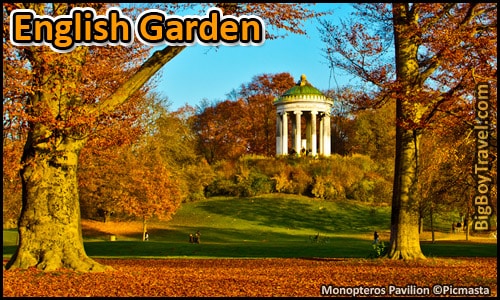
About The English Garden : Sitting as one of the world’s largest urban parks, the English Garden is the biggest in Europe and is even larger than New York’s Central Park. There can be over 100,000 people a day here in the summer, but because the park is so vast you would never notice. While you may be tempted to skip the park if cramped for time, it is too unique to skip, and serves and a great stop to rest and recharge your batteries. The highlights include World-Class river surfing, nude sunbathers, the Chinese Tower Beer Garden, and the Monopteros hilltop acropolis. Beer Garden Hours : Daily 9am-Late. 360 Degree Panorama : Click Here .
Read More : English Garden Walking Tour .
29. Beer & Oktoberfest Museum :
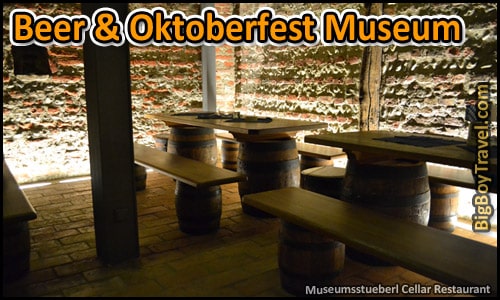
About The Beer & Oktoberfest Museum : Housed in Munich’s oldest home from 1340, this museum highlights the history of Munich’s Beer as well as the Oktoberfest celebration. Our favorite element of the amazing home is the 3 story tall the Stairway to Heaven . In medieval times it was common of stairs in a house to go up all the floors in a continuous unbroken line. As you check out the Beer Museum you follow how the making of beer was perfected in Munich including original recipes from the 1400s. The Oktoberfest Museum is a awesome step back into time showing how the marriage reception for King Ludwig I in 1810 has turned into the modern Oktoberfest. Today 600,000 people a day visit the 10 day long celebration with is a mix of state fair and beer halls. You wont find a better party in the World than you do in Oktoberfest’s mega tents which hold 4,000-10,000 people each.
Make your trip to the Beer & Oktoberfest Museum special is grabbing a bite to eat at in the basement Museumsstueberl Cellar Restaurant ( website ). The food can be a little strong on the sauerkraut, but it is about as traditional as you’ll find in Munich. The setting can also be a very romantic place to grab a drink as the tables and chairs in the cave-like, stone walled room are actually mad out of old, wooden beer and wine kegs. Museum Hours : Tuesday-Saturday 1-6pm. Museum Cost : 4€. Underground Restaurant Hours : Monday-Saturday 6pm-Midnight. Museum Website : ( HERE ).
30. Isartor City Wall Gate :
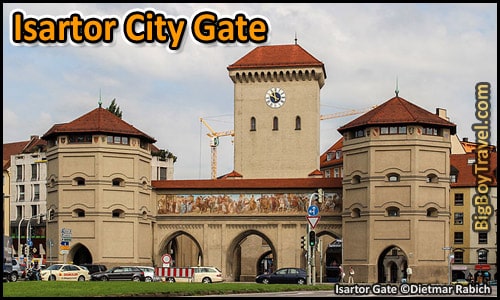
About The Isartor Gate : In 1175, the first fortified wall around Munich was completed, but the city quickly outgrew that footprint. The city of Munich was greatly expanded when a second wall was built further out from 1285 to 1337 which increased the footprint by 700% . The wall was a masterpiece, complete with a moat and eight gates, up from the original four. If you look on the map above you can see this expansion that turned the formerly oval shaped Old Town area into more of a kidney bean shape. This footprint is very important to see to help you feel more connect to the city as you follow our free Munich walking tour map.
Maybe the most important gate on the newly expanded wall was the mighty Isartor River Gate . It was nearby that in 1156 Henry the Lion built his Ludwigsbrücke tool bridge to reroute the Salt Road from Bad Reichenhall and Hallein on its way to Augsburg through Munich and established it as a town. The new Isartor Gate helped provide a curtain to protect the town as is one of only three gates still standing. In 1835, the central tower was rebuilt and frescoes depicting the victorious return of Louis IV in 1322 after the Battle of Mühldorf. Louis’ victory over the Austrian Habsburgs helped earn him the title of Holy Roman Emperor and strengthen Munich as a powerhouse in the Salt Trade through the 1300s. Today the gate is a popular spot for photographers and the attached cafe is a favorite of locals. Photos : ( Isartor Gate in 1600s ).
*Tram 19 takes you over the river and Prater Island directly to the… 32. Bavarian Parliament ( Maximilianeum ): Home of the Bavarian Parliament, Maximilianeum is a great example of renaissance architecture. While there isn’t a ton to see inside Maximilianeum, the atmosphere at neighboring Wienerplatz and it’s beer garden HofbrauKeller make it worth the trip. Wienerpatz is a cute square located just southeast of Maximilianeum which has a quaint old-world feel, complete with it’s own Maypole . A favorite backdrop for photos on the square fits the square, the May Pole, and the towering St Johns church all in one picture. If you’re starting to run short on time, feel free to bypass this stop all together by riding on Tram #17 all the way 17 to 19. 360 Degree Panorama : Click Here . Photos : ( Wienerplatz ).
*Tram 18 is the easiest way to get to the… 33. Deutsches Museum : Huge museum of arts and science spread out in a campus of buildings. It is Germany’s equivalent to the American Smithsonian in Washington DC. Great for kids and families. Restaurant Website : ( HERE ).
*Also sitting on the route for Tram 18 is one of Munich’s hidden gems, the… 34. Munich Puppet Theater ( Münchner Marionettentheater ): If you have never witnessed a classic Marionette production this is your chance. Skilled puppeteers carefully maneuver wooden characters, making them truly come to life with every string movement. The range of shows that are preformed in Munich is pretty big, but even if you aren’t familiar with the work the show will be amazing. Theater Website : ( HERE ).
35. Awesome Museums : A cluster of great museums often overlooked by tourists. Glyptohek Museum Built from 1813-1860. Is Munich’s oldest public museum; the only museum in the world that is solely dedicated to ancient sculpture. Pinakothek Art Museum is made up of a building for modern art and another for the classics.
Featured Article

Sign Up For Our Newsletter For Free Travel Tips
Email Address *
Disclaimer: Information on this page and in our walking tours were deemed accurate when published, however, details such as opening hours, rates, transportation, visa requirements, and safety can change without notice. Please check with any destinations directly before traveling.

Ostrich Trails
Because it is a walking bird and walking is what we do.
Munich Self-Guided Walking Tour
Home » Europe » Germany » Munich Self-Guided Walking Tour
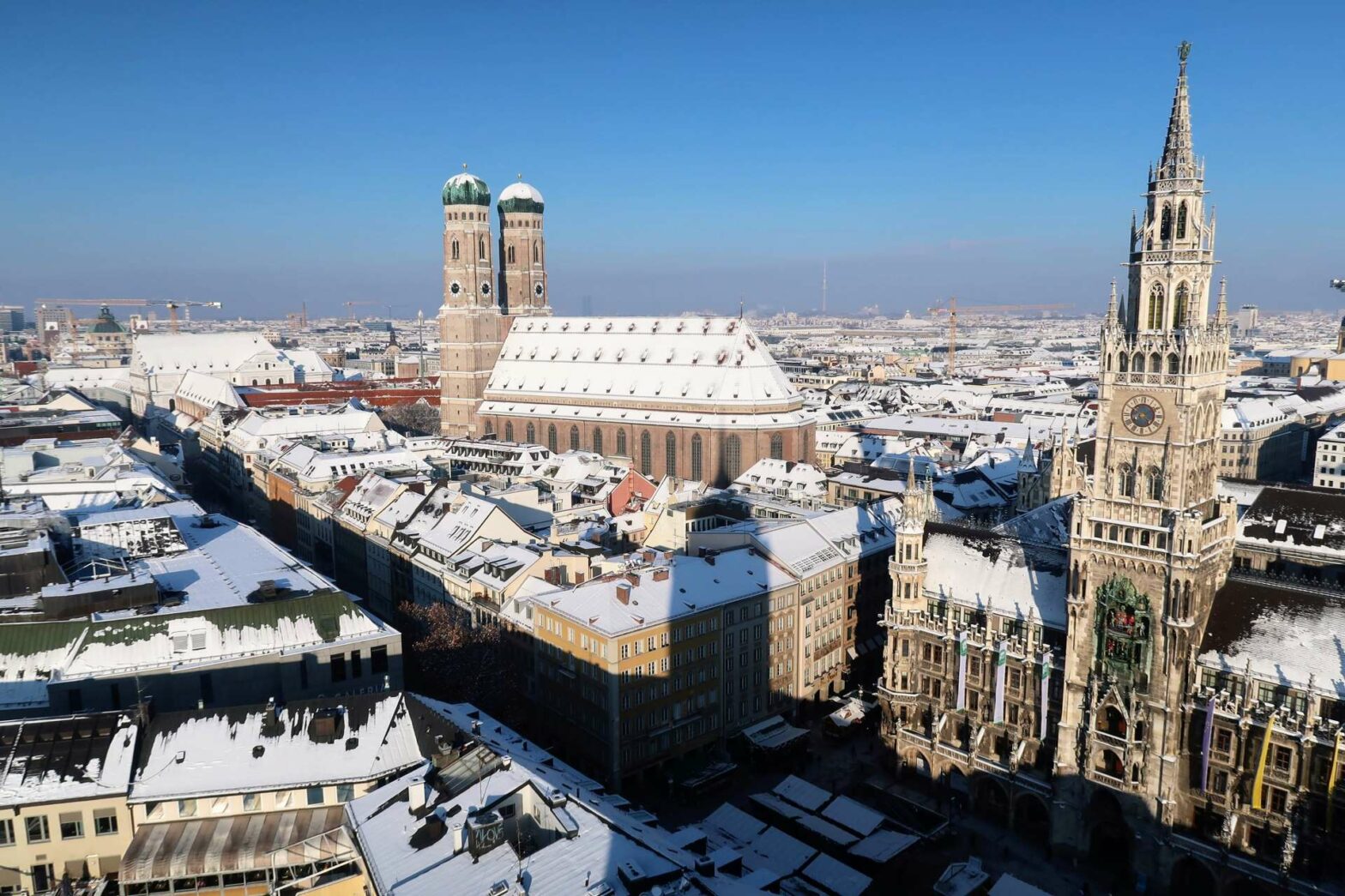
By Vicky · Published Dec. 13th, 2023 · Updated Jun. 10th, 2024
When you buy through links highlighted with an asterisk (*) on this site, we may earn a small affiliate commission at no cost to you.
Follow this free self-guided walking tour of Munich to explore all the top sights in the atmospheric centre of this grand Bavarian city.
Page Contents:
This walk starts from Karlsplatz , just a few minutes walk from Munich Central Station towards the centre of town. If you’re coming from the airport, you can take an S-Bahn (slow train) or the Lufthansa Express Bus * to the centre of Munich.
Munich Self-Guided Walking Tour Map
Get the route by downloading the .gpx or .kml file below. For navigation with Maps.me on your mobile phone, simply download the .kml file and open to add it to the Maps.me bookmarks.
Tips for Munich Walking Tour
- Many museums cost only €1 on Sundays, and many are also closed on Mondays. Most museums can be booked online in advance, which is worth doing on summer weekends. The museums all have English as well as German information.
- In summer, book lunch and dinner in advance to avoid disappointment.
- Check out other walks on our Germany Hiking Page .
Top Things to Do in Munich
On this self-guided walking tour you’ll see the main sites and attractions of Munich. Two days is the perfect amount of time to spend in Munich, though you could spend twice that time if you want to visit several of the large museums. Munich, with great train connections, also makes a good base for exploring the rest of Bavaria. This is a self-guided walking tour of Munich, if you prefer there’s a great guided walking tour *.
- Neuhauser Straße
- Marienplatz
- Frauenkirche
- Residenz Palace
- Odeonsplatz
- English Garden
- St. Peter’s Church
- Viktualienmarkt
- St. Jakobs Platz
- Museum Quarter
Munich Walking Tour Route
This walking tour starts from Karlsplatz , a semi-circular square surrounded by fancy buildings.
1. Neuhauser Straße
Leave Karlsplatz along Neuhauser Straße, the main street lined by shops, that leads to Marienplatz. You’ll first walk through the impressive Karlstor , a medieval tower dating back to the 14th century. As you head along the street you’ll pass two churches, Bürgersaalkirche and Michaelskirche, on your left. Neither look like typical churches, so you’ll need to keep a lookout so as not to miss them.
The first church is the Bürgersaalkirche (closed Sundays), which has a pinky-orange baroque front with white columns. Inside you’ll find an impressive ceiling, several worthwhile wooden sculptures, and a small, free museum displaying church treasures.
Shortly after the Bürgersaalkirche, you’ll see the Augustiner Stammhaus on your right. This is a famous beer hall serving traditional Bavarian dishes in a rather fancy building with a lovely courtyard.
Michaelskirche
Key Information: Free entry to the church, €2 to see the crypt. Closed on Sundays.
Michaelskirche * also has a very distinctive front – white with pink cavities housing statues of the Wittelsbach dynasty (the family that included the Fairytale King Ludwig II). It doesn’t really look like a church at all. You can see the tombs of several Wittelsbach members, including King Ludwig II, in the crypt.
Directions: Continue along Neuhauser Straße and you’ll soon reach the large, busy square of Marienplatz.
2. Marienplatz
Marienplatz is Munich’s main square and it’s always bustling with locals and tourists. It’s the centre of Munich old town and also the centre of the pedestrianised shopping district. There’s a nice fountain in the centre, and a very impressive Gothic town hall (Neues Rathaus) on the northern side. There are also many (slightly overpriced) cafes and restaurants surrounding the square.
Neues Rathaus
The Neues Rathaus (Town Hall) is an incredibly impressive 19th building and also the location of the main Tourist Information Centre . There’s also a famous clock, or Glockenspiel on the Rathaus with a set of figures that revolve and enact a play on certain hours – 11am, noon and 5pm. If you want to know what’s going on – it’s a joust between a Bavarian and a French knight and the display lasts roughly 10 minutes.
Directions: Walk through the courtyard in the centre of the town hall and leave via the left exit. Continue to the obvious church in front of you.
3. Frauenkirche
Key Information: Free entry.
The Frauenkirche * is a 15th-century cathedral famous for its domed towers, and its outline is a symbol of Munich. The name Frauenkirche means ‘Woman’s Church’ and it’s dedicated to the hard work of the women who helped to reconstruct the city after the Second World War. The interior is fairly plain, but the stained glass windows are worth taking a look at and there’s also a small crypt to discover.
Directions: Head back towards the town hall and turn left on the pedestrianised street just before it to reach another square.
4. Odeonsplatz
The Odeonsplatz is an elegant square that often hosts events. You’ll see the Feldherrnhalle (General’s Hall) commemorating Bavarian military leaders and a yellow church on your left.
Theatinerkirche St. Kajetan
The Theatinerkirche St. Kajetan * is a big yellow church with a rococo facade and two yellow towers. The interior is rather stunning, with great carvings and paintings. The church was built in the 17th century in an Italian Baroque style, and it was inspired by a church in Rome.
Directions: Take the first left to reach Wittelsbacherplatz , a square surrounded by elegant palaces. Return back to Odeonsplatz and across the other side into the Hofgarten . Cross over the other side and under the road into the English Garden.
5. English Garden
The English Garden * is one of the largest urban parks in the world. You can walk through the garden for as long as you want – it extends over 5 km northward from where you enter. Some of the highlights include the Monopteros (Greek Pavillion on top of a hill) and the Chinese Tower (Chinesischer Turm). This tower also has a Biergarten just next to it, a great place to relax any time of the day.
Not to miss at the southern end of the park is the Eisbach Surfing Wave *. This is an artificial continuous wave and you can spend a while here watching the locals practice their surfing techniques come rain or shine!
The Haus der Kunst (House of Art) is a grand museum next to the surfing wave. It hosts temporary art exhibits, so check the website for what’s on if you’re interested.
Directions: Cross over the road at the Haus der Kunst and walk along the road by the Bavarian State Chancellery – a fancy building with columns and a lot of glass. Just after this building turn right and then left. At the T-junction turn right and you’ll soon be at the courtyard outside the Residenz Palace.
6. Residenz Palace
Key Information: Open daily 9am-6pm in summer, 10am-5pm in winter. There are separate tickets for the Residence Museum (€9), the Treasury (€9) and Cuvilliés Theatre (€5), or you can visit all three for €17. With your ticket, you get a free audio guide.
The Residenz Palace ( Website , TripAdvisor Reviews *) is a huge former royal palace with opulent rooms, courtyards, and gardens. The rulers of Bavaria governed and lived here from around 1500 up to the First World War. Today the palace is split into three areas: the Residence Museum, the Treasury and Cuvilliés Theatre, each with its own ticket or visited together with a combination ticket. If you don’t plan to spend a long time here, the Residence Museum is the one to visit.
The Residence Museum covers the main area of the palace, and you can walk through room after highly decorated room. The audioguide describes every single room and it would take many hours to listen to every entry, so skip the ones you aren’t interested in.
The Treasury , as the name suggests, shows off some of the treasures that the owners of the Residence acquired. There’s a lot of bling and again it’s quite large. You can see sculptures, crowns and much more, often made of gold and covered in jewels.
The Cuvilliés Theatre is a very over-decorated theatre full of intricate carvings with gold everywhere. It’s very impressive, but doesn’t take long to see and is perhaps not worth the entry fee unless you get the combined ticket.
Directions: Leave the square along the Residenzstraße and take the first left along a small street to reach a little square.
The famous Hofbräuhaus is on this square, one of Munich’s oldest beer halls. It’s an iconic place to try traditional Bavarian food and beer but can be very busy in summer months.
Directions: Continue through the square then take a right and a left, heading towards the tall church.
7. St. Peter’s Church (Alter Peter)
Key Information: The church and tower are open every day, from 12:00 am to 4:30 pm. Entry to the church is free but climbing the tower costs €5/3 per adult/concession.
St. Peter’s Church * is the oldest church in Munich, dating from the 11th century. The interior of the church is beautifully decorated with an amazing painted ceiling, and don’t miss the golden Baroque high altar with its figure of St. Peter.
Although the inside of the church is worth seeing, most people visit the church to climb the tower. There are panoramic views of the city from the top if you’re up for a bit of exercise and are okay with narrow stairs. There are a few places to rest on the way up, and from the top of the tower, you get perhaps the best view of Munich. You can see the front of the Rathaus, many rooftops and church spires, and if it’s clear, you may even be able to see the Alps in the distance.
Directions: Head into the large market, on the opposite side of the church to Marienplatz.
8. Viktualienmarkt
Munich: Viktualienmarkt Gourmet Food Tour The Viktualienmarkt is a bustling food market, the largest and most famous marketplace in the city. Here you can sample Bavarian specialties and enjoy a beer at one of the beer gardens while watching the world go by. There are many small vendors selling all kinds of fresh produce and ready-to-eat food, as well as a few selling souvenirs. Take a tour of the market * to find the best stalls!
Directions: Leave the market on the opposite side and then turn right to walk through the pedestrianised square.
9. St. Jakobs Platz
There are two museums in St. Jakobs Platz, which is a pleasant square containing several cafes.
Munich City Museum
Key Information: Open Tuesday to Sunday, 10 am to 6 pm. Tickets are €6/3 for adults/concessions, and children are free.
The Munich City Museum , or Münchner Stadtmuseum, is a large museum that covers everything to do with Munich, including the rise of Hitler. The captions are in German but there’s an English audioguide to some sections.
Jewish Museum
The Jewish Museum and adjacent modern synagogue are in the middle of an open square near the Viktualienmarkt. Exhibits cover the history of Jewish people in Munich. It’s quite a small museum, mainly showing photographs with adjacent text (in German and English).
Directions: Head across St. Jakobs Platz and across the road on the other side. Continue up the small street until you reach a much larger pedestrianised street. Turn left and the church is on your right.
10. Asamkirche
The Asamkirche is an 18th-century baroque chapel. It’s quite small, but the interior is intricately decorated in a rococo style. Although the inside is striking, it’s easy to miss when walking past! Make sure to look out for the columns and vertical yellow stripes, and the entrance is in the middle. It’s one of the most impressive churches in Munich.
Directions: Continue walking along the street until you reach Sendlinger Tor , an impressive restored gate from the 14th century. There’s both a tram and a metro (U-Bahn) stop here so you can whizz around Munich. To reach the Museum Quarter , take the tram to Pinakotheken, an 8-minute journey.
11. Museum Quarter
The Museum Quarter contains many museums, but there are also several worthwhile museums outside of this area ( see below ). The most noteworthy museums in the Museum Quarter are:
- Alte Pinakothek – Old European paintings
- Neue Pinakothek – Paintings from the 18th century onwards
- Pinakothek der Moderne – Contemporary and modern art
- Museum of Egyptian Art – Egyptian artefacts
- NS-Dokumentationszentrum – Munich in the World Wars
- Königsplatz – Greek and Roman antiquities
Alte Pinakothek
Key Information: Open Tue-Sun 10am-6pm (until 8 pm Tue & Wed). Tickets cost €9/6 or €1 on Sundays, children under 18 are always free.
The Alte Pinakothek ( Website , Tripadvisor Reviews *) is one of the best art museums in Munich and one of the most renowned art museums in the world. In particular, it’s known for its extensive collection of European paintings from the Middle Ages to the Baroque period (14th-18th centuries). There are works by renowned artists such as Albrecht Dürer, Leonardo da Vinci, Raphael, Titian, Rembrandt, Rubens, and many others.
The museum was founded in 1836 by King Ludwig I of Bavaria to house the Bavarian royal family’s extensive art collection, which had been accumulated over several centuries. The building itself is also a work of art, with a neoclassical façade and a majestic entrance.
Neue Pinakothek
Key Information: Currently undergoing a major renovation, scheduled to reopen only in 2029.
The Neue Pinakothek displays works of art from after the 18th century, continuing on from the Alte Pinakothek. There are great paintings by Van Gogh, Monet and many more famous artists here, all in a lovely building. While the museum is closed, some of the best pieces are being displayed in the Alte Pinakothek.
Pinakothek der Moderne
Key Information: Open Tuesday to Sunday, 10 AM to 6 PM, with late night opening hours until 8 PM on Thursdays. Tickets are €10, or €1 on Sundays, children are always free.
The Pinakothek der Moderne is a large museum housing contemporary art. The exhibits are very diverse and most are interesting, with sections on everything from industrial design to robotics to famous Picasso paintings. The architecture of the building itself is also interesting.
Munich Museum of Egyptian Art
Key Information: Open Tuesday to Sunday, 10 AM to 6 PM, with late night opening hours until 8 PM on Tuesdays. Tickets are €7, or €1 on Sundays, children are always free.
The Munich Museum of Egyptian Art has a great collection of Egyptian artefacts and is a real hidden gem in Munich. The museum building itself has an architecturally impressive design, and the layout of the exhibits is also very well thought out. The exhibits cover the time from 5000 years ago all the way to several hundred years ago, not stopping with the Ancient Egyptians like most Egyptian museums. The entrance can be hard to find – it’s the small dark space at the bottom of the wide concrete steps.
NS-Dokumentationszentrum Munich
Key Information: Open Tuesday to Sunday, 10 AM to 7 PM. Free entry.
The NS-Dokumentationszentrum Munich tells the story of Munich during the First and Second World Wars. The exhibits are well laid out, and there’s lots to read as well as watch so you could easily spend a few hours here.
Königsplatz
Königsplatz is a square that looks quite out of place, surrounded by Ancient Greek-style buildings and with a triumphal arch. On the north side is the Glyptothek , a museum of ancient Greek and Roman sculpture. While on the south side is the State Collections of Antiquities .
Other Museums in Munich
Apart from those in the Museum Quarter, there are several other notable museums in Munich, listed below.
Deutsches Museum
Key Information: Open daily from 9am to 5pm. Tickets cost €15/8 for adults/children, with discounts for families. There’s a restaurant, a cafe and kiosks in the museum for refreshments. Buy tickets online on summer weekends. All captions are in both English and German.
The Deutsches Museum ( Website , Tripadvisor Reviews *) is one of the world’s largest science museums. You could spend almost an entire day here if you want to see everything, or if you have just a few hours, plan to focus on just a couple of exhibitions. The exhibits include historic aircraft, music, health, robots, mining, bridges and a lot more. It’s a great museum for kids, and there’s an entire children’s zone downstairs where they can be kept amused for hours.
Olympia Park
Olympia Park is a large park to the northwest of the city centre, developed to hold the 1972 Olympics. Today you can visit the Olympic Stadium (€3.50), and even tour the rooftop and bungee jump off the roof. There’s also a tall tower, the Olympiaturm, which you can go up to admire the views. Alternatively, there are a couple of hills within the park that you can walk up for similar views. If it’s a clear day you can see the Alps!
BMW Welt & Museum
Key Information: BMW Welt (BMW World) is free, but you have to get tickets to the BMW Museum (€10). BMW Welt is open from 7:30am to midnight Mon-Sat, and from 9am on Sundays. The BMW Museum is open Tue-Sun 10am to 6pm.
At the BMW complex ( Website , Tripadvisor Reviews *) are BMW Welt and the BMW Museum. BMW Welt is free to look around and displays shiny new cars as well as older models and motorbikes. BMW owns Mini and Royles Royce amongst others, so you’ll also see lots of these brands here. It’s quite fun to visit, even if you don’t really care about cars.
You have to pay for the BMW Museum, which is across the covered bridge from BMW Welt. The museum is more about the technical development of cars and motorbikes, as well as the history of BMW. Tours of the museum in both English and German take place regularly.
What to do in the evening in Munich
There are several great ways to spend an evening in Munich, from traditional breweries to concerts and evening walking tours:
- Sample Bavarian food and beer *
- Go to a concert at the Munich Residenz *
- Tour the old town with a nightwatchman *
Guidebooks to explore more of Germany

For more walking tours and hikes in Germany, see our Germany hiking page .
Related Posts
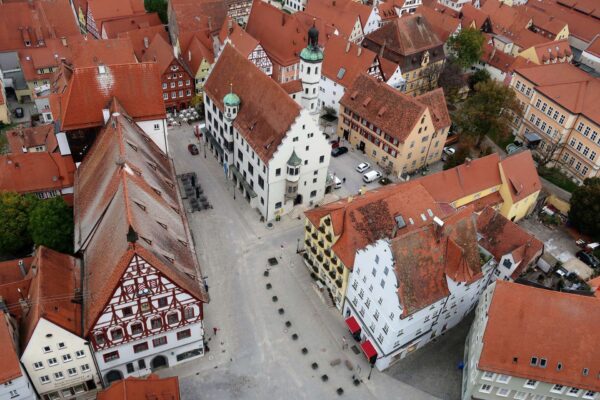
Nördlingen Walking Tour

Rottenburg Walking Tour

Friedrichshafen Walking Tour

Best Day Trips from Munich
Leave a comment cancel reply.
Your email address will not be published. Required fields are marked *
This website uses cookies to improve your browsing experience and analyze the use of the website. Learn More

Munich Self-Guided Walking Tour Map

As a tour guide, I love to help travelers discover this city in a way they wouldn't be able to do on their own. Unfortunately, not everyone has the time to join me or other guided Munich tours, and some actually prefer to explore and experience new cities on their own.
With that in mind, I created this self-guided Munich tour to provide interesting details some of the most historic and notable sites in the area while also giving you an idea of where the most noteworthy attractions are located.
I’ll also include a Munich walking tour map to help you find your way around the city.
Self-Guided Tour
- Munich Audio Tour
- Free Munich Walking Tours
My self-guided tour of Munich will cover a lot of significant sites in the city centre, including 12 different stops of varying historical or social importance.
Here is a list of each site you’ll visit on the tour, as well as a map with directions to each location.
Munich Walking Tour Map
Click here to open the map in a new tab .
Marienplatz
St. peter’s church, jewish synagogue, asam church, st. michael’s church, frauenkirche, hofbräuhaus, max-joseph-platz, munich residenz, odeonsplatz.
The tour begins at Marienplatz near the New Town Hall and at one of the most central spots in Munich.
The tour will take you around the city in pretty much every direction, and you should wear comfortable shoes and socks for the walk.
You can also use public transportation or perhaps rent a bike to get around the city much easier.
If you’re looking for help from a professional guide, consider taking a pay-what-you-want Munich walking tour instead.
NOTE: This tour is loosely based on an audio tour from Rick Steves , and you can use that service while following the map above.
There are 12 stops on this self-guided Munich tour, and we will provide details about each location.
We will also include directions to help you find each stop on the tour.
Don’t forget that there is also a free audio tour available .
If you have a smartphone and earbuds or headphones, this could be a great alternative.
This plaza has been the main central square of Munich since 1158. It wasn’t always just a public square, as it was originally called Markth (market).
The site became so well-known as a marketplace for grain that it eventually earned the title of Scranne (grain market), and then Schranneplatz (grain market square).
It wasn’t until the Scranne was moved to another location in 1853 that this public square earned its current name, which translates to Mary’s Square.

This plaza is named after Mariensaule, a Marian column located at the centre of Marienplatz.
This column depicts the Virgin Mary at the top and it was erected to celebrate the end of the Thirty Year’s War and subsequently the cessation of Swedish occupation in Munich.
Every December, this public square is transformed into a Christkindlmarkt for three weeks before Christmas where you can find festive gifts, foods, and drinks.
If you face south in Marienplatz, you’ll find our next stop right down Rindermarkt street and to the left.
This Roman Catholic church is the oldest in Munich and the point at which the entire city originated.
Its 91-metre (299 ft) tower is colloquially known as “Old Pete,” and it’s a well-known site people will use to orient themselves while walking around the city.
Even before Munich was founded, there was already a Merovingian church at this location which was used by monks as early as the 8th century. At that time, the church was called Petersbergl.
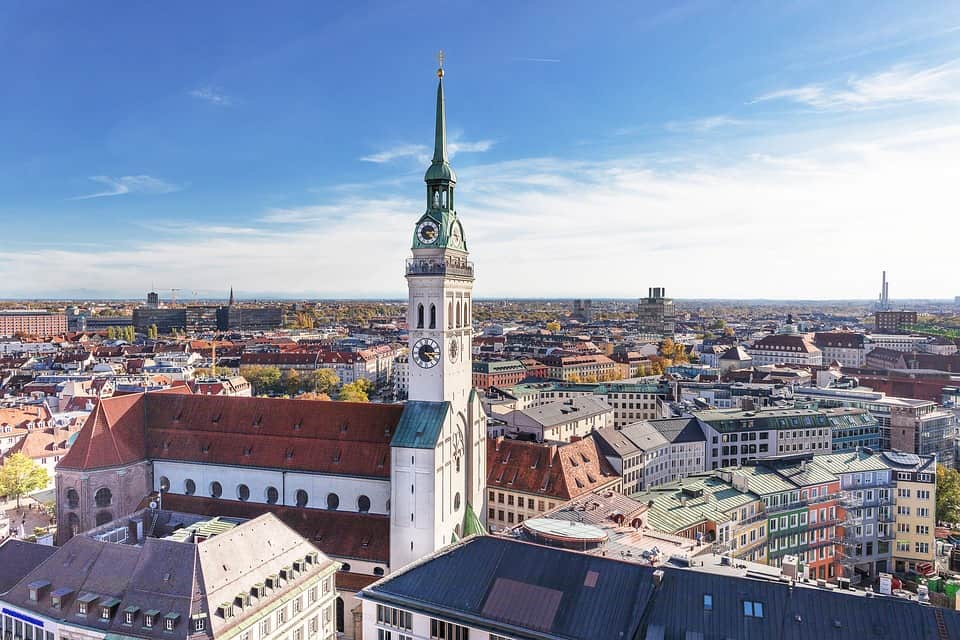
Eventually, a new church took its place and was consecrated at the end of the 12th century.
Throughout centuries of different renovations done at St. Peter’s Church, several different architectural styles have been adapted into its structure including Bavarian Romanesque, Gothic, Renaissance, and Baroque.
The interior includes a beautiful fresco by Johann Baptist Zimmerman, paintings by Jan Polack, and altars by Ignaz Gunther.
To reach the next stop, head to the back end of St. Peter’s Church and walk south down Peterspl. Turn right on Viktualienmarkt and keep walking south until you reach Prälat-Zistl-Straße.
Keep walking south on Prälat-Zistl-Straße until you reach Sebastianspl. Turn right and walk west to Sankt-Jakobs-Platz. Follow this road west until you reach the Jewish Synagogue.
This site is known as Ohel Jakob Synagogue, it’s actually relatively new and was built in 2006. There was another synagogue nearby, but it was sadly destroyed in 1938 upon the orders of Adolf Hitler.
Following WW2, the Jewish population of Munich was gone, but in the years since many Jewish people have moved back into the city and population levels are now where they were before the war.
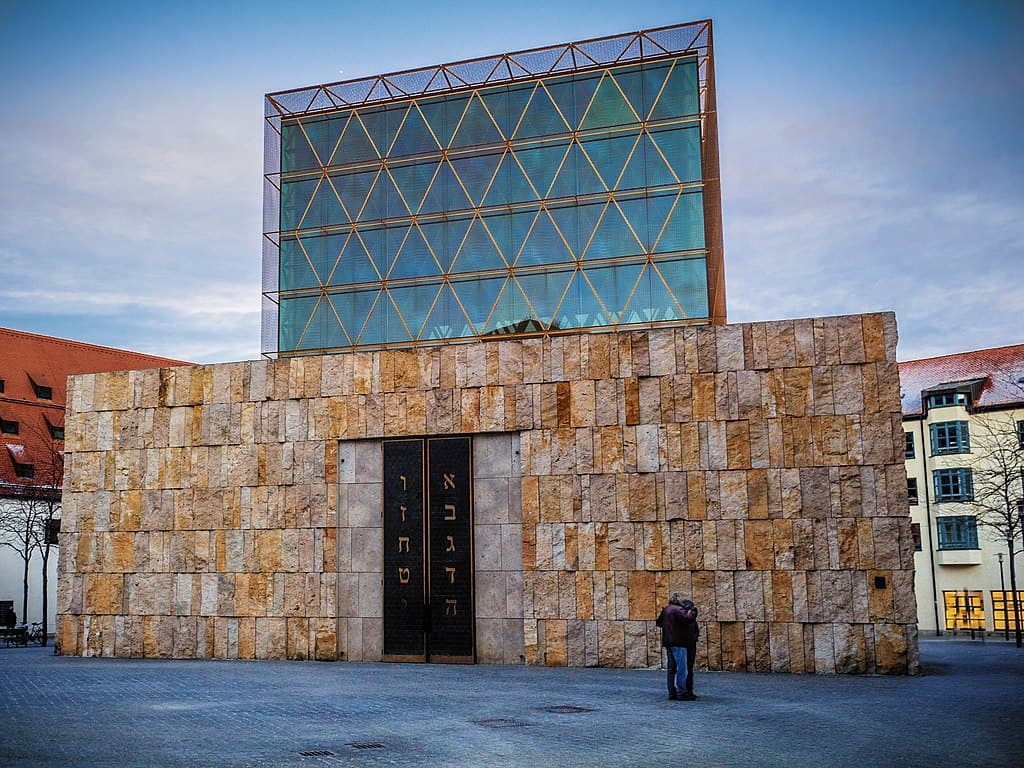
The synagogue is closed off to all non-worshippers, but the Jewish Museum behind it is open to all visitors. They house a permanent collection and also offer temporary exhibits every few months on average.
Just north of the synagogue, you’ll also find the Munich City Museum. If you want to learn more about this city, the museum covers both its medieval and modern history.
To reach the next stop on this tour, walk northwest past St. Jakobs-Platz, past Oberanger Street and onto Dultstraße.
When you reach Sendlinger Street, turn left and head southwest past Herrmann-Sack-Straße. When you reach Singlspielerstraße, our next stop will be on the right.
Built between the years of 1733-1746, this Baroque church is one of the most unique in all of Germany.
Brothers Egid Quirin Asam and Cosmas Damian Asam had the building constructed to serve as their own private church.
Since the construction was not under the control of a religious order, they had the opportunity to build this church with the design elements they wanted to see.
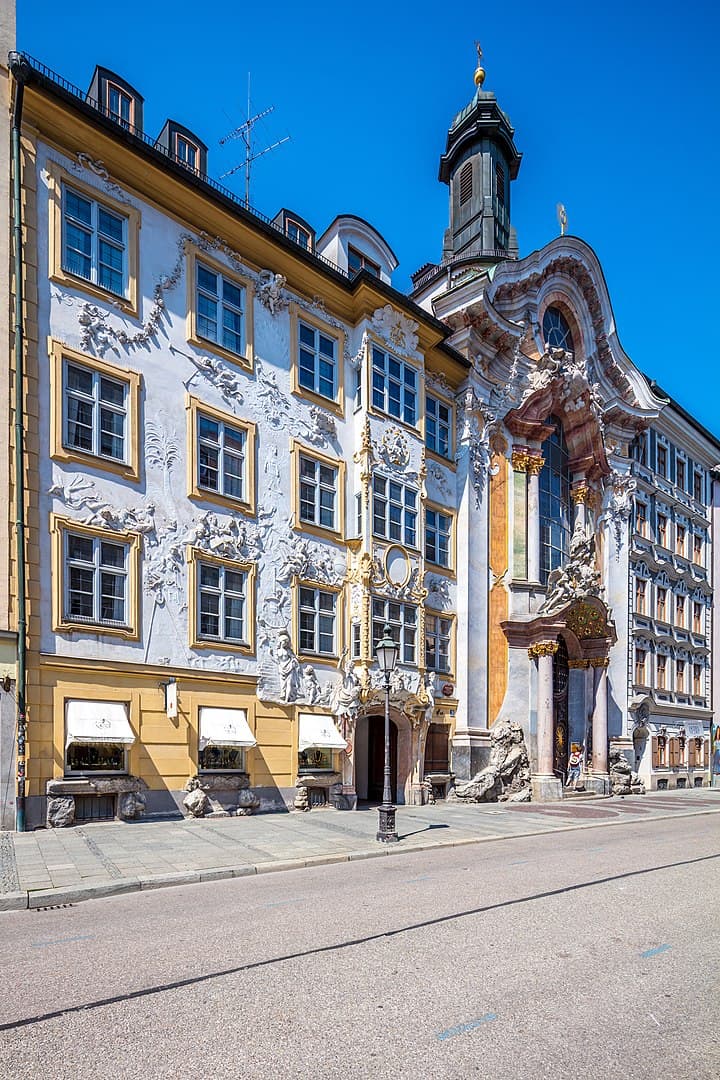
The Asam brothers were both artists. While Egid was a respected sculptor, Cosmas was one of the great painters of his time.
You can see some of his work in the fresco of the church, entitled “Life of Saint Nepomuk.” Many consider this one of his greatest pieces of art.
The two brothers both studied under Lorenzo Bernini, one of the greatest Italian sculptors of the 17th century.
Bernini is credited with creating the Baroque style, so the architecture you see on display here is among the most authentic you’ll find in the entire country.
When you’re done looking around, head back up Sendlinger Street until you reach Fürstenfelder Street. Turn right and then make a left on Rosenstraße.
This street will take you back to Marienplatz, where you should turn left and walk west down Kaufingerstraße until you reach Ettstraße.
This is the biggest Renaissance church you’ll find to the north of the Alps, and its architectural style actually influenced early Baroque architecture in Germany.
St. Michael’s is one of the most notable Jesuit churches in the country.
Built in 1583 and consecrated in 1597, this religious structure has the second largest barrel-vaulted roof in the world, beaten only by St. Peter’s Basilica in Rome.
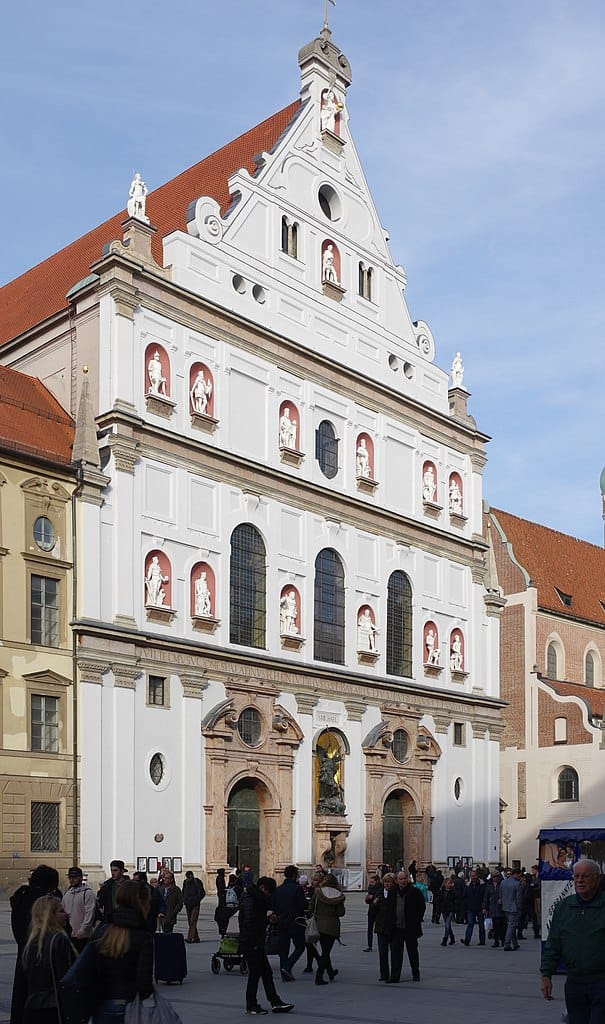
Many important people are buried in the crypt of St. Michael’s, including Bavarian royalty such as King Ludwig II, King Otto, and Prince Leopold.
To find our next stop, head back down the way you came on Neuhauser Street and turn left at Augustinerstraße. This street will lead you right to the next big church on the tour.
Also known as the Cathedral of Our Dear Lady, this is actually a somewhat common name for churches in Germany.
What sets the Munich Frauenkirche apart from others is its status as the cathedral of the Archdiocese of Munich and Freising, and the seat of its Archbishop.
It’s difficult to miss this church when walking around the city, as its towers are among the largest structures in the area at 99 metres in height.
If you’re interested, the south tower is usually open for visitors to climb to the top and enjoy great views of Munich.
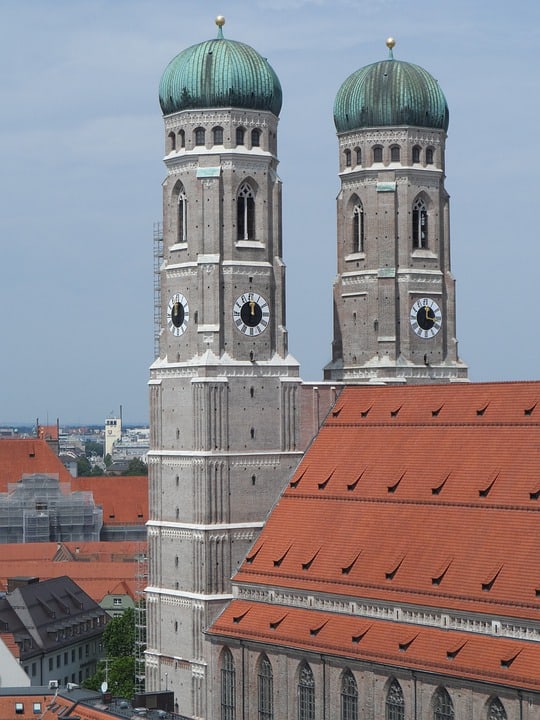
This church features elements of both Gothic and Renaissance architecture because it was built in the late 15th century, but the domes of the tower were added in the 16th century.
There are a lot of beautiful works of art inside this church from notable artists such as Jan Polack, Hans Leinberger, Ignaz Gunther, and others.
Many famous and important people were buried here including Roman Emperor Louis IV and King Ludwig III.
Our next stop is a few blocks east, so begin heading past Frauenkirche to Löwengrube, which quickly turns into Schäfflerstraße. We recommend walking through the Marienhof park and onto Hofgraben on the other side.
Eventually this street turns into Pfisterstraße, which will lead you to our next stop if you keep walking east.
This public square is named after the restaurant and theatre which were once located in the area. From 1368-1805, this location was actually referred to as Graggenau, roughly translated to “the Point.”
The Theater am Platzl stood here from 1901-1995, and it was mostly frequented by folk singers.
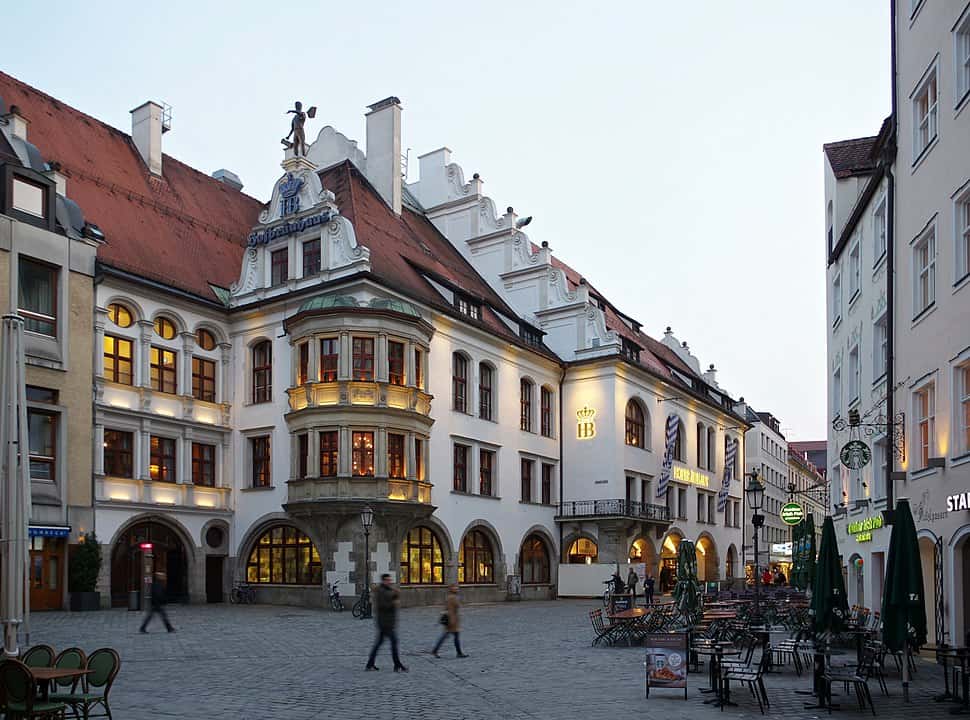
The most famous building here is the Hofbräuhaus, but that’s our next stop, so we’ll cover it a little later.
Another notable site nearby is the Orlando House, a five-story home to the north of the square.
This house was built by Max Littmann, who also built the Hofbräuhaus. Today, the building is registered in the Bavarian List of Monuments.
There are several restaurants and plenty of outdoor seating for customers in the area, so you might want to stop and take a break while you’re here. That said, we recommend saving your appetite for beer if you plan to visit Hofbräuhaus.
This famous beer palace is the home of the Hofbräu brewery, and it’s definitely a popular stop for beer lovers around the world.
Constructed in 1589, this is one of the oldest breweries in the world which is still in operation today.
If you’ve ever wondered why beer is so popular in Germany, it’s because hundreds of years ago it was actually considered a substitute for food due to its contents of barley, hops, and yeast.
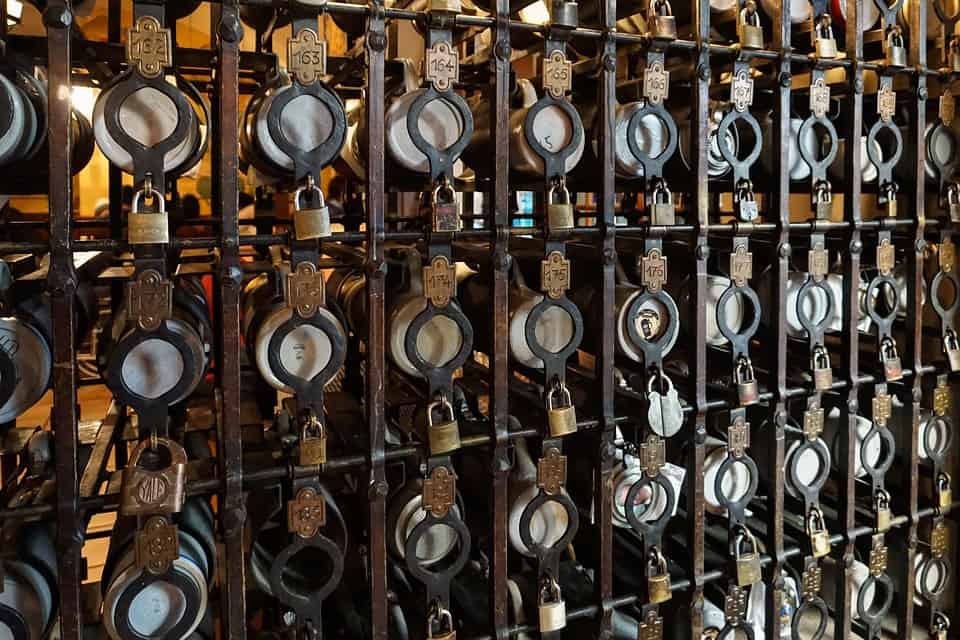
In other words, beer is almost like an essential part of a meal for many Germans.
Back in 1844, King Ludwig I actually set the price of beer lower than usual because he wanted to “offer the military and the working class a healthy and cheap drink.” Yes, beer was considered healthy!
The beer hall at Hofbräuhaus has space for about 1,000 people, and the ballroom can fit close to 1,500 guests.
During the summer, the inner courtyard is usually turned into a beer garden. If you’re visiting during the warmer months, you might want to check and see if this beer garden is open.
Once you’ve had your fill of beer, head back up to the Platzl square and continue north onto Am Kosttor. Turn left when you reach Maximilianstraße and walk west until you reach a plaza on the right.
This public square was constructed at the same time as the nearby National Theatre in 1818. The plaza was named after King Maximilian Joseph.
The building to the north is the Königsbau of the Munich Residence, a former royal palace. We’ll talk more about this location later, as it’s the next stop on our tour!

To the south of the square you’ll see several Neo-Renaissance arcades that were once part of the former Palais Toerring-Jettenbach.
You’ll see a monument at the centre of the square which was erected in honor of King Maximilian Joseph. The statue could not be revealed until 1835 (10 years after the king’s death) because he did not want to be eternalized in a sitting position.
Head past this plaza and take a good look at the buildings lining its northern side as you walk up Residenzstraße to our next stop.
This is the former royal palace of the Wittelsbach monarchs of Bavaria. The Munich Residenz is an amalgamation of several different buildings constructed for royalty between the 14th-20th century.
With so many structures attached to the Residenz, it actually qualifies as the largest city palace in all of Germany, and it’s now open to the public.
This palace has a combined 10 courtyards, 130 rooms, and dozens of buildings. If you want to learn more about this location, consider visiting the Residenzmuseum in Königsbauhof.
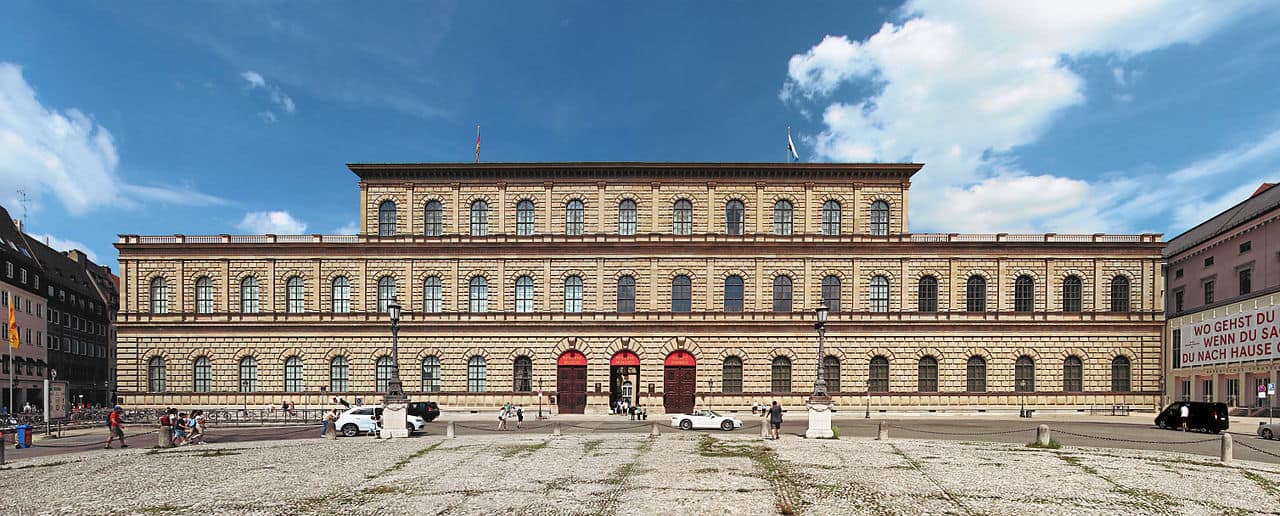
Another notable site here is the Treasury, which contains the jewels of the Wittelsbach dynasty.
This building also includes important relics such as Emperor Charles the Bald’s prayer-book, the altar-ciborium of Emperor Arnulf of Carinthia, and many other historic artifacts.
The Munich Residenz also houses the Bavarian state coin collection with more than 300,000 coins, medals, and banknotes dating back to ancient periods in human history. This is one of the most impressive coin collections in the world.
Our next stop is just north on Residenzstraße, at the northern end of the palace.
This is one of the more historically relevant public squares in Munich. One of the most notable events that took place here was the gun battle that ended the march on Feldherrnhalle during the Beer Hall Putsch in 1923.

The square is named after a former concert hall called the Odeon located on the northwestern side. You can also see the northern end of the Munich Residenz on the southeastern end of the plaza.
On the southwestern side of the square you’ll see the Theatinerkirche, a Baroque church built in the 17th century.
Many notable people are buried here, including King Maximilian Joseph, Holy Roman Emperor Charles VII, King Otto of Greece, and many others.
Our final stop is at the northeastern end of Odeonsplatz, the Hofgarten.
Built in the 17th century, this Italian Renaissance garden is a great place to finish your tour. There is a pavilion for the goddess Diana at the centre of the Hofgarten.
On the east side of the garden you’ll see the Bavarian Staatskanzlei, also known as the State Chancellery. This was once an Army Museum, but it was repurposed in 1993.
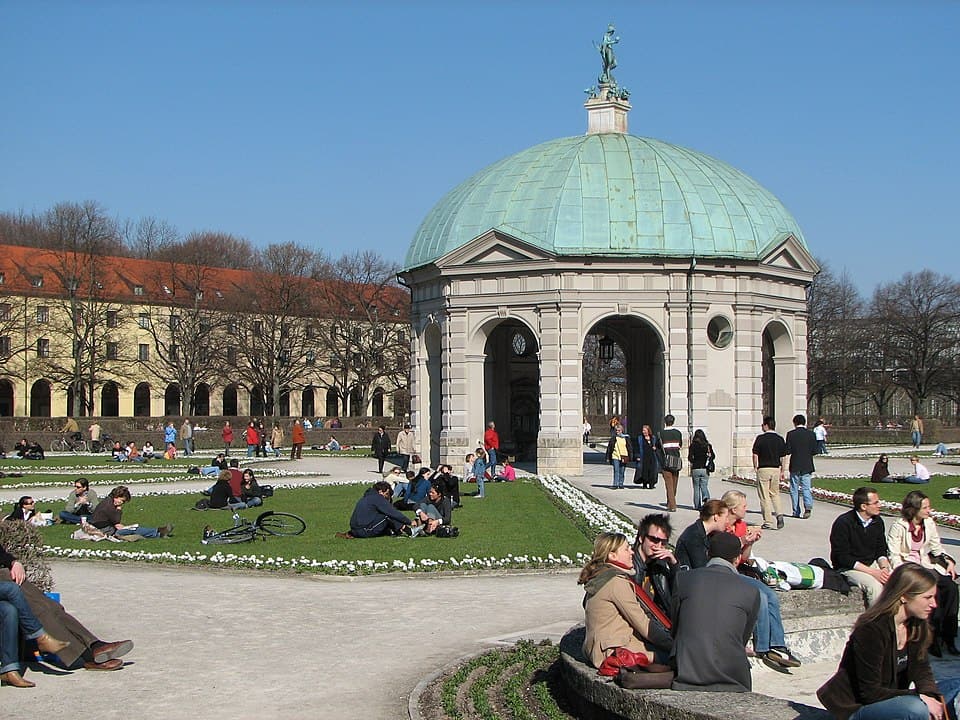
If you choose to walk over to the Staatskanzlei, you’ll find the Kriegerdenkmal (War Memorial” in front of the building. This is a memorial to commemorate the people of Munich who were killed in action during WW1.
At the northeast corner of the garden, you’ll find a black granite memorial in honor of the White Rose group. This organization was executed for committing to non-violent action against Hitler’s regime.
There are a lot of other things to see here including arcades on the southern side with wall paintings telling the history of Bavaria.
We recommend taking a good look around the serene Hofgarten to see as much as possible before heading back toward the city centre. Take a break and enjoy a walk through a garden!
RELATED POSTS
- Other Tours in Munich
Choose a Destination... I want them all PLUS general travel tips. Amsterdam Berlin Boston Charleston Chicago Dubai Lisbon London Los Angeles Miami Nashville New York City New Orleans Paris Philadelphia Prague Rome San Francisco Washington DC
About The Author


Stephen Pickhardt
North america, united kingdom & ireland, middle east & india, asia & oceania.

The Ultimate Free Walking Tour of Munich (For 2023)
This article may contain affiliate links, meaning I may earn a small commission if you purchase through these links at no extra cost to you. Please refer to my Disclosure Policy for more information.
Table of Contents
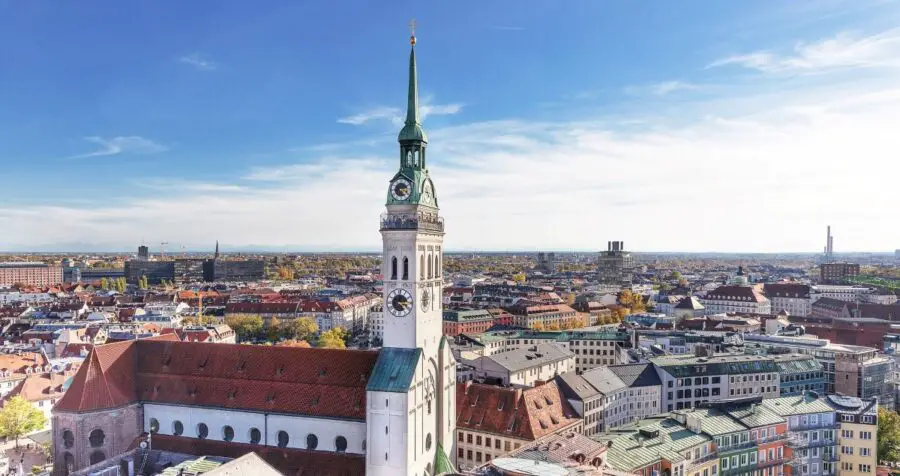
Ah… Munich. A city known for Oktoberfest, Munich offers more than just beer. Filled with museums and historical sites and surrounded by extravagant castles, Munich is one of the best cities in Germany. And there’s no better way to explore this delightful Bavarian city than on a free walking tour of Munich!
This self-guided Munich walking tour is not just doable — it’s called for. Where else can you find over a dozen historical monuments, breathtaking city views, and lively plazas packed into less than one kilometer?
And while some walking tours of Munich may be tiring, this one has a total walking distance of only 35 minutes . This means you’ll have plenty of time to take it easy, wander around, and dive into the legends of these unique Munich landmarks.
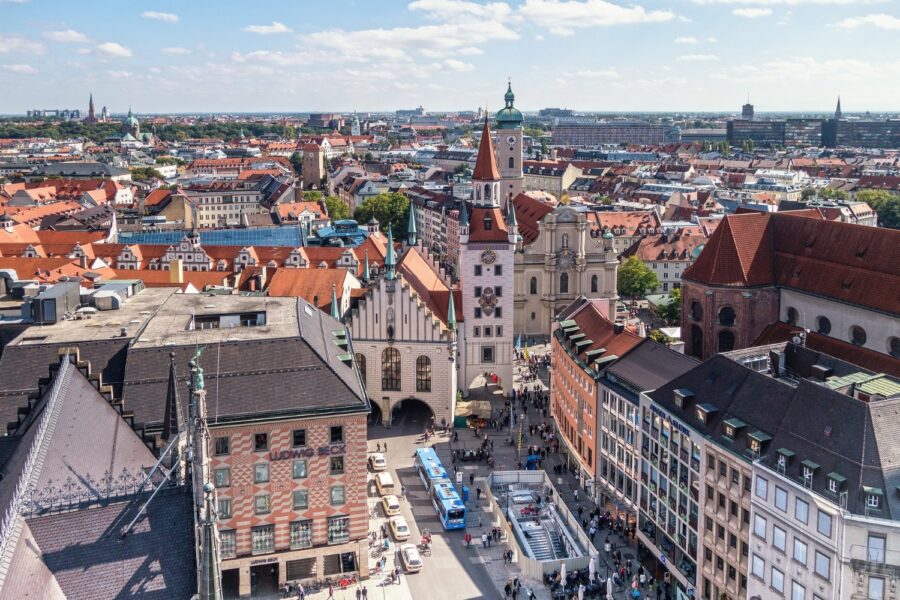
However, you should still set aside at least 1 day in Munich to do this tour, as there’s plenty to do at each stop.
Well, without further ado, let’s begin!
A Quick Summary of Your Free Walking Tour of Munich
- Karlsplatz-Stachus
- Bürgersaalkirche (Citizen’s Hall Church)
- Michaelskirche (St. Michael’s Church)
- Frauenkirche (Church of Our Lady)
- Marienplatz
- Neues Rathaus (New Town Hall)
- Altes Rathaus (Old Town Hall)
- Peterskirche (St. Peter’s Church)
- Asamkirche (Asam Church)
- Viktualienmarkt (Victuals Market)
- Hofbräuhaus München
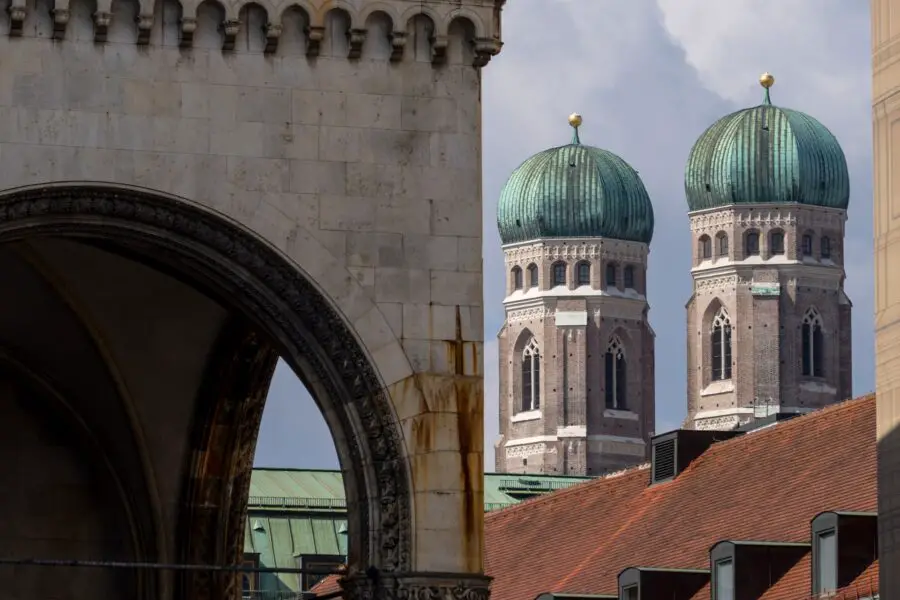
Needless to say, this free walking tour of Munich will take you to all the top spots . So get your camera ready, put on some comfortable shoes, and prepare to spend one perfect day in Munich (one of the best places to visit in Bavaria !).
The Ultimate Free Walking Tour of Munich
1) karlsplatz-stachus.
- Opening Hours : None
- Cost : Free
Your Munich walking tour starts at Karlsplatz-Stachus, the most famous square in Munich.
It practically connects all the city’s transportation lines, making it one of the top hubs in Munich. In the mid 20th century, it reportedly had the most traffic in all of Europe ! This led to a saying that spread well beyond Munich: “Da geht’s ja zu wie am Stachus,” which is similar to the UK expression “It’s like Piccadilly Circus.”
Needless to say, there is always something to do at Karlsplatz-Stachus. On the eastern side, you can admire the gothic gate “Karlstor.” In the summer, you can enjoy some ice cream while sitting by the picturesque fountain. And in the winter, this fountain turns into a huge Munich ice rink!
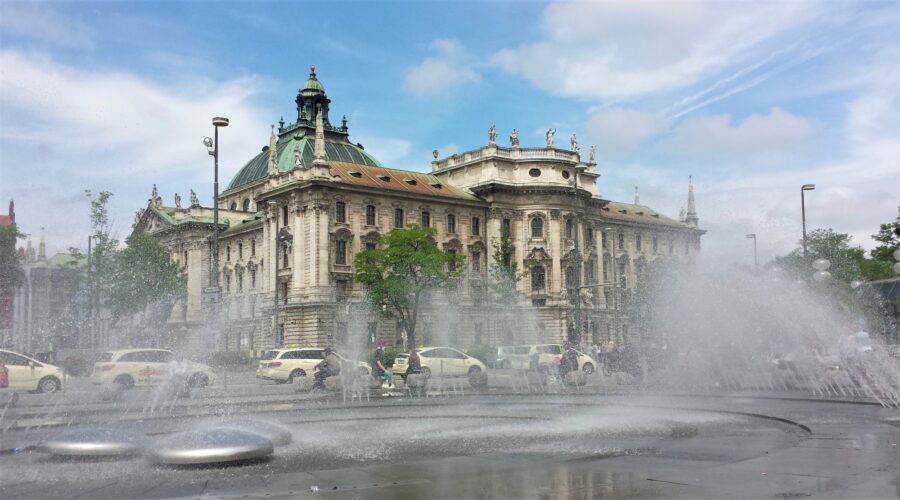
There are also endless shopping opportunities, including:
- Kaufhof : Built in 1950, this was the first department store in Munich.
- Stachus Passagen for some underground shopping.
- Shops, cafes, and restaurants lining the square.
- The entrance to Neuhauserstraße and Kaufingerstraße , the two main shopping streets of Munich.
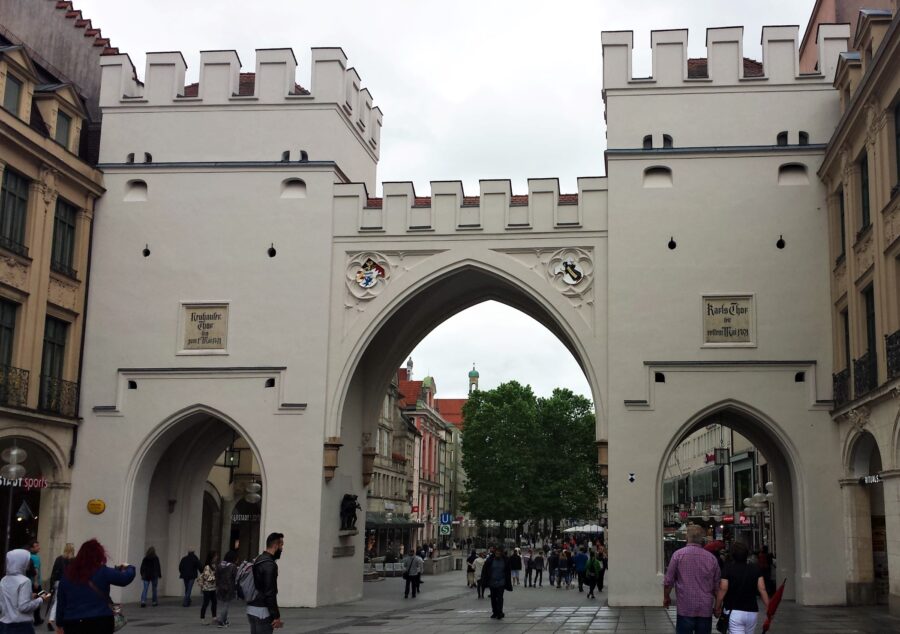
But before checking out the shops or continuing with our tour, take your time to soak up the atmosphere at Stachus. We will gradually head down Neuhauserstraße for the next stops on our free walking tour of Munich!
The Funny Story Behind the Dual Name of Karlsplatz-Stachus
The square was built in 1777 when the Elector Karl Theodor took over the government of Bavaria. Like any modest ruler, he named the new square after himself — Karlsplatz. But he was so unpopular with the residents that they refused to use that name . And so the square became known as Stachus, in memory of the tavern that was displaced for the square’s construction.
2) Bürgersaalkirche (Citizen’s Hall Church)
- Opening Hours : Upper church: Monday-Saturday, 11 am-1 pm. Lower church: Monday-Saturday 10 am-5 pm, Sunday 2 pm-5 pm.
- Walking Time from the Previous Stop : 4 minutes
- Website : https://www.mmkbuergersaal.de/
From Karlsplatz-Stachus, walk four minutes to our next stop: Bürgersaalkirche, otherwise known as the Citizen’s Hall Church.
From the outside, Bürgersaalkirche kinda looks more like a government building than a church. And, as a matter of fact, it was first built in 1709 as a “citizen’s hall” (hence the name), and was only consecrated in 1778. The church is also divided into an upper floor and a lower floor, with the exterior pink façade showing this division.
In the upper church, you’ll find the brightly lit, ballroom-like prayer room . Everywhere you look, there are works of art in the form of frescoes, paintings, and statues.
In the lower church, you can find the crypt of Ruper Mayer , a Jesuit priest known for his resistance against the Nazis. For a bit of history, I recommend walking around the small museum room containing memorabilia from his life.

If you’re planning to visit Germany but you’re still in school, click here to read my guide on how to travel as a student!
3) Michaelskirche (St. Michael’s Church)
- Opening Hours : The Crypt is open Monday to Friday from 9:30 am-4:30 pm, and the weekends from 9:30 am-2:30 pm.
- Cost : Free (or 2 euros to enter the Crypt).
- Walking Time from the Previous Stop : 2 minutes
- Website : https://www.st-michael-muenchen.de/en/
The next stop on our walking tour of Munich is St. Michael’s Church: an art gallery, an architectural masterpiece, and a place of worship all in one!
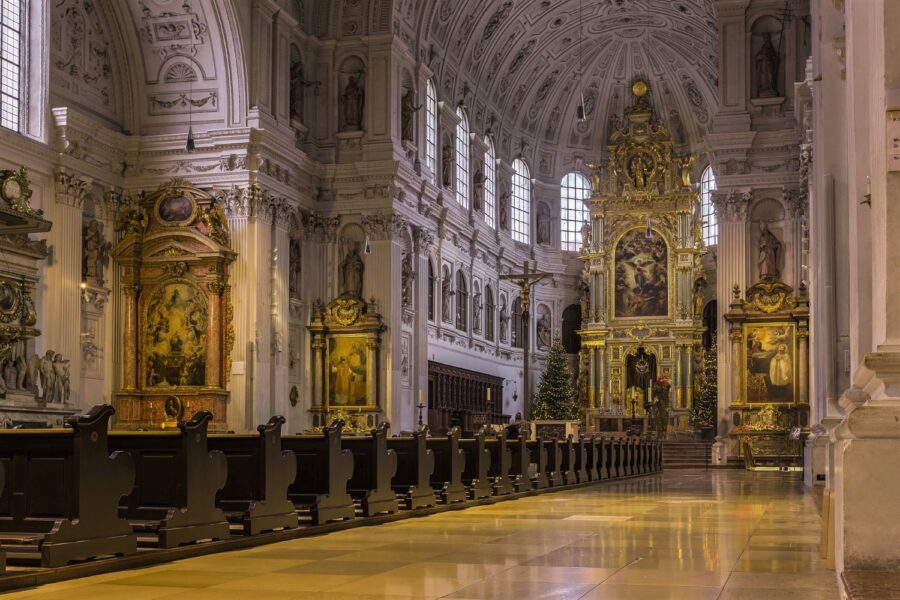
Built in the late 16th century, Michaelskirche was modeled after the Church of the Gesù in Rome. It’s best known for having the second largest vaulted roof (after St. Peter’s Basilica in Rome).
If you look between the two entrances, you’ll see St. Michael, the Archangel, slaying a dragon-like creature, which was meant to symbolize Catholicism triumphing over Protestantism in the Counter Reformation era.
And hey, if you’re craving a little company, why not visit the “Mad” King Ludwig II in the crypt ?
4) Frauenkirche (Church of Our Lady)
- Opening Hours : Monday to Saturday 8 am-8 pm, Sunday 9:30 am-8 pm.
- Walking Time from the Previous Stop : 3 minutes
- Website : https://www.muenchner-dom.de/
Next, head over to Frauenkirche, one of the most popular landmarks in Munich.
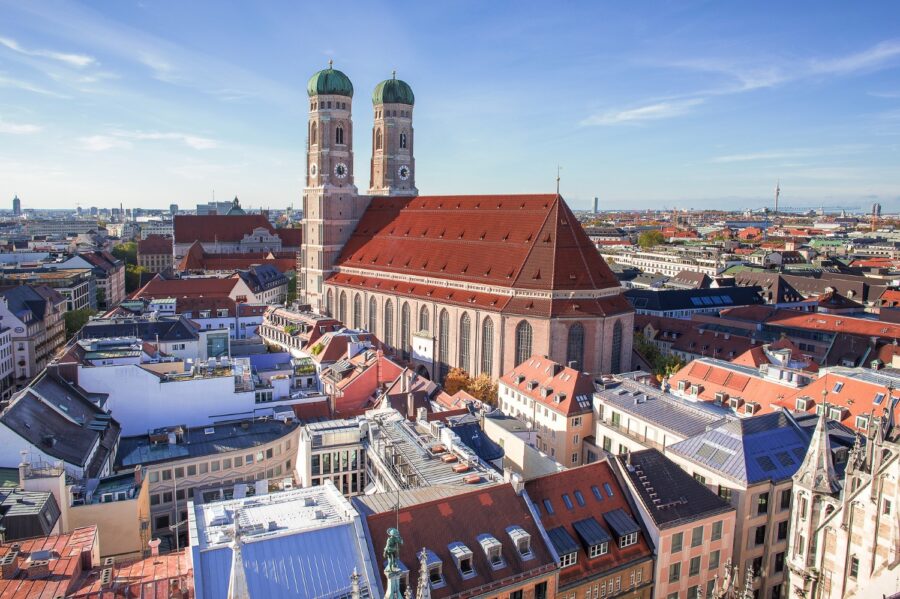
The original plan for Frauenkirche was a grand church of the likes of Stephansdom in Vienna. But budgetary constraints unraveled these plans into the plain red-brick construction that it is today.
In the end, this lack of funding is what shaped the church into the remarkable mix of styles that makes it so unique. By the time the towers were finally finished, the Renaissance era had started. Thus, domes were installed instead of the intended Gothic pointed towers.
These towers are an iconic part of the Munich skyline , jutting out far past any other building. The residents of Munich are deeply passionate about their city’s “mother church”; in 2004, they even voted to prohibit building anything taller than 98.57 meters — the height of Frauenkirche.
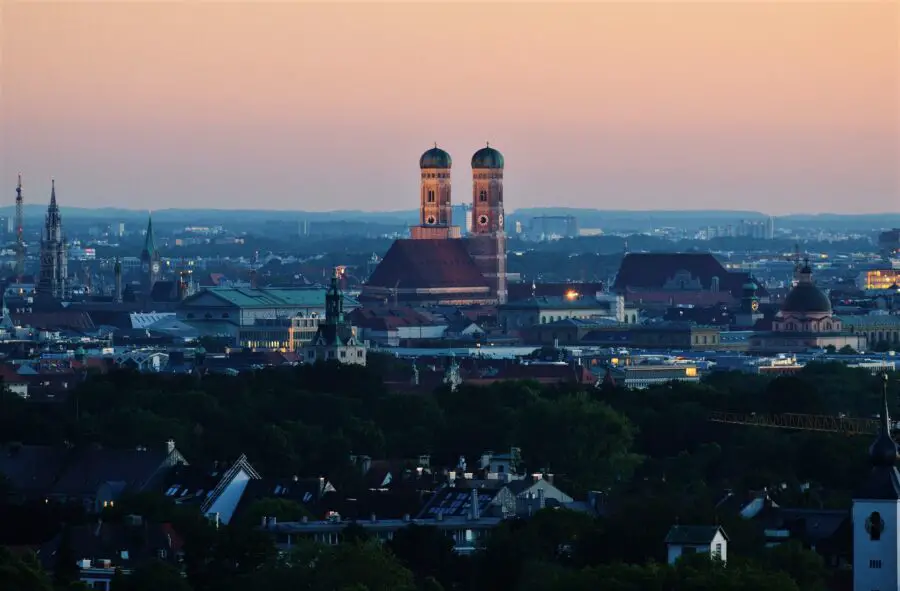
Inside, Frauenkirche has a remarkable capacity of 20,000 people. The decorations are simple, but there are still tons to admire, including:
- Gothic pillars
- Original stained-glass windows
- 14th-18th century artwork
- A 16th-century automaton clock
- The tomb of Holy Roman Emperor Louis IV
The Legend of the Devil’s Footprint
By the entrance, you’ll also notice a black mark resembling a footprint . Legend says the master builder Jörg von Halsbach struck a deal with the devil to ensure they had enough money for the church’s construction. In exchange, he promised to not build any windows, meaning the church could not be consecrated.
Stepping inside the completed church, the devil could not see the windows at first, as they were hidden from view by the columns and buttresses. But when he realized he’d been duped, he stomped his foot in anger and turned into the wind to try to blow the church down. If you stand outside the church, you can still feel the devil’s vain efforts!
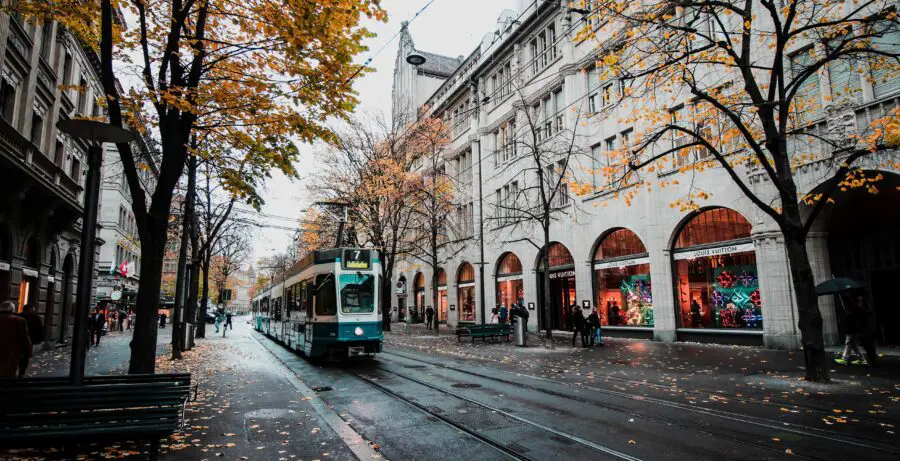
If you’re planning to travel Europe in the fall, click here for my Europe fall packing list for women!
5) Marienplatz
- Website : https://www.muenchen.de/int/en/sights/attractions/marienplatz.html
Next up on your Munich walking tour is Marienplatz, a plaza that will provide you with a short break from the stunning Munich churches and aerial city views!
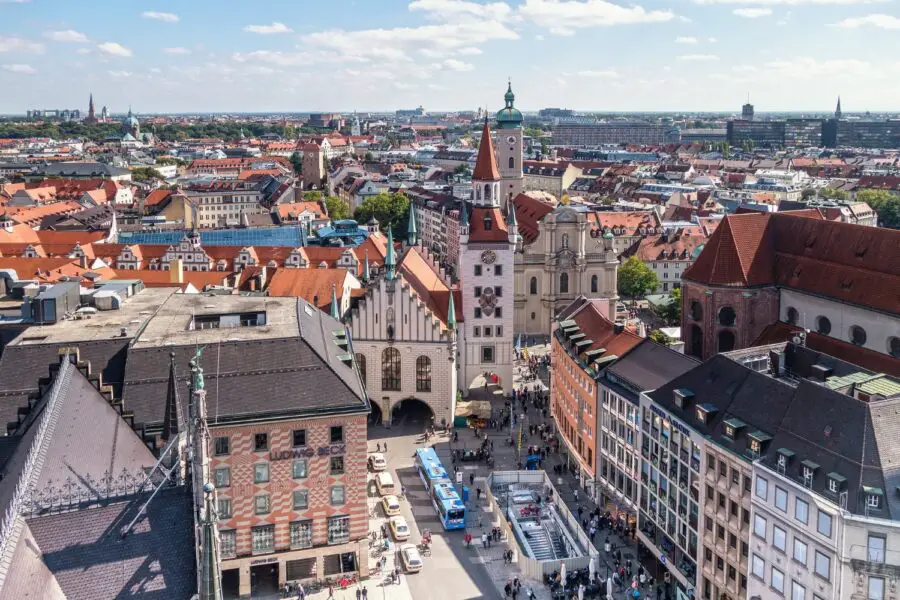
This popular square dates back to the city’s founding in 1158 . It used to be a calm intersection where monks decided to settle, giving the city its name (“monks” in German).
The area soon became the city’s marketplace, then called “Schrannenplatz” (“grain plaza”). In 1854, the market outgrew the plaza and moved to Blumenstraße. The plaza was then renamed to Marienplatz after the Virgin Mary, for helping the city overcome a cholera epidemic.
The center of the plaza is marked by Mariensaule , the Virgin Mary column. It was erected in 1638 to celebrate the end of the Swedish occupation of Munich. Its base depicts the city’s triumph over famine (the dragon), war (the lion), the plague (the basilisk), and heresy (the snake).
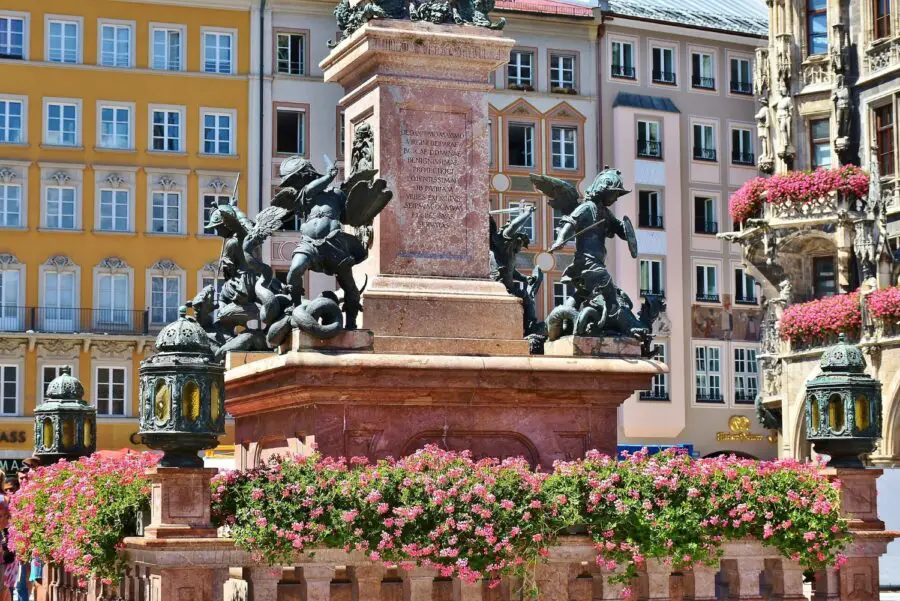
Events and Things to Do in Marienplatz
- June : Stadtgründungsfest, celebrating Munich’s birthday.
- December : a Christmas Market with 150 stalls.
- Year-round : Countless stores and restaurants — needless to say, it’s one of the best things to do in Munich on Sunday!
The Munich Marienplatz is where many of the free tours in Munich and walking tours in Munich start, so you’ll see lots of tourist groups here. The plaza itself has many interesting landmarks, which we are about to see!
6) Neues Rathaus (New Town Hall)
- Opening Hours : 10 am-7 pm Monday to Saturday, 10 am-5 pm on Sundays.
- Cost : 10 euros for tours, or 4 euros to access the tower.
- Walking Time from the Previous Stop : 0 minutes
- Website : https://www.muenchen.de/int/en/sights/attractions/new-town-hall-neues-rathaus.html
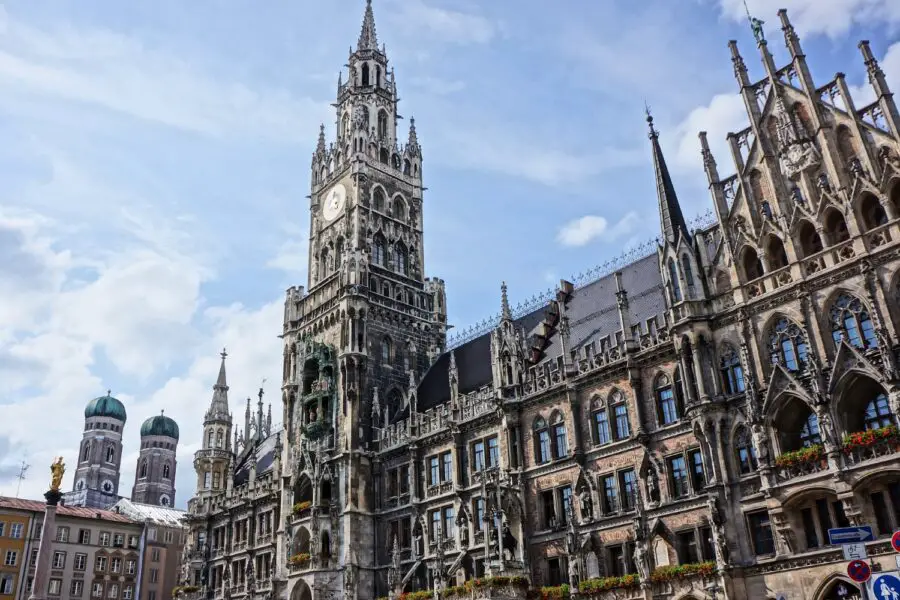
To reach the next stop on your free walking tour of Munich, just turn around and look for the Neues Rathaus right at Marienplatz! Although it’s only one building, it has plenty to offer, including some fun things to do with kids in Munich.
It was built in the late 19th century when the old town hall was no longer able to accommodate the government. And this new one sure takes care of the space issue — 12 buildings had to be demolished to make room for it! It also holds 400 rooms and takes up over 9000 square meters of space.
Surprisingly, Neues Rathaus Munich survived WWII, so the carvings you see are original. Don’t miss the “Glockenspiel,” a storytelling music box on the exterior of the tower. It is still manually operated and uses 43 bells and 32 life-sized figures to perform two historical events, including:
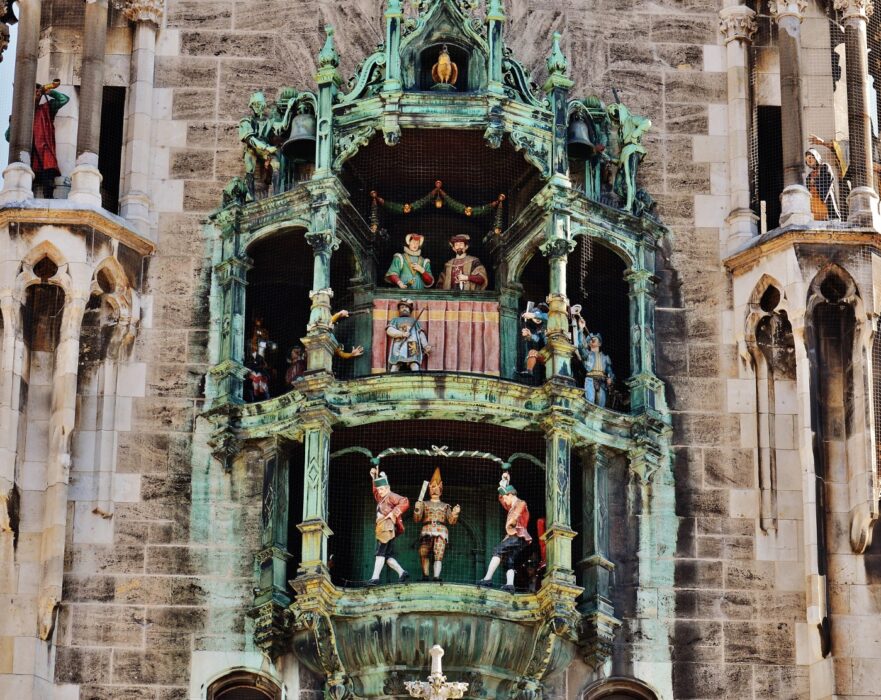
- A 1568 tournament celebrating the marriage of Duke Wilheim V to Renata of Lothringen.
- “Schäfflertanz”, or Coopers’ Dance : After the plague epidemic, the barrel makers were supposedly the first to go out into the streets, where they danced to give courage and joy to the fearful citizens.
The show lasts about 15 minutes. It’s performed daily at 11 am and 12 pm, so make sure you’re there for the show!
Before you turn away, look all the way up to the top of the tower and wave hello to “the Munich child”, aka “ Münchner Kind .” This symbolic representation of Munich has had a prolific advertising career, as it’s been featured in Munich commercials for virtually everything under the sun.
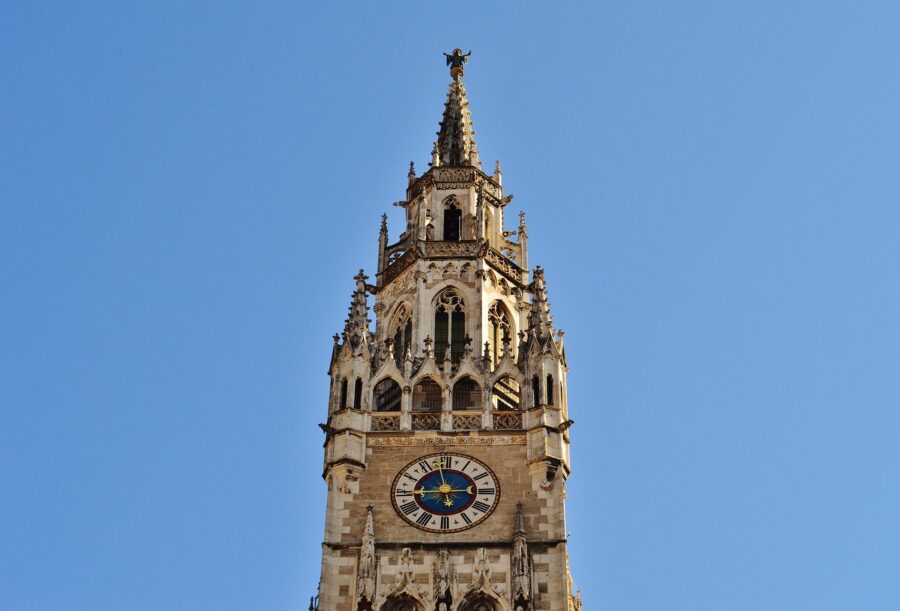
The New Town Hall also offers several other things to do, including
- A 90-minute tour.
- A tourist office on the ground floor.
- An 85-meter-tall tower with a great view of the old town of Munich.
- Marienhof, a small garden at the back.
- The Ratskeller restaurant in the basement.
7) Altes Rathaus (Old Town Hall)
- Opening Hours : 10 am-5:30 pm daily (for the Toy Museum).
- Cost : 6 euros for the Toy Museum.
- Walking Time from the Previous Stop: 1 minute
- Website : https://www.muenchen.de/int/en/sights/attractions/altes-rathaus.html
Now that we’ve admired the New Town Hall, it’s time to check out the Old Town Hall! Walk over to the eastern end of Marienplatz to find Altes Rathaus, Neues Rathaus’ predecessor.
The building goes back as far as 1310 . But it has been damaged and rebuilt so many times that it has practically worn every architectural style since its founding. Its most recent restoration after WWII has brought it full circle to its original Gothic design . And with its plain façade, the Old Town Hall look more modern than the ornate New Town Hall Munich!
Altes Rathaus has a dark side as well. It was the location of the hate-filled speech by Joseph Goebbels that inspired Kristallnacht, “ the night of the broken glass” in 1938 . This is considered to be the start of the Holocaust.
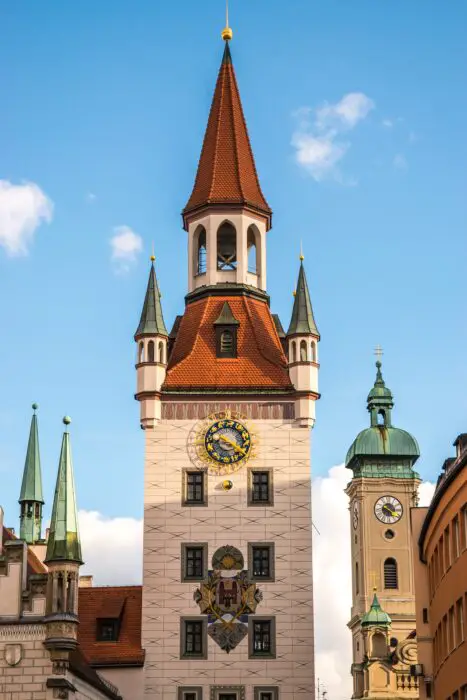
Other things you can see at Altes Rathaus:
- A historic toy museum located on over 4 floors of the tower (it’s one of the best things to do in Munich with kids!).
- A ballroom on the second floor with an impressive ornate wooden ceiling.
- A Juliet Capulet statue on the side of the building, gifted to Munich by Verona in the 1970s.
8) Peterskirche (St. Peter’s Church)
- Opening Hours : 9 am-6 pm Monday to Friday, 10 am-6 pm Saturday and Sunday.
- Cost : Free for the church, 3 euros for the tower.
- Website : https://www.muenchen.de/int/en/sights/churches/church-of-st-peter.html
Next on your Munich free walking tour is Peterskirche, the city’s oldest Catholic church dating back to the 12th century. Like many Munich landmarks, it has been reconstructed many times due to fires and wars. The inside reflects its many reincarnations with elements of the Gothic, Baroque, and Rococo styles .
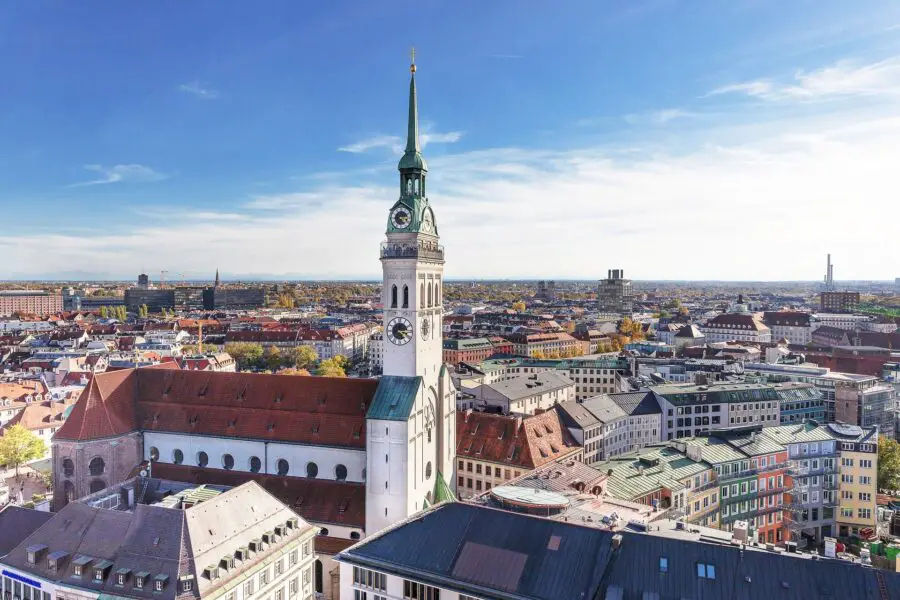
The most notable aspect of Peterskirche Munich is the second chapel, as it holds the skeleton of Saint Munditia , lavishly decorated with a crown, precious stones, and luxurious clothing. You’ll also see many beautiful works of art, though most of them are restorations.
And if you haven’t had enough bird-eye views of the city yet, you can climb the 300 stairs up the tower. On a clear day, you can see all the way to the Alps!
At the top, you’ll also find another peculiarity: no fewer than 8 clocks. The Munich-based comic Karl Valentin offered a whimsical reason as to why: “Well, of course, it’s so eight people can check the time at once!”
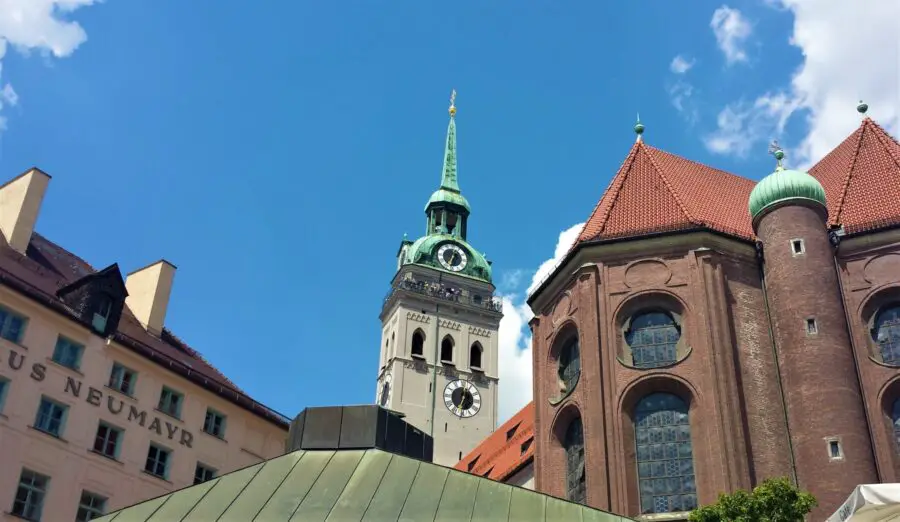
9) Asamkirche (Asam Church)
- Opening Hours : 9 am-6 pm
- Walking Time from the Previous Stop : 6 minutes
- Website : https://www.muenchen.de/int/en/sights/churches/asam-church.html
Compared to the gargantuan buildings you’ve seen so far, the 22-by-8-meter Asamkirche in München might seem ludicrously tiny. But what it lacks in size, it more than makes up for in decoration.
Through the opulent wooden door, you enter a space filled with such an excessive amount of stucco and ornamentation, it’s downright overwhelming. There’s barely an inch left undecorated.
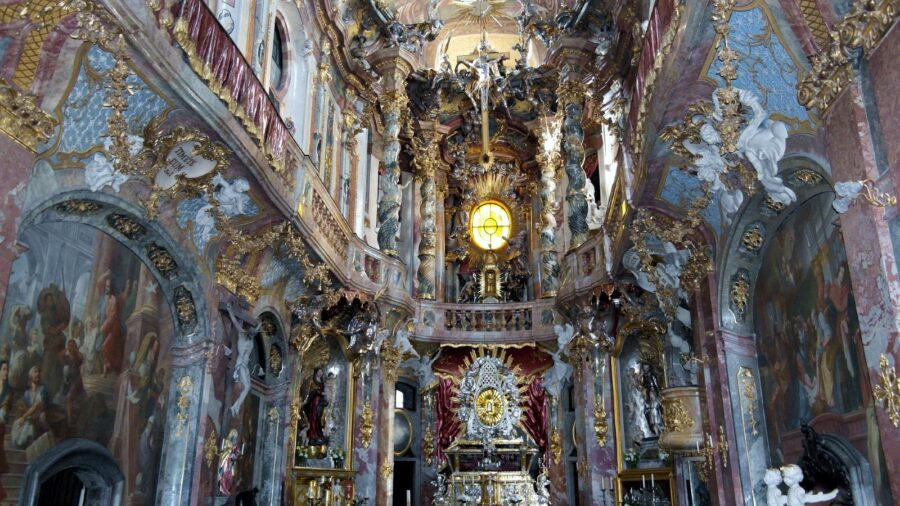
The church is divided into three vertical levels:
- The rather gloomy lower area, where visitors sit, symbolizes worldly suffering.
- The middle level, reserved for the Emperor, is decorated in white and blue.
- The top, dedicated to God, is brightly lit.
Naturally, the space gets brighter the closer to heaven it goes. The ceiling also has a lavish fresco portraying the drowning of Saint Nepomuk, to whom the church is dedicated.
10) Viktualienmarkt (Victuals Market)
- Opening Hours : Usually 8 am-8 pm Monday to Saturday, but it depends on the stall.
- Cost : Depends on what you buy.
- Walking Time from the Previous Stop : 7 minutes
- Website : https://www.viktualienmarkt-muenchen.de/
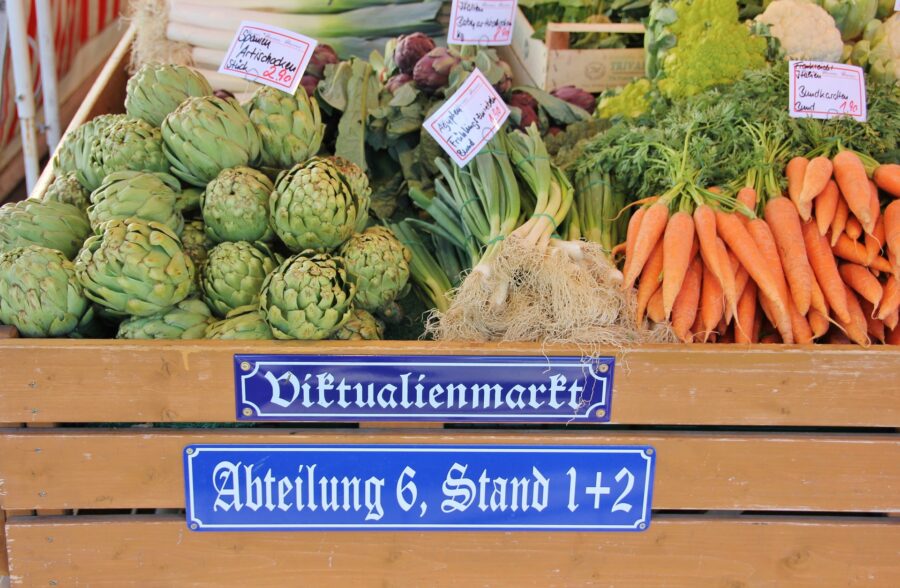
Remember how Marienplatz used to be a marketplace? Well, Viktualienplatz is where it moved.
Viktualienmarkt, from the late Latin word for food, stretches over 22,000 square meters. About 150 stalls offer everything your fridge and pantry could desire, from vegetables to fish, through spices and pastries, and even kitchen accessories and other trinkets. Every Munich food guide will recommend visiting this famous market!
Halls and pavilions were added as even Viktualienmarkt Munich started lacking in space for its eager shoppers. At the center, you’ll find an authentic Bavarian Maypole displaying aspects of life in Munich.
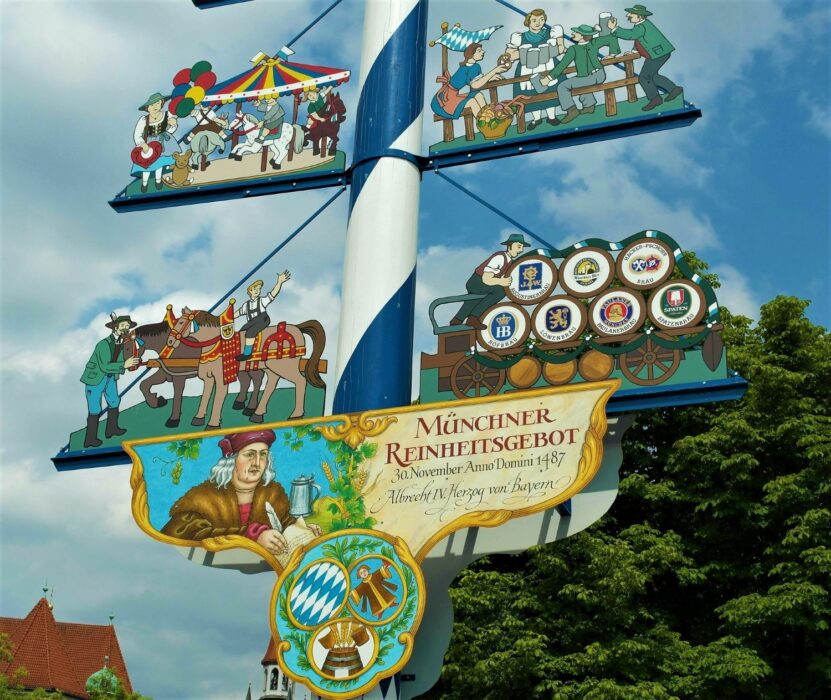
If you need to rest your feet a little, you can relax in the beer garden . Then walk around to find the fountains with statues commemorating folk singers and comedians.
11) Hofbräuhaus München
- Opening Hours : 9 am-12 am daily.
- Cost : Depends on what you order.
- Website : https://www.hofbraeuhaus.de/en/hofbraeuhaus.html
Today, we associate Germany with tall glasses of beer, but 500 years ago, Bavaria was far from being a beer nation. At the time, beer was imported from Northern Germany, and boy, was it expensive! Like any beer lover, the rulers wanted more beer for less money, and commissioned their own brewery in 1589: the Hofbräuhaus München
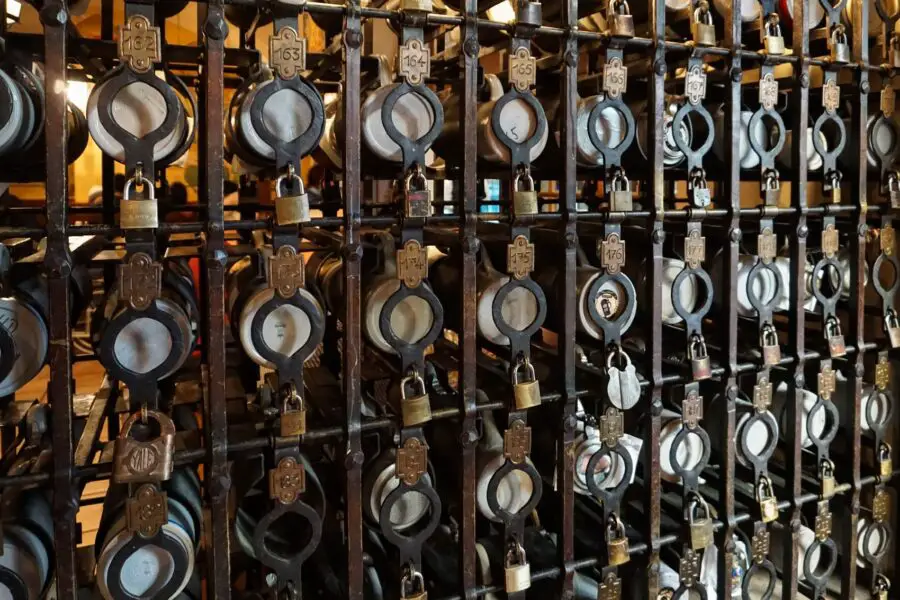
It was initially reserved for royals , and they were only allowed to brew stout and white beer. The beer hall was then added in 1897 and eventually opened to the public.
You can take a look at the glass cellar or sit down for a refreshing drink — perhaps in the very same spot where Mozart or the Empress Elisabeth of Austria once sat! Adolf Hitler presented his “25-Point Program” in this very bar as well.
You can unwind here until as late as midnight — the Hofbräuhaus is hands down one of the best things to do in Munich at night!
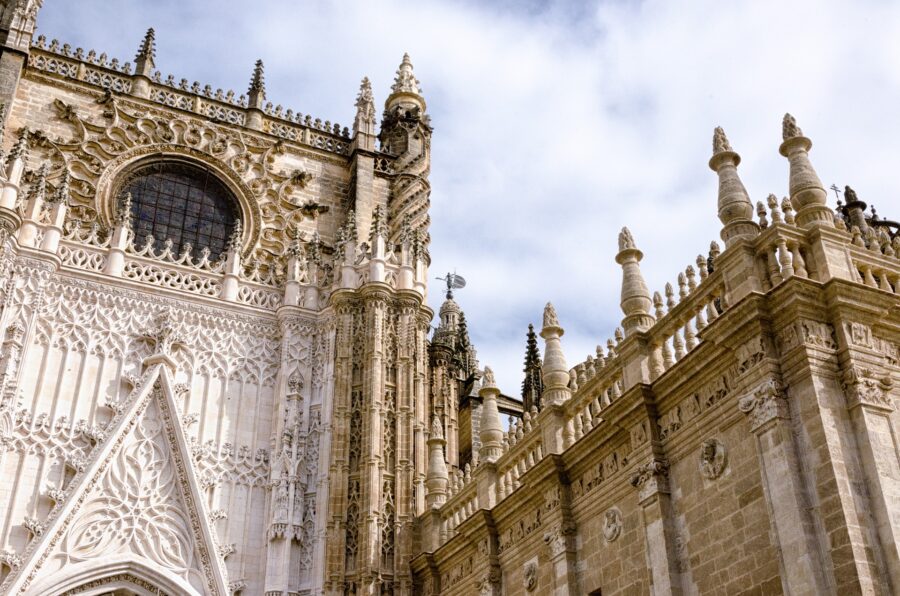
If you’re also thinking of visiting Seville, Spain, click here to read my self-guided walking tour of Seville!
Got More Time to Explore Munich?
If you have time leftover after your Munich walking tour, consider adding these things to do in Munich, located close to where your tour left off:
- National Theater
- Theatine Church
- Munich Residenz
And obviously, if you’re visiting Munich in mid-September to October, you have to check out Oktoberfest! The largest beer festival in the world, Oktoberfest is a 17- to 18-day festival where you can drink tons of beer, enjoy some rides and carnival games, and wear Trachten, the traditional outfits for Oktoberfest .
Finally, if you’re wondering what else to do in Munich, here are the top attractions not yet mentioned:
- English Garden
- Nymphenburg Palace
- Alte Pinakothek
- Neuschwanstein Castle (one of the best day trips from Munich!)
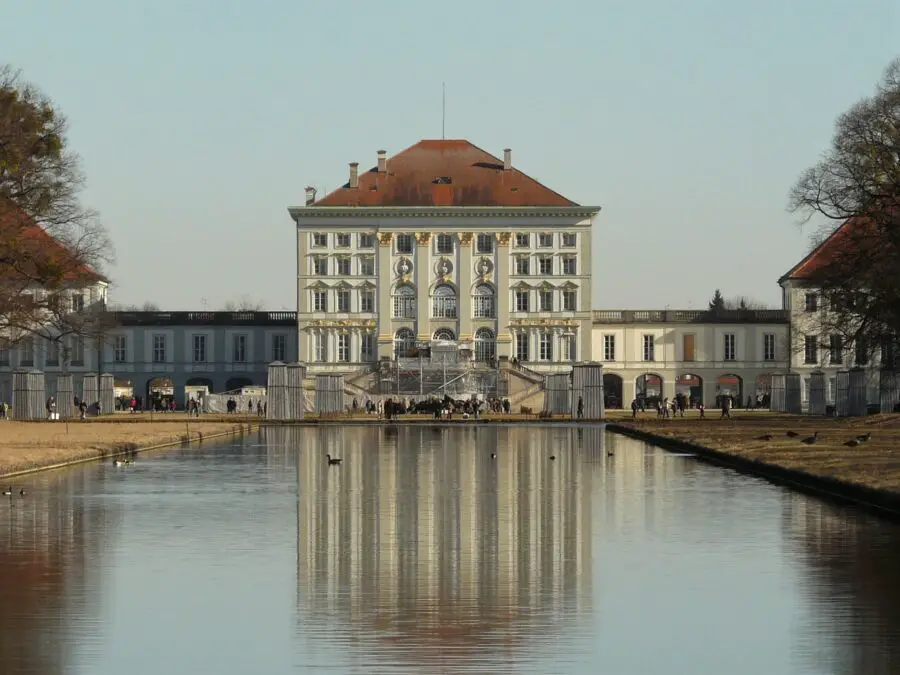
And That’s It for our Free Walking Tour of Munich!
And so we have come to the end of your free walking tour of Munich. If you have 2 days in Munich or even just 1 day in Munich, this walking tour will help you make the very best of your time. Happy exploring!
Thanks for reading the article! If you have any questions, feel free to comment down below, and if you want to see more travel and hike-related content, make sure to check out my other articles.

Photos by Mia and Pixabay.
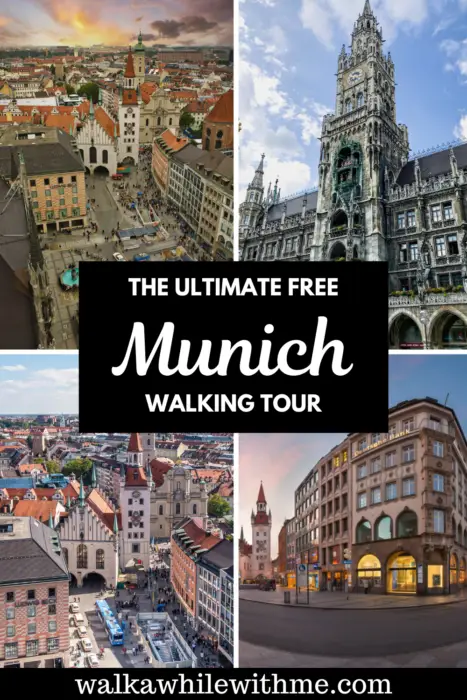
About to embark on a trip around Europe? Here are some helpful articles to make your trip as awesome and stress-free as possible:
- How to Travel Around Europe
- How to Travel Without Breaking the Bank
- 15 Things to Do Before a Trip
- My 5-Week Europe Itinerary
- The Minimalist Europe Fall Packing List for Women
- How to Start Hiking: 15 Beginner Hiking Tips
And here are some additional helpful links:
- Click here for my walking tours
- Click here for my hiking guides
- Click here for more posts on Europe
- Click here for more posts on Germany
- Click here for more resources
Like this post? Share it!
Mia is the founder of Walk a While with Me, a travel blog dedicated to sharing the best self-guided walking tours, travel itineraries, and hikes for destinations around the world. A keen traveler, she has visited more than 20 countries in the past six years. She is excited for you to follow along on her adventures!
Leave a Reply Cancel reply
Your email address will not be published. Required fields are marked *
This site uses Akismet to reduce spam. Learn how your comment data is processed .

Munich Walking Tour
Discover Munich's old town in just two hours
Quick Details
- Hour Glass Duration: 2 hours
- Clock Start Time: 10.15 am , 2 pm (Jun - Aug)
- User Ages: Ages 6+
- Book Tour Language: English
- Frauenkirche Cathedral.
- Marienplatz, the Neues Rathaus city hall and the Glockenpiel.
- Munich Hofbräuhaus Beer Hall – the world’s greatest beer palace.
- Viktualienmarkt old town market.
- Royal Munich – Munich Residenz, Hofgarten.
- The Nationaltheater – Munich’s world famous Opera House on Max-Joseph-Platz.
- Englischer Garten
- Munich and the Third Reich.
- Personal advice, tips, and recommendations on how to explore Munich further, and where to eat and drink.
Munich Walking Tour of the Old Town in English
Munich is Germany’s greatest walking city, and our Munich Walking Tour is the best way to experience it. The largely pedestrianised historic town centre can be experienced in a causual stroll. Ideal for a walking tour. Discover Munich with us on our short and comprehensive English language walking tour. We’ll walk you through the key sites in Munich’s historic Old Town, one of the most beautiful spots in Germany and Europe. See it all in just two hours in the company of one of our many experienced tour guides – the best introduction to Munich and its many attractions you can get.
Our Munich Walking Tour brings you through the past and present of Germany’s most loveable city. Munich Old Town is the beautiful medieval and baroque gateway to the Bavarian Alps. Our Discover Munich walking tour brings our home town to you. Your guide will be a long term Munich resident with an intimate knowledge of this special place. The tour takes approx. 2 hours, and is short, fun and comprehensive. We’ll guide you through the most important sites, and together we’ll visit the key historic locations, see the most famous beer halls, and hear the most interesting stories. Our professional Munich guides are welcoming, informative, and expert in helping you have fun while you discover Munich.
Discover Munich is our original Munich walking tour. Walk with is and let us help your discover Munich. We know the best way to walk you through the past and present of Munich, because we have been doing it for a long time.
Munich has so much to offer in its compact and walkable historic old town. It is made for walking tours. Beautiful medieval and baroque churches, grand royal squares and palaces, parks and riverside walkways, and also Europe’s greatest central park, the English Garden. And of course, the world’s most famous drinking spots and beer gardens. There is a reason why Munich, the home town of Oktoberfest, is known as the world capital of beer. Even in Germany, Bavarian beer is considered the best. Your guide will tell you why.
At the conclusion of the tour, your tour guide will be there to give personal advice: the best shopping around Marienplatz, the best traditional Bavarian places to eat and drink, their personal favourite attraction to visit, and so on. Just ask!
Some other great tours of Munich and Bavaria:
- Chevron down Neuschwanstein Castle Day Trip.
Neuschwanstein Castle is “mad” king Ludwig’s fairytale castle in the Alps. A must do tour. Neuschwanstein is Bavaria’s most famous attraction.
Book Neuschwanstein Castle here .
- Chevron down Salzburg Day Trip.
Travel just across Austria’s border with Bavaria for a sightseeing day in Salzburg, one of Europe’s most beautiful old towns.
Book Salzburg Day Trip here .
- Chevron down Dachau Concentration Camp Memorial Site.
Travel to the former notorious concentration camp in Dachau, now preserved as a memorial site. A deeply moving and educational experience for everyone who wants to understand Germany’s tragic 20th century history.
Book Dachau tour here .
Dachau can be combined with our Third Reich walking tour .
- Chevron down Other Munich Tours and great Sightseeing opportunities.
Book our Bike Tour here .
Details of our Beer Tour here .
You can combine our Bike Tour and Beer Tour .
If you loved Neuschwanstein, you’ll really love Herrenchiemsee. Book here .
Try our day tour to historic Nuremberg .
All of the above are available as a private tour. Find out about private Munich Tours, or reserve a Private Tour of Bavaria and beyond here .
Or simply email us to find out more about of Day Trips, Oktoberfest, Private Tour offers (Berchtesgaden, English Garden, City Tours, Bavarian Beer, Third Reich Munich, Sightseeing Tours, Small-Group tours, or any of our large variety of English-speaking Day Tour packages). We are private tour specialists.
- Chevron down Why Radius Tours?
We have been giving tours for a very long time, and we are very good at it! Discover Munich, Germany’s Secret Capital, with us.
- Chevron down Why Munich?
Munich is perfect for tours. There are so many reasons to visit Munich, and so much to do in the Bavarian capital because it is such a diverse city. A mixture of modern and traditional, with beautiful urban spaces sitting alongside parks, beer gardens, riverbanks and boating lakes. You can even surf in Munich, just a short walk away from Marienplatz! Our daily tour takes you through a town with many faces: The beer capital of the world. A great centre of medieval Europe. A grand 19th century Bavarian royal capital. Thee “northernmost Italian city.” A city infused with Bavarian tradition. The most liveable city in Germany. And the notorious home of the Nazi Party.
Throughout its history, Munich has hosted kings, emperors, popes, conquerors, dictators, world famous scientists, thinkers, painters, writers and musicians. It is, however, above all a city of ordinary people. Every year, Munich attracts million of visitors who come to experience its famous warmth and sociability in its cafes and beer halls. And to go on its celebrated tours, the best in Germany!
- Chevron down Are the tours fully guided?
Yes. We give you the opportunity to explore fascinating Munich with experienced, professional guides who are long-term local residents of our beautiful city and have been giving tours for many years. During the main season, our tours runs at least once daily.
- Chevron down Is it a walking tour?
Yes. We specialise in walking tours. Our Munich walking tours cover approx. 2 km in a gentle walking pace, with lots of stops along the way. The historic centre of Munich is flat, largely pedestrianised, and very walkable. So much can be seen on our tours in an hour or two. The perfect city for tours.
- Chevron down Where do the tours begin?
All our tours meet in the Radius Tours Office, located at Dachauer Straße 4, 80335 Munich.
- Chevron down When should I be at the meeting point?
Please be at the meeting point 15 minutes before the starting time for our tours? Our tours depart promptly at the advertised time.
- Chevron down What do I need to bring for the tours?
Be sure to wear suitable clothing and comfortable shoes, as our tours mainly take place outside and on foot. For most of the year, Munich has a very pleasant climate, and perfect for tours, but it can be cold in winter, and the warm summer months experience occasional rain showers. Please consult the weather forecast before coming on our tours, and dress accordingly. We advise you to bring water on hot summer days. Our tours go, no matter what the weather.
- Chevron down Should I tip the guide?
Yes, please! It is customary to tip in Munich, and our tour guides certainly appreciate your generosity. They work hard to make our tours perfect, and tips are an important part of their income.
Related Activities
- Best Seller!
- User All ages
- Clock 9.15 am, 10 am
- Hour Glass 10 hours
Neuschwanstein Castle Tour
Our Neuschwanstein Castle Tour from Munich takes you to a magical place. It’s an unforgettable experience!
- User Ages 6+
- Clock 9.00 am
- Hour Glass 9.5 hours
Salzburg Tour: Munich to Salzburg Day Trip
The beautiful Salzburg lies in the heart of wonderful mountains and is especially known for its most famous citizen, Wolfgang Amadeus Mozart.
- User Minimum age is 13. There are no exceptions possible
- Clock 9 AM, 10.15 AM & 12.15 PM (Depending on the month)
- Hour Glass 5 hours
Dachau Concentration Camp Memorial Site Tour
Our Dachau Concentration Camp Memorial Site Tour gives you interesting and moving insights into a historical monument to one of the cruelest crimes in human history.

About Munich
Within Germany there are a large number of high quality tourist destinations, totally recommended for those visitors who want to discover the purest German essence. The capital of Bavaria is a clear example of this, a city where tradition, culture and the best of environments come together to offer a unique experience. An enclave north of the Alps that means "in the place of the monks", in reference to the monacal settlement of the early tenth century. To speak of Munich is to refer to the most typical German customs , such as its exceptional beer and exquisite cuisine that have their maximum representation in Oktoberfest. In this city the breweries -The mythical Hofbräuhaus-, the monuments, the architecture and the culture help to form a really enviable tourist offer. Next to a tasty gastronomy such as the "Kartoffelsalat" potato salad or the "Dampfnudeln" fritters or the typical "Weisswurst" white sausages. This town is one of the most important destinations in the country, both for its important weight in the German economy, and for the wide cultural and leisure offer that is in it throughout the year. The best way to tour the city is to sign up for a free walking tour in Munich , an excellent opportunity to make the most of your stay in this beautiful town, where you can see such important places as your center "Marienplatz" typical meeting point. Other essential places to see are the new town hall “Neues Rathaus” or the Odeon Square “Odeonsplatz”, as well as the Cathedral of Our Lady in Munich . Museum lovers have the "Deutsches Museum", the Old Pinacoteca, the Gliptoteca or the Brandhorst Museum , an excellent opportunity to take advantage of the city's wide cultural offer. Other recommended visits are the beautiful “Karlsplatz” building, as well as its lively and colorful “Viktualienmarkt” market, as well as the impressive Nymphenburg Palace, of great beauty and charm. Given the immensity of this German city, it is important to concentrate the visit on the most interesting and tourist points. In this way the free tour in Munich is the best way to approach the most important, the most recommended and essential places to this beautiful Teutonic city. Other destinations where you can also find free paid guided tours with local guides are Berlin, Cologne or Dresden.
Free walking tour near Munich
Others cities to visit after munich, find other guruwalks in munich, where are you traveling to.
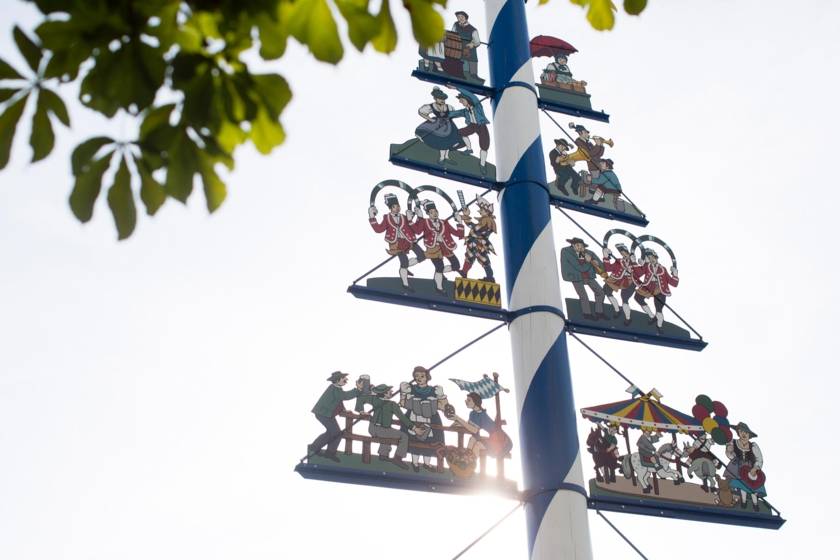
Munich City Walk and English Garden
The city tour for all those who want to get to know the most beautiful corners of Munich city centre in an uncomplicated and informative way!
Included in the price:
- 90-minute tour in English of Munich's old town
- Tuesday at 10.45 am
- Saturday & Sunday at 2.45 p.m.
- exclusively with us: free city map and 50 % discount on the official city guide
- free cancellation until 24 h before tour start
The informative tour starts at Marienplatz and leads through the beautiful historic Munich Old Town. During the entertaining tour you will discover Munich's most famous sights such as the New Town Hall , the Frauenkirche or the Hofbräuhaus .
An experienced guide informs about interesting facts about Munich and tells exciting stories about the history, the city and its people. In addition to highlights such as Maximilianstrasse , the Residenz and the Feldherrnhalle , you will learn exciting facts and amusing anecdotes about Munich. Of course, the city walk also takes you to the beautiful Hofgarten . The end point is the Viktualienmarkt , which invites you to enjoy the many specialities.
Important information
Meeting point: Please arrive in front of the Tourist Information at the New Town Hall on Marienplatz approx. 10 minutes before your tour starts.
Duration: approx. 90 minutes
Information about your booked Old Town Tour: Please show your booking confirmation printed out or on your mobile phone to your tour guide.
You will receive the free City Map and the 50% discount on the official City Guide "simply Munich" upon presentation of your booking confirmation at the Tourist Information at Marienplatz or at main station (please note the current opening hours). There you can also buy tickets. This tour can also be booked as a group tour .
Accessibility: This tour has limited accessibility - please feel free to contact [email protected] for more information.
Photos: Jörg Lutz, Sigi Müller, Luis Gervasi, Frank Stolle, Redline Enterprises
munichwalktours - Münchner Stadtführungen Hans-Mielich Str. 2 81543 München
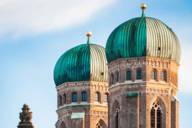
Frauenkirche: Visit of the South Tower
Book a visit to the observation deck of Munich's Frauenkirche and enjoy a 360-degree panoramic view of the city.

Viktualienmarkt Tasting Tour
Discover the most delicious delicacies of the city and learn all kinds of interesting facts about Munich's most famous food market.
Discover the most delicious delicacies of the city and learn all kinds of interesting historical facts about Munich's most famous food market.
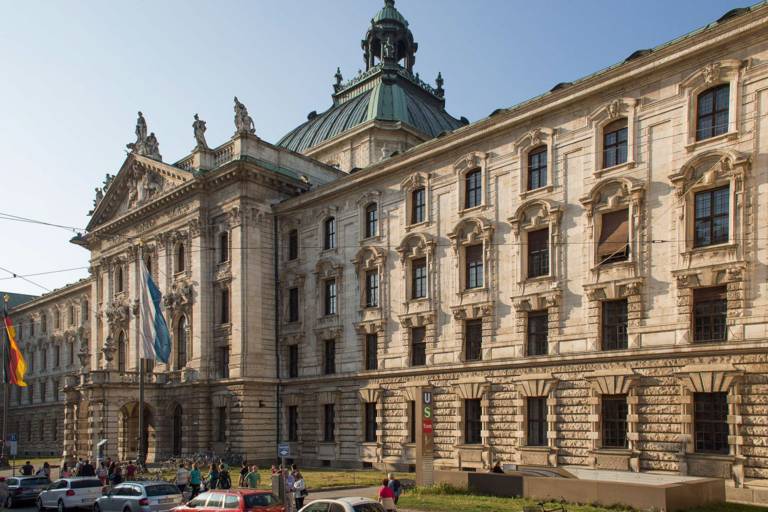
Justizpalast Tour
During the guided tour of the present-day seat of the Bavarian State Ministry of Justice, you will learn everything about the history and significance of the neo-baroque court and administrative building.
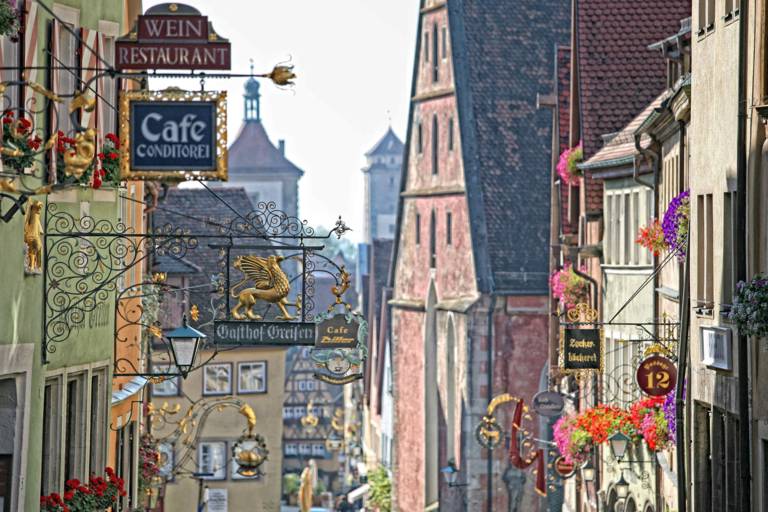
Romantic Road: Rothenburg and Harburg
Hop on and be whisked away by one of the world's most beautiful stretches of street: the Romantic Road to Rothenburg and Harburg.
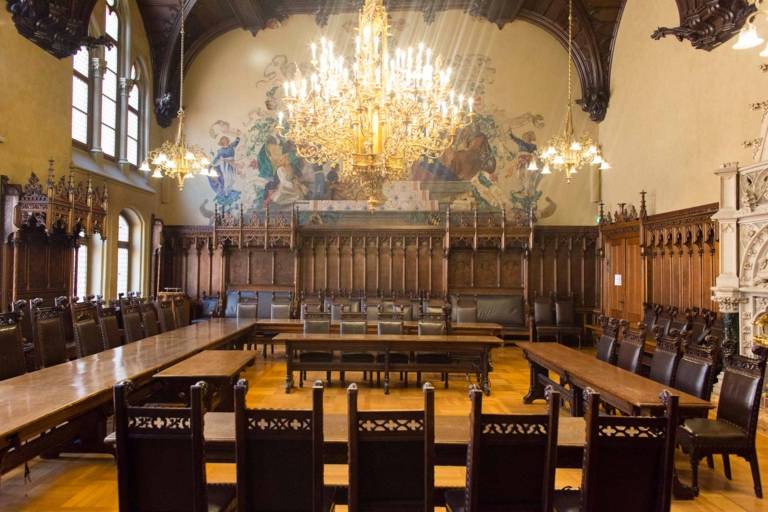
New Town Hall Tour
Explore the Neue Rathaus on Marienplatz with an official City of Munich tour guide. A visit of the famous law library is also included!
Explore the Neue Rathaus on Marienplatz with an official tour guide. A visit of the famous law library is also included!
Magistrates, Monachia and magnificent celebrations: explore the Neue Rathaus on Marienplatz with an official City of Munich tour guide. A visit of the famous law library is also included!
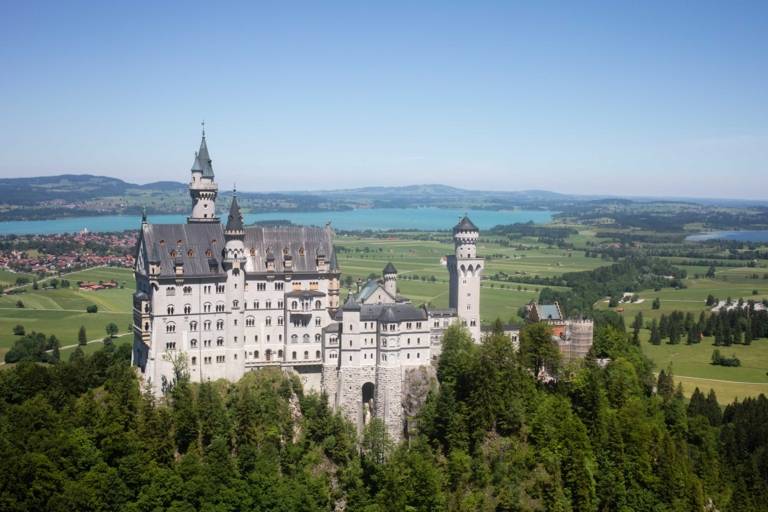
Dream castles Neuschwanstein & Linderhof
Immerse yourself in the world of the fairytale king!
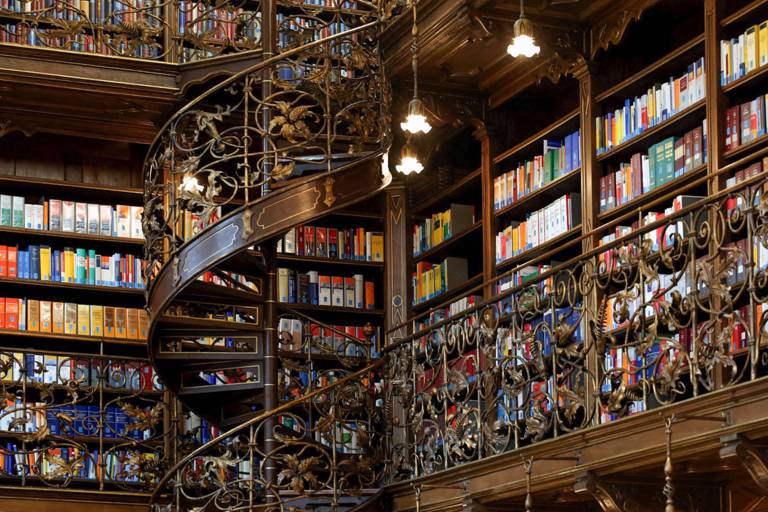
Visit of the Law Library: Juristische Bibliothek
Impressive architecture and unique ambience: discover the Law Library in the New Town Hall.
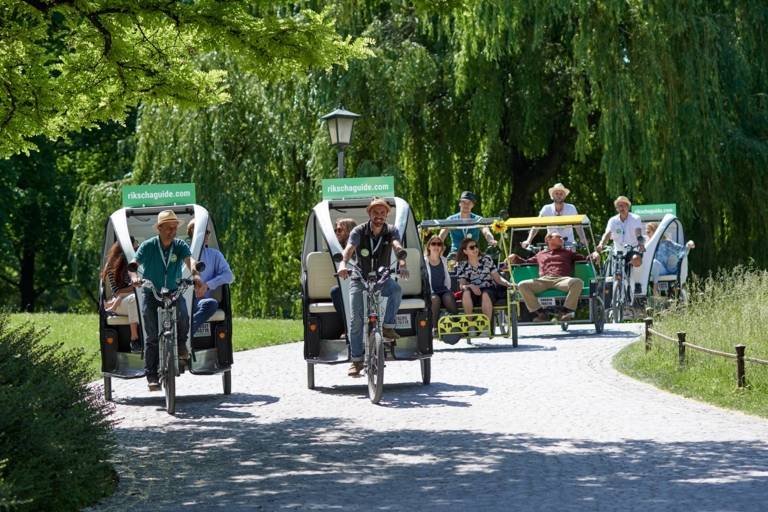
Pedicab tour through the old town and nature
Enjoy this special tour and pedicap ride past all the famous sights of Munich's old town and into the Englischer Garten.
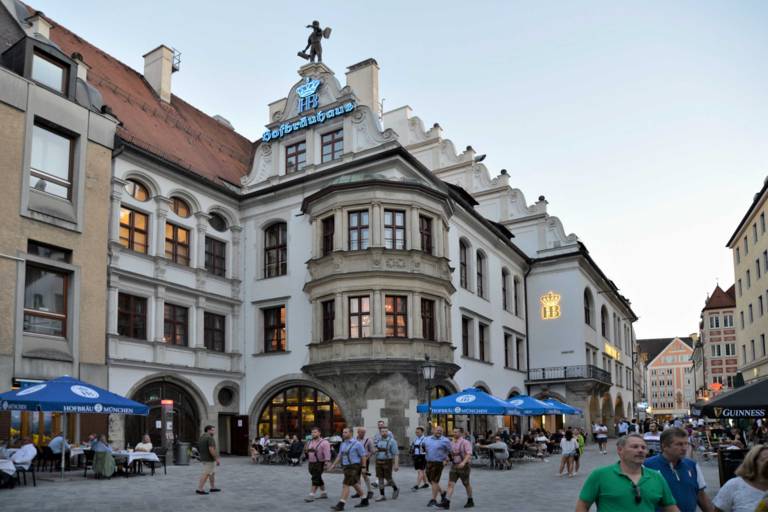
Hofbräuhaus Tour
Discover the most famous beer hall in the world with an official guide of the city of Munich and enjoy a fresh Mass of beer afterward!
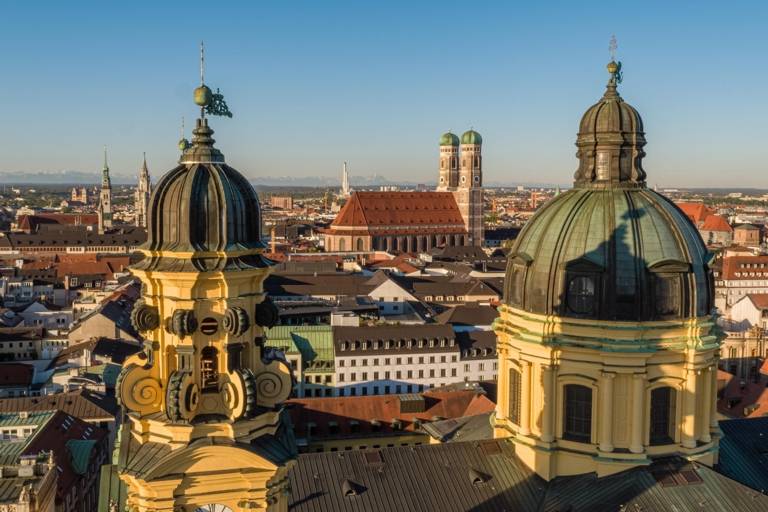
City trip incl. Munich Card and Tower Ascent
We look forward to seeing you again in Munich. Our tip: the exclusive travel package with Munich Card and Tower Ascent.
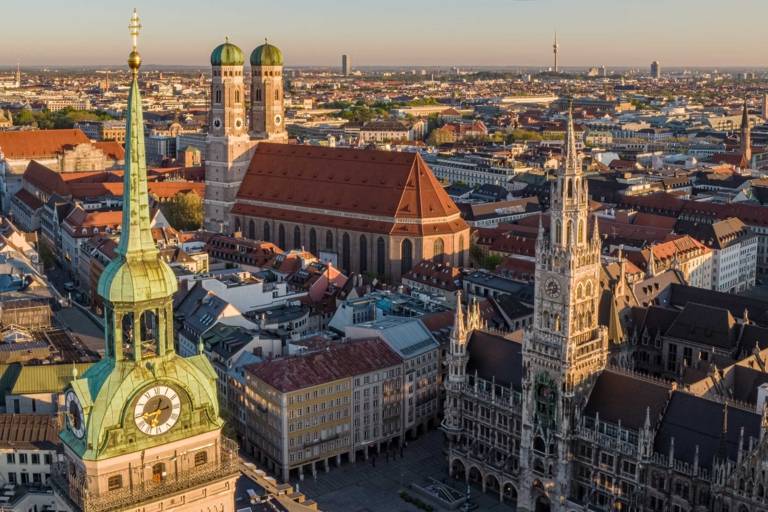
Old Town Tour
The city walk for everyone who wants to become acquainted with the most beautiful parts of Munich's city centre.
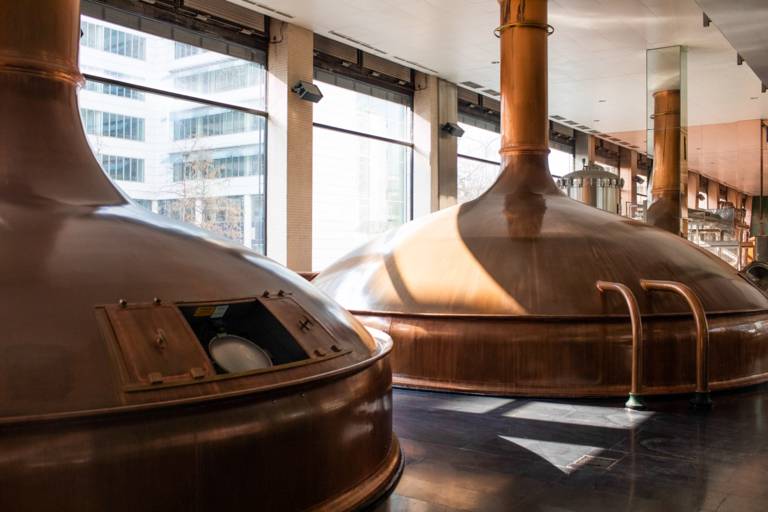
Spaten Brewery Tour
Experience a brewery tour at Spaten with a look behind the scenes, interesting facts about the company history and beer tasting in the brewery tower.
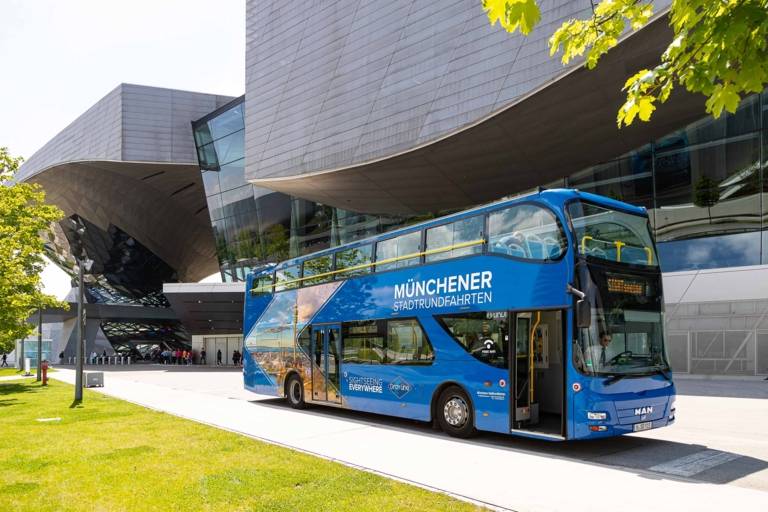
Hop-On Hop-Off city bus tours Gray Line
The hop-on hop-off city bus tours of Gray Line will let you collect unforgettable impressions of Munich.

Buy now vouchers for your visit in Munich. The ideal gift! Guided tours, guest cards and more...
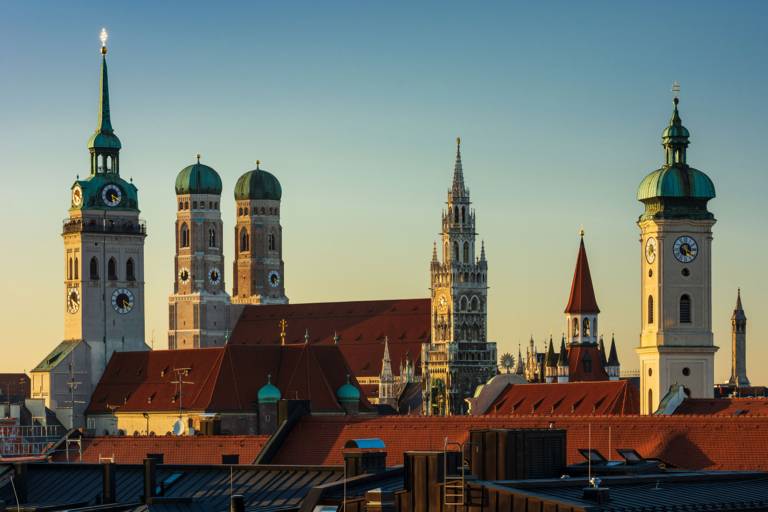
Private guided tour through Munich's Old Town
Exclusive and safe: Discover the most beautiful sights and corners of Munich's city centre with your official personal guide.
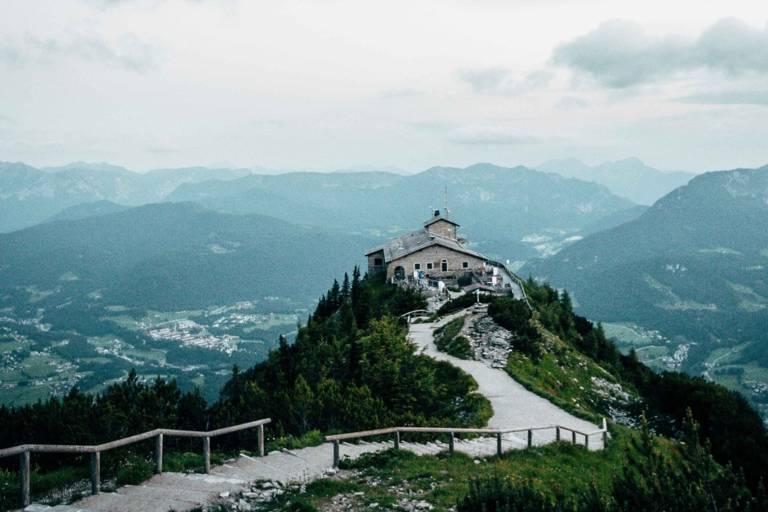
Berchtesgaden area and Eagle's Nest
The day trip takes you along the Alpine Road to Berchtesgaden area with its dreamlike scenery.
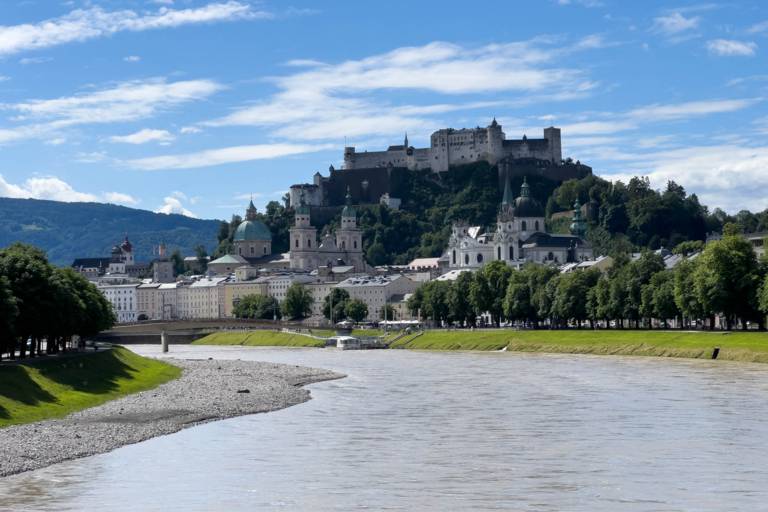
Salzburg and the Lake District
Visit the birthplace of Wolfgang Amadeus Mozart and relax on the journey to beautiful Lake Wolfgang.
Visit the birthplace of composer extraordinaire Wolfgang Amadeus Mozart, stroll through the Baroque old town and then relax on the journey to beautiful Lake Wolfgang.
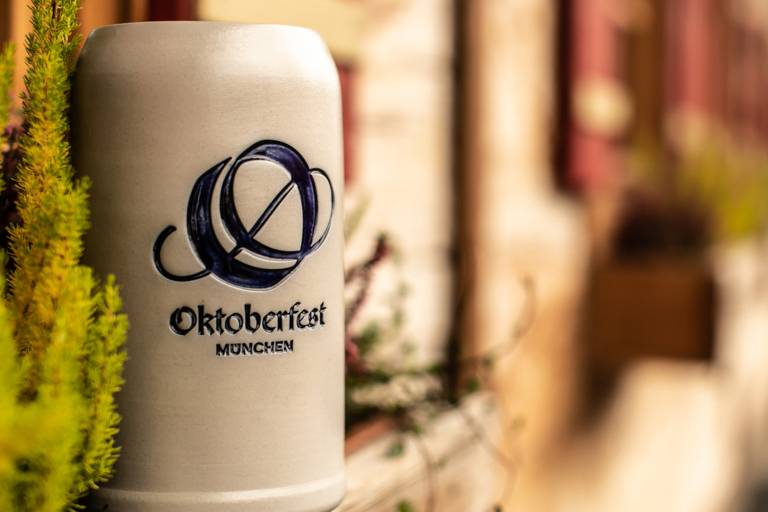
Oktoberfest Shop
Bring a piece of Oktoberfest home: Purchase official souvenirs such as the Wiesn poster or the Oktoberfest beer stein in the official Oktoberfest shop.
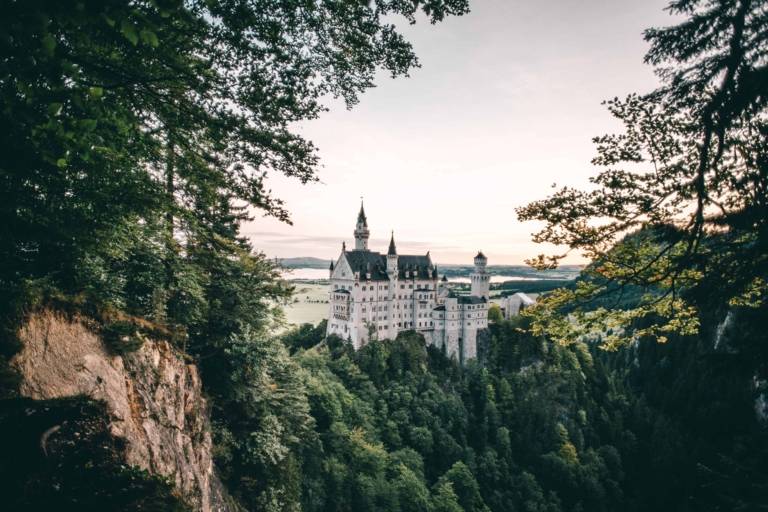
Dream castles Neuschwanstein & Linderhof VIP
As VIP in the footsteps of King Ludwig II. On this day tour in the luxurious long-distance coach of Gray Line Sightseeing you can visit both dream castles of the fairytale king.
A day tour in the luxurious long-distance coach of Gray Line Sightseeing.
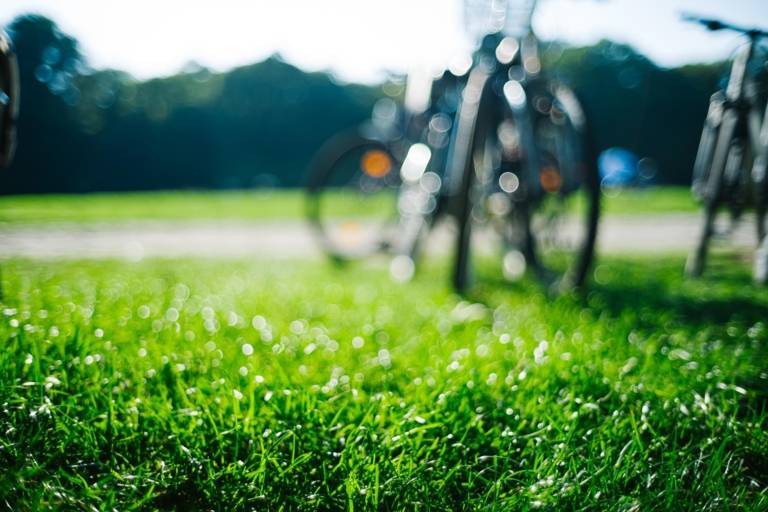
Rental bike 1 day
With a rental bike, you can experience Munich at your own personal pace. Discover hidden alleys and charming districts off the beaten track.
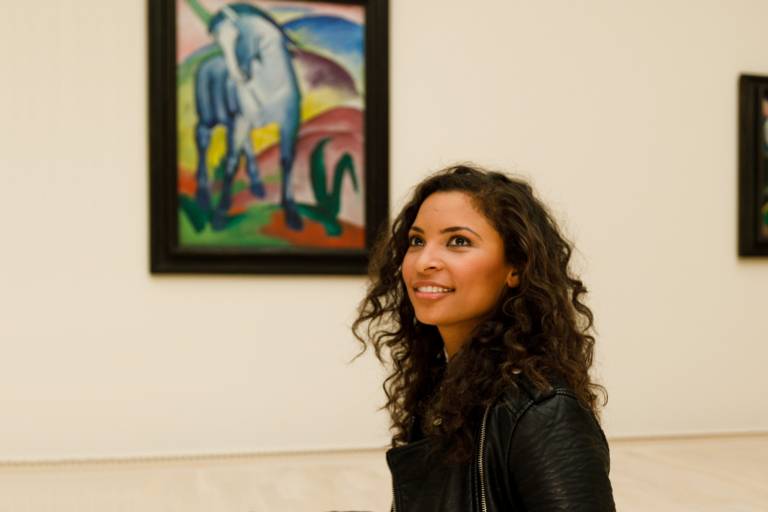
Discovery trip incl. City Pass
2 nights in your selected hotel and - thanks to the City Pass - free admission to 45 museums, sights and attractions: our travel package for explorers.
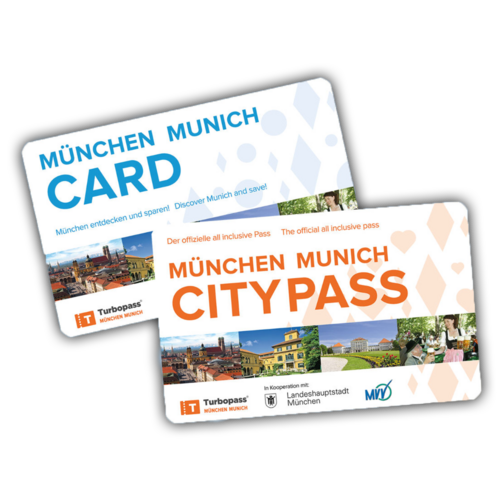
Munich Card & City Pass
Discover Munich in a relaxed and uncomplicated way: discounts for the diverse range of art, culture and leisure activities with our guest cards.
Free Public transport
Reduced or included!
Public transport is included
Many discounts with the Card, many things for free with the Pass.
Online or at the tourist information offices
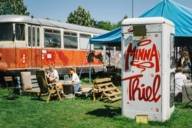
Local Love Munich
Munich's districts are diverse, contrasting and worth exploring. Immerse yourself!
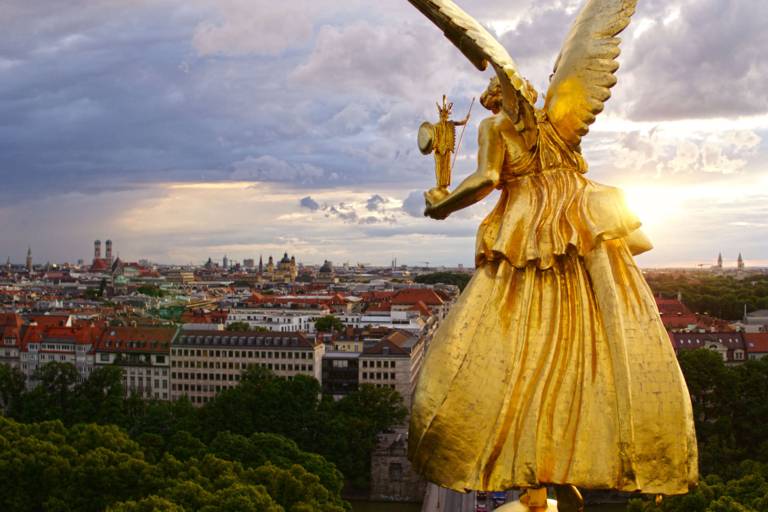
Attractions
The most important sights in munich at a glance.
Places in Munich that you should definitely visit at least once!
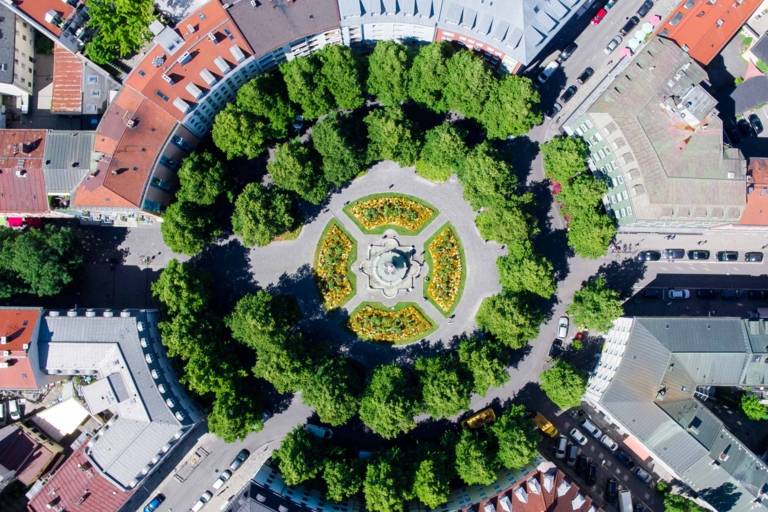
Urban & Districts
Every district a world of its own.
Schwabing bohemia, colourful diversity in the Glockenbach, village idylls in Haidhausen: an overview of Munich's districts.
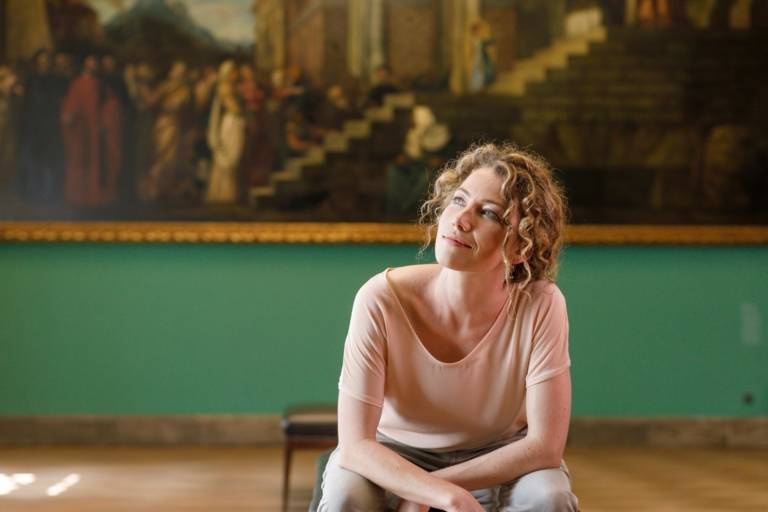
Munich Guides
The best tips for your stay.
Relaxation, culture, gastronomy: our suggestions for an unforgettable visit to Munich.
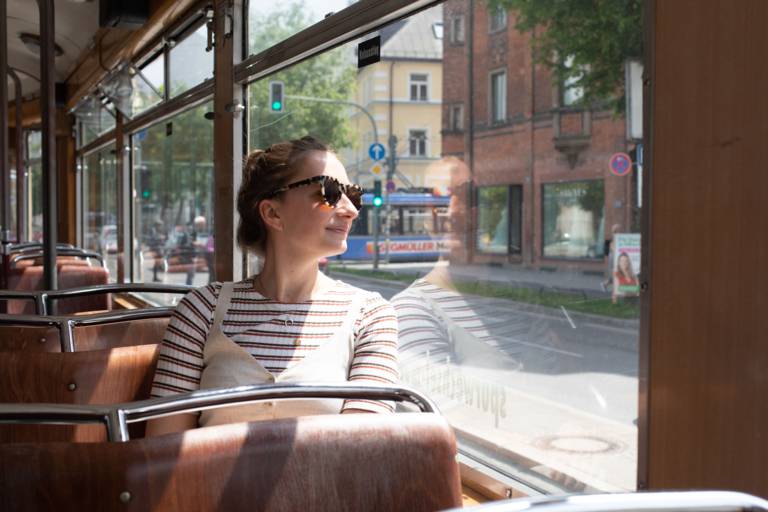
Holiday in the own city
Our author has been a travel blogger. Now she is discovering her own city.
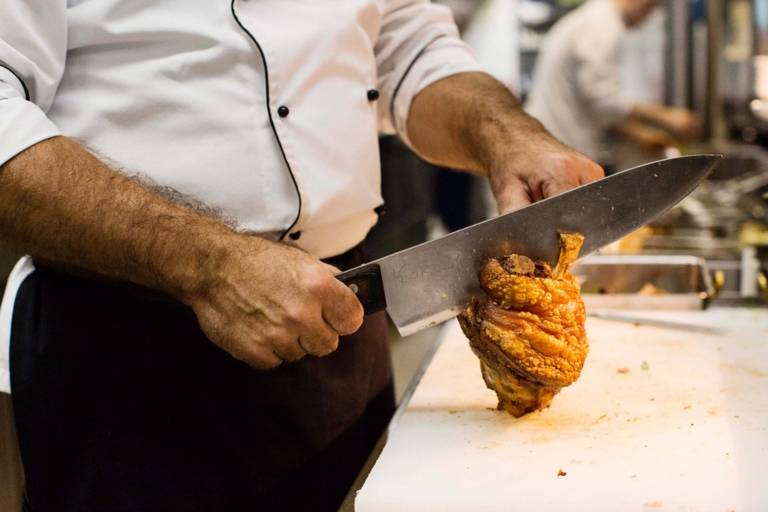
Eat & Drink
Greetings from the munich kitchen.
Munich is a city full of tradition - of course also from a gastronomic point of view. An overview.
Munich is full of tradition - of course also from a gastronomic point of view. A tour through the kitchens of the city.
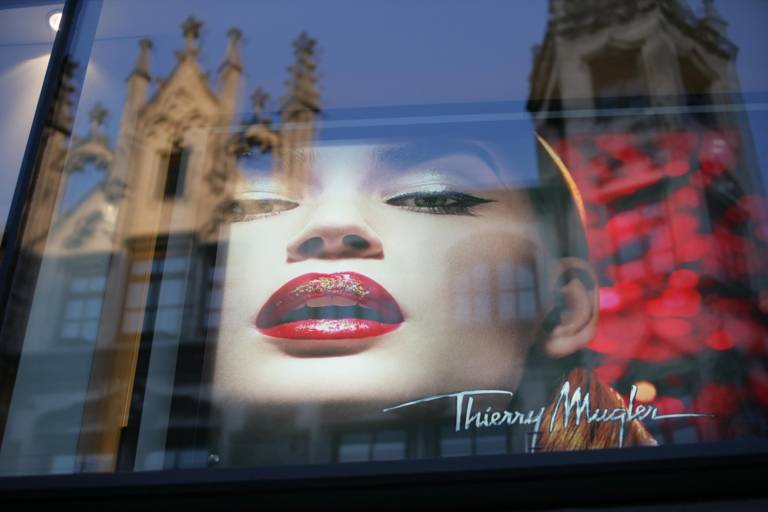
Shopping & Design
Munich is a true paradise for shopping.
A successful city trip should include an extensive shopping spree.
A successful city trip includes an extensive shopping spree: Munich offers almost heavenly conditions!
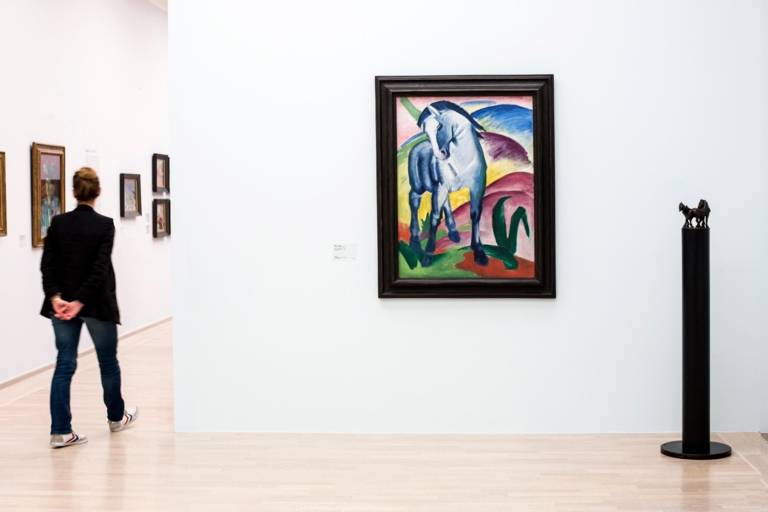
Arts & Culture
Munich's museums.
Munich's most important museums, galleries and collections at a glance.
Munich is pure cultural pleasure! We present the most important Munich museums, galleries and collections at a glance.
- Book excursions
- Book the Munich-Card
- Book guided tours
Find your hotel now
Travel date
- About munich walk tours
- Tours in English
- Tours in German
- Private Group Tours
- Tours Privados en español
- Meeting-Point

Third Reich Tour (Hitler´s Munich)
<< Back to the overview
Start time:
Febr. 1st- March 31st
Tu + Th + Sa + Su 10:30 am
April 1st – April 3oth
daily 10:10 am
May 1st – Oct. 31st
daily at 10:10
Th + Fr + Sa + Su 02:50 pm
Nov. 1st – Dec. 31
daily at 10:30 am
no tour on Dec 24th + 25th + 31st. + Jan 1st.
Jan. 2nd – Febr. 29th
2,5 – 3 hours
27,00 € und 25,00 € for <26 and 67+
children under 12 are free
Yes, please. Although our guides are paid, it is still customary in Munich to tip your tour guide as it is an important part of the guide’s income.
Tour language:
Meeting point:
The tour starts on Marienplatz right in front of the Tourist Information for the City of Munich in the Gothic town, see map on page meeting point.
Private tour:
Are you looking for a more personalised Third Reich tour with your own guide and starting time of your choice?
Would you like to get picked up from your hotel?
Would you like us to make a restaurant reservation?
Whatever you like, we can arrange it: Private Third Reich Tour (Hitler´s Munich)
In 1919, Germany was emerging from World War I as a defeated and humiliated nation with Munich in the grips of hyperinflation and Bavaria dominated by revolution and assassination. Out of this fertile soil of chaos rose the Nazi movement and one of history‘s most powerful dictators, Adolf Hitler. Join us to explore the dark side of Munich’s history as the birth place of Nazism. Follow the growth of the movement from its first mass meeting at the Hofbräuhaus, to its failed attempt to seize power at the Feldherrnhalle.
We take you to the site of mass party rallies at Königsplatz and stop in the Hofgarten to talk about The White Rose resistance movement. The tour covers all important facts and sites that played a role in the origin of this dark chapter, that ended with the beautiful city of Munich in ruins.
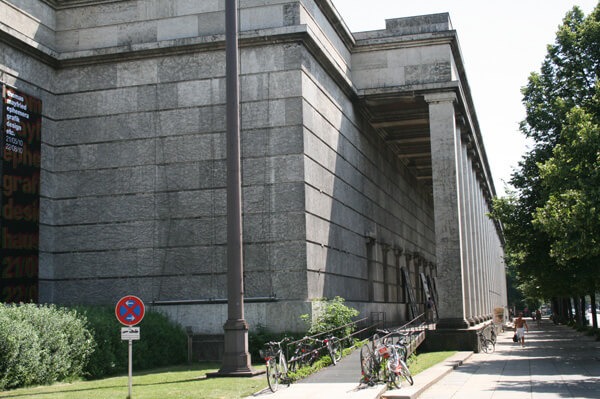
- Your current location
Price per liter
Your route preferences.
- Today's news
- Reviews and deals
- Climate change
- 2024 election
- Fall allergies
- Health news
- Mental health
- Sexual health
- Family health
- So mini ways
- Unapologetically
- Buying guides
Entertainment
- How to Watch
- My watchlist
- Stock market
- Biden economy
- Personal finance
- Stocks: most active
- Stocks: gainers
- Stocks: losers
- Trending tickers
- World indices
- US Treasury bonds
- Top mutual funds
- Highest open interest
- Highest implied volatility
- Currency converter
- Basic materials
- Communication services
- Consumer cyclical
- Consumer defensive
- Financial services
- Industrials
- Real estate
- Mutual funds
- Credit cards
- Balance transfer cards
- Cash back cards
- Rewards cards
- Travel cards
- Online checking
- High-yield savings
- Money market
- Home equity loan
- Personal loans
- Student loans
- Options pit
- Fantasy football
- Pro Pick 'Em
- College Pick 'Em
- Fantasy baseball
- Fantasy hockey
- Fantasy basketball
- Download the app
- Daily fantasy
- Scores and schedules
- GameChannel
- World Baseball Classic
- Premier League
- CONCACAF League
- Champions League
- Motorsports
- Horse racing
- Newsletters
New on Yahoo
- Privacy Dashboard
Myles Kennedy Announces New Album and 2024-2025 Tour, Unveils “Say What You Will”: Stream
- Oops! Something went wrong. Please try again later. More content below
The post Myles Kennedy Announces New Album and 2024-2025 Tour, Unveils “Say What You Will”: Stream appeared first on Consequence .
Myles Kennedy has announced a new solo album, The Art of Letting Go , arriving October 11th. The singer-guitarist — best known as the lead vocalist in both Alter Bridge and Slash Featuring Myles Kennedy and The Conspirators — also offered up the video for the lead single “Say What You Will.”
The track is a driving hard rocker that verges on glam metal, with a lowdown groove riff and a gritty vocal from Kennedy. He and his bandmates (Zia Uddin on drums and Tim Tournier on bass) also appear in the School of Rock -style video clip, playing the role of middle-school faculty members who encourage a timid student to perform a rock set at the talent show.
Get Myles Kennedy Tickets Here
Kennedy appears to be ramping up his solo activity now that his bandmates in Alter Bridge are busy with the current Creed reunion. The singer is set to support The Art of Letting Go with an extensive UK/European tour to close out 2024, and a leg of North American dates in 2025.
The stateside run kicks off on January 17th in Joliet, Illinois, and wraps up February 21st in Spokane, Washington. The route hits major markets such as Dallas and Los Angeles, and Tim Montana will support all dates.
An artist pre-sale for the North American shows begins today (June 11th) at noon ET / 9 a.m. PT using the code KENNEDY via Ticketmaster , with a Live Nation pre-sale starting Thursday (June 13th) at 10 a.m. local time using the code CHORD . Fans can also look for deals or get tickets to sold-out dates via StubHub , where your purchase is 100% guaranteed through StubHub’s Fan Protect program.
Stream the video for “Say What You Will” and see the album art and tracklist below.
The Art of Letting Go Artwork:
The Art of Letting Go Tracklist: 01. The Art Of Letting Go 02. Say What You Will 03. Mr. Downside 04. Miss You When You’re Gone 05. Behind The Veil 06. Saving Face 07. Eternal Lullaby 08. Nothing More To Gain 09. Dead To Rights 10. How The Story Ends
Myles Kennedy’s 2024-2025 Tour Dates: 10/27 – Hamburg, DE @ Gruenspan ^ 10/28 – Copenhagen, DK @ Pumpehuset ^ 10/30 – Gothenburg, SE @ Valand ^ 11/01 – Stockholm. SE @ Debaser ^ 11/02 – Oslo, NO @ John Dee ^ 11/05 – Berlin, DE @ Columbia Theater ^ 11/07 – Warsaw, PL @ Club Progresja ^ 11/08 – Prague, CZ @ Palac Akropolis ^ 11/10 – Budapest, HU @ Akvarium Klub ^ 11/11 – Vienna, AT @ Arena ^ 11/13 – Milan, IT @ Alcatraz ^ 11/14 – Zurich, CH @ X-Tra ^ 11/16 – Munich, DE @ Technikum ^ 11/17 – Luxembourg, LU @ Rockhal ^ 11/19 – Frankfurt, DE @ Zoom + 11/20 – Tilburg, NL @ 013 + 11/22 – Cologne, DE @ Kantine + 11/23 – Paris, FR @ Le Cabaret Sauvage + 11/25 – Glasgow, UK @ SWG3 # 11/27 – Manchester, UK @ Academy # 11/29 – Nottingham, UK @ Rock City # 11/30 – Birmingham, UK @ O2 Academy Birmingham # 12/02 – Cardiff, UK @ The Great Hall, Cardiff Uni Students Union # 12/03 – London, UK @ O2 Forum Kentish Town # 12/05 – Dublin, IE @ The Academy + 12/06 – Belfast, IE @ Limelight + 01/17 – Joliet, IL @ The Forge * 01/18 – Minneapolis, MN @ Varsity Theater * 01/21 – Flint, MI @ The Machine Shop * 01/22 – Toronto, ON @ The Concert Hall * 01/24 – Uncasville, CT @ Wolf Den at Mohegan Sun 01/25 – Glenside, PA @ Keswick Theatre * 01/27 – Boston, MA @ Brighton Music Hall * 01/28 – Asbury Park, NJ @ The Stone Pony * 01/30 – Baltimore, MD @ Baltimore Soundstage * 01/31 – Charlotte, NC @ Neighborhood Theatre * 02/02 – Nashville, TN @ Brooklyn Bowl * 02/03 – Atlanta, GA @ Variety Playhouse * 02/05 – Destin, FL @ Club LA * 02/07 – San Antonio, TX @ Vibes Event Center * 02/08 – Dallas, TX @ Echo Lounge & Music Hall * 02/11 – Lawrence, KS @ Liberty Hall * 02/12 – Denver, CO @ Summit * 02/14 – Mesa, AZ @ The Nile Theater * 02/16 – Los Angeles, CA @ El Rey Theatre * 02/18 – Sacramento, CA @ Ace of Spades * 02/20 – Seattle, WA @ The Neptune * 02/21 – Spokane, WA @ Knitting Factory *
^ = w/ Black River Delta + = w/ Cardinal Black # = w/ Devin Townsend * = w/ Tim Montana
Myles Kennedy Announces New Album and 2024-2025 Tour, Unveils “Say What You Will”: Stream Jon Hadusek
Popular Posts
Phish Fan Who Ripped First Bong at Sphere Permanently Banned from Venue
Flavor Flav Orders Entire Red Lobster Menu in Effort to Save Company
The Black Keys Split with Managers Following 2024 Tour Cancelation
Kevin Costner Spent $38 Million of His Own Money to Make Horizon. It's Projected to Make $12 Million In Its Opening Weekend.
HFStival Teases Return in 2024
30 Best Albums of 2024 (So Far)
Subscribe to Consequence’s email digest and get the latest breaking news in music, film, and television, tour updates, access to exclusive giveaways, and more straight to your inbox.
Recommended Stories
Engadget podcast: recapping wwdc 2024 from apple park.
In this bonus episode, Cherlynn and Devindra brave the California heat to discuss Apple Intelligence and how it's different than other AI solutions.
The U.S. cricket team is sparking hope with an unlikely lineup of 9-to-5ers: 'We've created history already'
The U.S. men's cricket team is winning the hearts of the America — and the world.
Experts worry X's new policy on AI-generated adult content will lead to more deepfake porn
A few days after the policy update was announced, an explicit AI-generated video of rapper Megan Thee Stallion circulated on X.
The Biden administration is planning to eliminate medical debt from credit reports of millions of Americans. What could this mean for you?
The Biden administration proposed a new rule that would eliminate medical debt from credit reports. Here's what that means.
Is mall walking the summer's coolest exercise?
Mall walking is finding new (and younger) fans. Experts break down its appeal.
Oilers' Leon Draisaitl to avoid discipline for hit that took Panthers' Aleksander Barkov out of Game 2
Barkov did not play the final 9:28 of Florida's Game 2 win over Edmonton.
A beginner's guide on how to play cricket ahead of the World Cup match between the U.S. and India
Here are the basic rules to cricket to understand before the United States' next match in the World Cup.
Apple Intelligence: What devices and features will actually be supported?
More details around Apple Intelligence features, how they work and what devices will actually get them.
Amazon Prime Day 2024 is coming: Everything we know about the sale in July and Amazon deals you can shop now
We'll have all the best deals for Prime Day in July right here on Autoblog, but in the mean time, there are already plenty of savings to be had.
Modder adds the vicious Shield Saw to the original Doom
The Doom modding community has already brought a few brand-new weapons from an upcoming game to the classic original shooter.

IMAGES
VIDEO
COMMENTS
Walking Distance: 2.5 miles. Time: 90 Minutes for Walk ( Full tour 6+ hours with all stops) Fun Scale: 9.5 out of 10. Munich's compact Old Town is one of our favorite places to walk in Europe. Primarily geared toward pedestrians, the neighborhood truly is where old meets new and is a perfect setting for a free walking tour.
Directions: Continue walking along the street until you reach Sendlinger Tor, an impressive restored gate from the 14th century. There's both a tram and a metro (U-Bahn) stop here so you can whizz around Munich. To reach the Museum Quarter, take the tram to Pinakotheken, an 8-minute journey. 11. Museum Quarter.
1. Justice Palace. Start your Munich walking tour at the Justice Palace (Justizpalast). The Palace of Justice is a Neo-Baroque complex built between 1891 and 1897 by architect Friedrich von Thiersch. The Palace of Justice is one of the best-known late 19th-century landmarks in Munich.
Free Munich Walking Tours; Overview. My self-guided tour of Munich will cover a lot of significant sites in the city centre, including 12 different stops of varying historical or social importance. Here is a list of each site you'll visit on the tour, as well as a map with directions to each location.
Your Munich walking tour starts at Karlsplatz-Stachus, the most famous square in Munich. It practically connects all the city's transportation lines, making it one of the top hubs in Munich. In the mid 20th century, it reportedly had the most traffic in all of Europe! This led to a saying that spread well beyond Munich: "Da geht's ja zu ...
Start Time: 10.15 am, 2 pm (Jun - Aug) User. Ages: Ages 6+. Book. Tour Language: English. Frauenkirche Cathedral. Marienplatz, the Neues Rathaus city hall and the Glockenpiel. Munich Hofbräuhaus Beer Hall - the world's greatest beer palace. Viktualienmarkt old town market.
Custom Walk: Create Your Own Walking Tour. Sightseeing Walk: Munich Introduction Walking Tour. Sightseeing Walk: Old Town Walking Tour. Sightseeing Walk: Third Reich Munich Walking Tour. Sightseeing Walk: Old Town Souvenir Shops. Discovery Walk: City Center Shopping Walk. Discovery Walk: Schwabing Shopping Walk.
Guide Location: Germany » Munich (See other walking tours in Munich) Guide Type: Self-guided Walking Tour (Sightseeing) # of Attractions: 11 Tour Duration: 2 Hour(s) Travel Distance: 2.7 Km or 1.7 ... Choose the city attractions that you want to see and a walk route map will be created just for you. You can even set your hotel as the start ...
Moving from the insightful customer reviews, the Munich Walking Tour provides clear and engaging directions for a seamless exploration experience. The tour route spans 3 km in Munich's city center, guiding participants to historical landmarks while uncovering the city's history up to the 17th century. Along the way, participants can enjoy ...
Wander through Munich's city center and learn about its origins on this treasure hunt-style historical walking tour. Follow the route on your smartphone between landmarks like the New Town Hall and the Munich Hofbräuhaus, and enjoy 9 historical riddles to solve as you explore. Start this self-guided tour at Munich's Marienplatz.
Tue 10:40 and. Fr + Sa + Su at 14:40. no tour on 24.+31.12. approximately 2 hours. 20.00 € + 18.00€ for <26 and 67+. children younger than 12 years old are free. All ages. Although our guides are paid, it is still customary in Munich to tip your tour guide as it is an important part of the guide's income. English.
15 Bamberg. 16 Koblenz. 17 Freiburg. 18 Lübeck. 19 Rüdesheim am Rhein. 20 Augsburg. Discover the cosmopolitan and charming city of Munich on this walking tour of its historic heart, and take a break in its beautiful English Garden. See all the major attractions of the Bavarian capital at an easy pace.
English Free walking tour of Munich - Fun & informative! 1439 ratings. 4.9 Duration: 2h and 30min Starts at: 10:30 and 14:00 sun 9. mon 10. tue 11. wed 12. thu 13. fri 14. sat 15. sun 16. ... Aileen was a phenomenal tour guide! She meticulously planned a route to ensure that we have a good overview of the history and beginnings of Munich. This ...
14Regensburg. 15Koblenz. 16Bamberg. 17Freiburg. 18Lübeck. 19Rüdesheim am Rhein. 20Augsburg. Discover the Old Town of Munich with a local guide on a walking tour of the city. See the Frauenkirche, Marienplatz, and other important sights while hearing stories of the city's history and culture.
Book this tour with München Tourismus, Guided Tours. Phone: +49 89 233 30234. [email protected]. Duration two hours by arrangement | Fee €180 plus VAT if applicable | For groups of up to 25 people | Dates, meeting point and individual requests by arrangement. Price list 2024/2025 as PDF for download.
This fascinating walking tour of Munich includes the Glockenspiel, Mareinplatz, the Hofbräuhaus, Munich's Nazi past, the English Garden, and some sober stories about beer! ... After following the route of Hitler's beer hall putsch, the visitor in Munich can take the Viscardi alley used to avoid the guard placed at the site of his arrest ...
Show more. Easy • 4.2 (28) #3 - Nymphenburg Loop. Length: 3.1 mi • Est. 1h 6m. Royal Walk in Munich, Bavaria. This popular tour leads through the Nymphenburg palace complex. There you can explore the magnificent Nymphenburg Palace and Park, as well as visit the Marstall Museum.
Looking for the best walking trails in Munich? Whether you're getting ready to hike, cycle, trail run, or explore other outdoor pursuits, AllTrails has 132 picturesque trails in the Munich area. Discover hand-curated trail maps, along with reviews and photos from fellow outdoor enthusiasts. Explore one of 34 easy walking routes in Munich, with child-friendly routes for your next family outing.
E-MAIL: [email protected]. ADRESS: Ralph Luenstroth Munich Walk Tours Hans-Mielich Str. 2 81543 München Germany
Tour Duration: 2 Hour (s) Travel Distance: 2.7 Km or 1.7 Miles. Self-guided walking tour: Third Reich Munich Walking Tour in Munich, Germany. The detailed walk route map can be downloaded to your mobile device for turn-by-turn travel directions.
90-minute tour in English of Munich's old town. Tuesday at 10.45 am. Saturday & Sunday at 2.45 p.m. exclusively with us: free city map and 50 % discount on the official city guide. free cancellation until 24 h before tour start.
2025. Jan. 2nd - Febr. 29th. Tu + Th + Sa + Su 10:30 am. 2,5 - 3 hours. 27,00 € und 25,00 € for <26 and 67+. children under 12 are free. All ages. Yes, please. Although our guides are paid, it is still customary in Munich to tip your tour guide as it is an important part of the guide's income.
16 Munich Walking tours. 17 Munich Private tours. 18 Munich Night tours. 19 Munich Sightseeing walking tours. 20 Munich Bus & minivan tours. Cities in Germany. 1 Berlin. 2 Hamburg. 3 Dresden. 4 Cologne. 5 Frankfurt. 6 Leipzig. 7 Nuremberg. 8 Düsseldorf. 9 Stuttgart. 10 Heidelberg. 11 Dortmund. 12 Bremen. 13 Potsdam. 14 Regensburg. 15 Bamberg ...
ViaMichelin offers route calculations for 4 possible modes of transport: car / motorcycle / bike / pedestrian. For car and motorcycle routes you can choose from the following variants: Michelin recommended: this route option focuses on safety, simplicity and minimising any risk of route errors. This is the default route that Michelin recommends.
The singer-guitarist will be supporting the LP with North American tour dates in early 2025. Myles Kennedy Announces New Album and 2024-2025 Tour, Unveils "Say What You Will": Stream Jon Hadusek